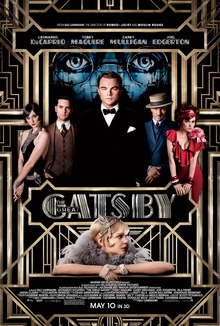
by Neville Buch | Nov 4, 2022
The Cultural Influence of the 1970s Mainstream Evangelical Conservatism
In the previous essays the organisational history of Teen Challenge Inc. has been described under the activities and intellectual headings of ‘evangelical outreach,’ ‘Christian community’, and ‘social work’ with both secular and sacred regard for the person.
Organisational Teen Challenge Inc. workers across the timelines represented the thinking, collectively, of the triangular thinking of the mission, commune valuing, and working for a better, improved, or transformed society.
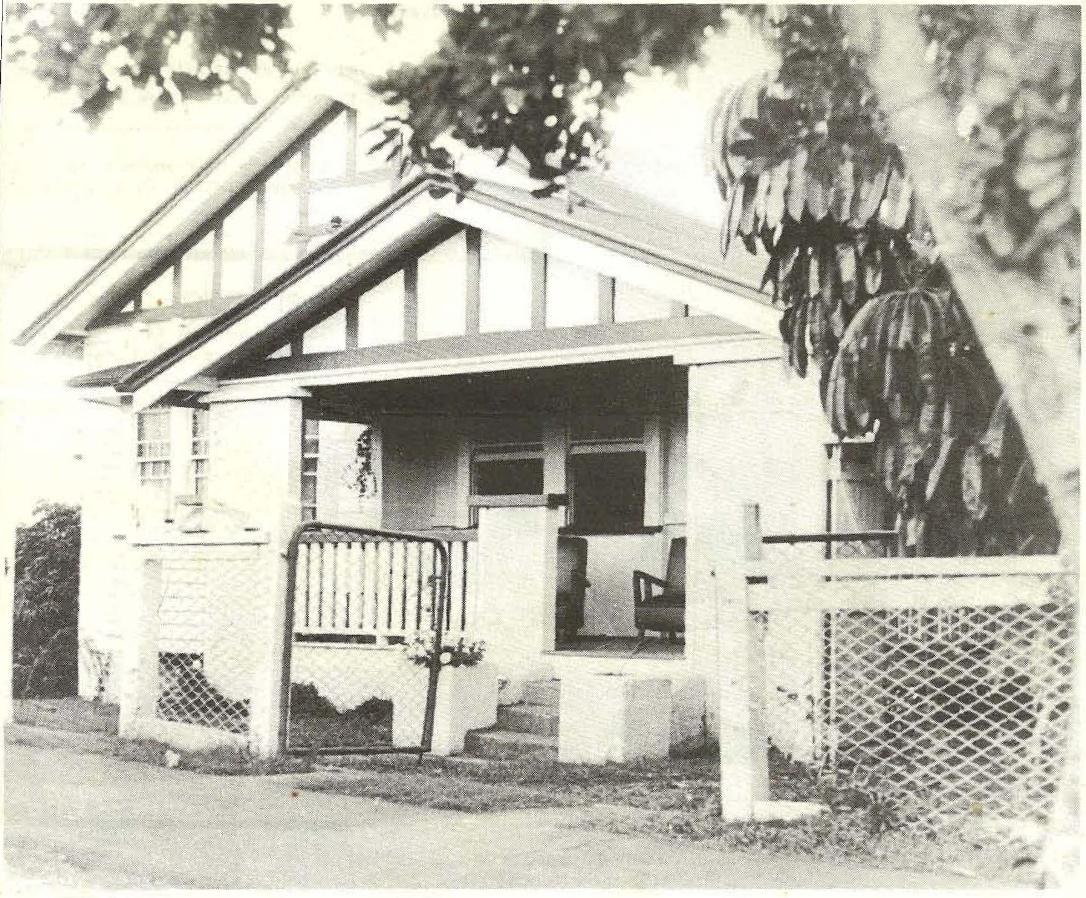
Figure 1. Teen Challenge Inc., Enoggera Terrace, Red Hill. Source: Teen Challenge Inc. (Qld)
To take a snapshot of the early days of the Teen Challenge Inc. Office, from circa 1975 to 1984, at the Woolworths Shopping Centre, 107 Latrobe Terrace, Paddington (QLD 4064). It was a centre-point in time, coming from a location usually describe in the earliest years (circa 1974-1975) as located at Enoggera Terrace, Red Hill (QLD 4059). It would have been the third ‘Head Office’ following Newmarket and South Brisbane and combined with the Rehabilitation Home at the same address. The confusion of locations might be simply a matter of suburban boundaries, but there is more at play. There is a time shift here, and there is the common geographic confusion for common office workers, possibly stuck at their desks much of the time, and/or lacking good knowledge of their surroundings. The previous office site, up to circa 1975, was Newmarket ‘around the corner’ from ‘Enoggera Terrace’ in Enoggera Road (Confusing?). One of the hardest lessons for Christian missions is understanding landscape and understanding persons in landscape. Memory is not good enough to interpret the past and testimonies need further examinations.

Figure 2. The Teen Challenge Bookshop, Newmarket. Source: Teen Challenge Inc. (Qld)
With Charles and Rita Ringma, mission is a driving force among the office workers. The Office was run in these days by John and Pat Healey, who came to Teen Challenge Inc. as workers of Youth With A Mission (YWAM). YWAM had a much stronger ethos of discipleship and evangelism than many other of the similar organisations in Brisbane. Among the YWAM literature there was a revivalist crusade theme, lacking a certain critical edge in the far more socially conscious Teen Challenge Inc. There were other early Teen Challenge workers who shared the same rough street preacher approach.
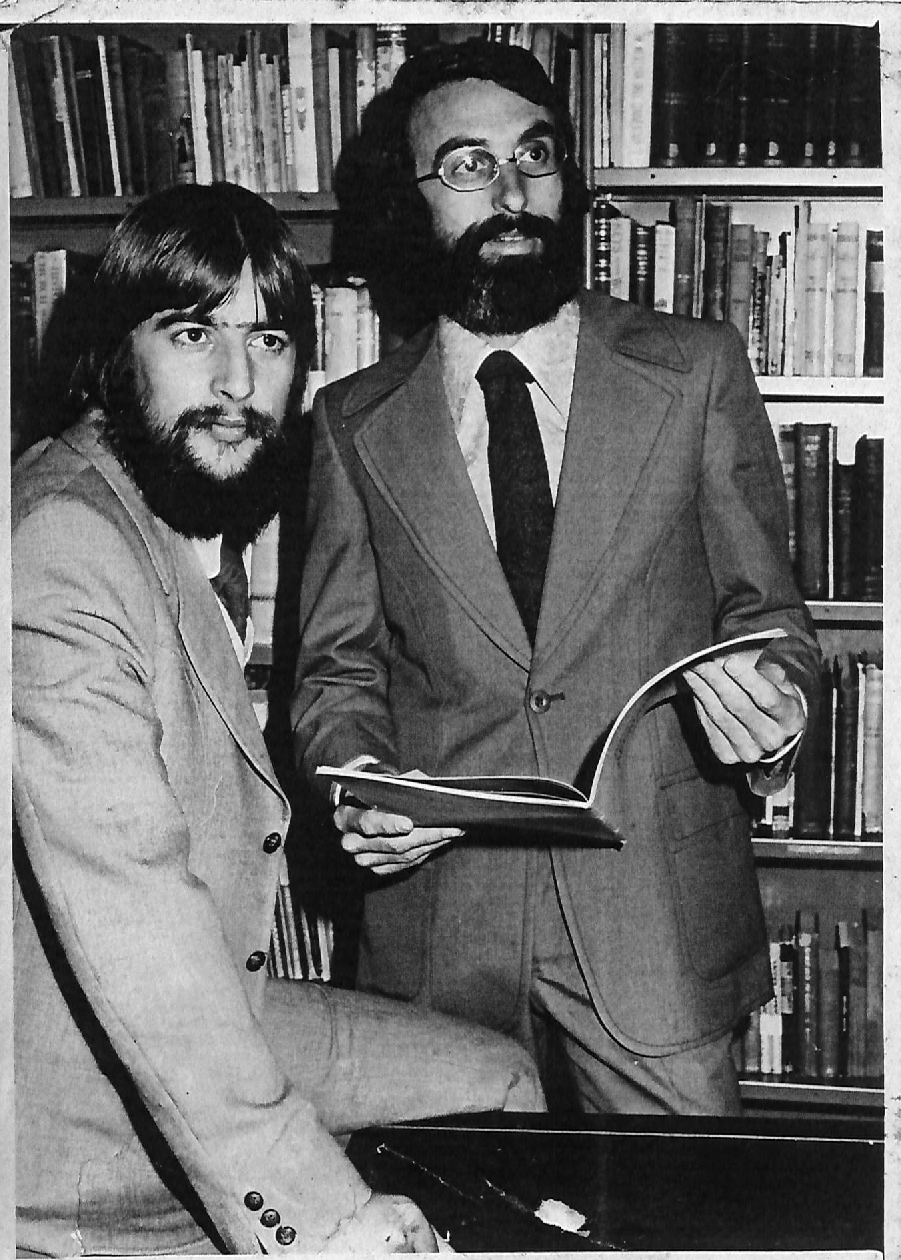
Figure 3. The Early Teen Challenge Inc. Office. Source: Teen Challenge Inc. (Qld)
The Organisational Issues of Financial Philosophy and Strategy
However, Teen Challenge Inc. was a business from day one. The fourth area of the organisation was financial philosophy and strategy to keep the business running,
Much of that work was the role of the Board of Management, and, in the early days, Board members needed to have a more hands-on approach in the Office. Henry Baskerville was the first Treasurer, for the Board of Management, Teen Challenge Inc. He was the finance man with one foot in sacred space and the other in the space for secular operations. He was the Manager at the Newmarket Commonwealth Bank, and also Vice President for Gideons in Queensland. Next came Albert Hall who formally took up the title of the Office Administrator, working closely with Charles Ringma as the Executive Director. Albert Hall was also a Board member and with his secular work connections, the Board in those days met at Shell House, Ann Street in the City (QLD 4001). The role of the Board Treasurer and Office Administrator, whether the same person or not, was as a financial advisor/bookkeeper.
Ringma modelled his directorship from Bob Bartlett, Director, Teen Challenge Philadelphia, Philadelphia, Pennsylvania, United States of America. Around Charles was a team of personable directors for different divisions of the organisational work. John Healey was the Acting Executive Director, delegated as Charles’ representative. Other Office Administrators worked in the Office in the same period, Peter Jones with Brenda Jones as an office worker, and Dennis Everett. Geoff Job was a Centre Supervisor and an office worker, with Cathy Job as a Secretary.
Office workers were conflated as volunteers and stipend paid workers. Full award wages were unheard of in the charity organisation, and it was only Christian trust that keep this small business economy going. The workforce was not unionised, not by principle but by economic necessity, and kept running by the worker’s own professional pro bono attitude. In the last half century, the arrangement has reached a critical point, with the economy being little more than the worker’s self-serving slave labour. The fact is well recognised in the industry, but conservative governments wish it away.
The Organisational Issues of Governance and Administration
The Incorporation of Teen Challenge in Queensland in 1972 would have meant that the organisation had, at least, one Legal Advisor. What is known is that Board member Graham Corney was a solicitor.
Council of Reference
The Council of Reference might have been for show, a process of legitimatization. It did not last long, and there is very little information on the Council, except for who the members were. There were media personalities, one type of showmen. Reg Leonard was probably the most powerful figure. At the time he was Chairman (1971-82) of Brisbane TV Ltd, but he held Chairmanships and Board membership across the Australian media world. Former Church of Christ minister in Annerley, Hayden Sargent started his media career at the Christian Television Association. In those days of the 1960s, he hosted a daily half-hour program, Look, for Brisbane channel TVQ0. In these early days of the 1970s, he ‘pioneered’ local talkback radio at 4BC. He also hosting a daytime talk-back television program, Heartline, produced by Reg Grundy in Brisbane for the Seven Network, and would later hosted local current affairs programs Haydn Sargent’s Brisbane for BTQ7, This Week for QTQ9 and The Sargent Report for TVQ0. His recommendation for Teen Challenge carried much local weight.
There were a few medical show-persons on the Council of Reference, political operators. Arthur Crawford had the third biggest surgical practice in Queensland, it is thought, in the late 1960s. However, his role in the long history was as the Legislative Assembly member for Wavell (1969-1977) for the Liberal Party, and in that parliamentary role a loud and harsh critic of the State Health department and of the socialised medicine. Such a loud critic’s support for Teen Challenge meant that the organisation could overcome the skepticism in the medical profession. Crawford was joined on the Council by Phyllis Cilento. Another controversial figure, the grand old lady doctor, who did had a much softer demeanour than Crawford. Cilento was the conservative progressivist for maternity and child health reforms. Her controversial reputation has returned in recent times. With her famous husband, Ray Cilento, she spoke in very white-centric terms. Although she did not have the outright racism of Ray, as it is contemporarily considered, the naive motherly adornment for racial hierarchy is little tolerated today.
There also academics and associates of the academy among the Council members. The most noted, as an academic career, was Paul Wilson, and yet to be another controversial figure. A criminologist at the University of Queensland, and later Bond University, he would be found guilty of four counts of indecent treatment of a child under 12 years in 2016 from child sex offences (allegedly) committed in the early 1970s. This was an era that Wilson was writing on policing and criminal law courts from a social justice perspective. Hypo-conservatives are extremely unhappy with these exposures from historians. Historians, those good at the profession, breaks the illusion of the good-bad binary. Unfortunately, there are readers who are want the ‘great comfort’ and seek ethical understanding in such traditional and conventional theology, which does stand up to the historical scrutiny. Again, fallible persons in the landscape must be seen. This is no less true for Teen Challenge Inc.
The rest of the Council members were still being called ‘men of the cloth’ in the early 1970s. The Rev. Dr. Charles Geoffrey Noller was an academic associate with his wife, Patricia Noller, an internationally renowned professor of psychology. Charles and Patricia Noller came from New South Wales for Charles to become the Director of Lifeline Brisbane in 1971. From his career in LifeLine, Noller became involved in Legal Aid, Drug Arm, and the Family Council of Queensland. He also became a teacher in the short-lived interdenominational Brisbane College of Theology. Most of these local religious ‘showmen’ were well-known to each other in the small township mentality of Brisbane. It is not a negative criticism, but a factor in personality type. Religion is theatre and it is performance.
On the scale of the religious hierarchy among the Council members was Felix Arnott. Archbishop of Brisbane from 1970 to 1980, the highly educated Arnott was the closest thing Queensland Anglicans had as a public intellectual, and, as such, the churchgoing ‘ratbags’ regarded him as a dangerous theological liberal. Much of the criticisms of the hypo-conservatives was socio-political, although that could not be admitted. The height in the discord arrived in Arnott’s role as a member of the progressivist the Commonwealth royal commission on human relationships. At the annual diocesan synod in June 1978 Arnott decried against the erosion of civil liberties in Queensland, and, like Charles Ringma and Noel Preston, endured the self-righteous wrath of the Nationalists.
The Protestant mainstream in Queensland were moderately liberalising Christian believers, as were the remaining two members of the Council of Reference, Rev. Gloster Udy and Rev. Dr. Lew Born. Gloster Udy was a Director of Lifeline and would during his career served on the staff of the General Board of the Methodist Department of Evangelism in Nashville. Lew Born is a lesser-known figure but as Director of the Methodist – then also Uniting – Director of Youth People/Christian Education he was highly influential in a soft evangelicalisation through the camping movement.
The Council of Reference was brief in time and does not appear to have done much. However, in starting a progressivist enterprise in the early 1970s, it was important to have the Council of Reference as a ‘showboat’ from the high society Felix Arnott to the ‘touch-of-the-common man’ Lew Born. From the backroom power play Reg Leonard to the motherly Phyllis Cilento. It calmed nerves in the pews and installed confidence across radio and television.
Board of Management
The real power for Teen Challenge Inc., in terms of setting directions and capabilities, was in the hand of the Board of Management. Many of the members of the Board have been referenced across the essays. The dominance of the Assemblies of God has been noted – Rev. Ralph Read and Rev. Gerald Rowlands, with Charles Ringma, are at the top of the list, joined by F.G.B.M.F.I. Keith Kelly, Pastor Gary Swenson and Pastor Roy Short. The Board’s moderating voices to this Neo-Pentecostal outlook were Methodist Minister Wal Gregory, Presbyterian Minister Harvey Pollock, Church of Christ Minister Ted Watson, Chartered Accountant Don Usher and state public servant Gary Uhlmann.
The Organisational Issues of The Outreach Issues Including Ventures and Tours
As in all humanity, Charles Ringma had/has different parts of his personality. The personally of an AOG minister is the work in the concept of outreach. The lost become saved and are brought from the street into the ‘temple’ – middle class church congregations. It is more than a fishing exercise but, at its basics, this is what outreach is. This was the reason why Charles was reluctant to start Jubilee Fellowship. He had hoped that Teen Challenge converts would be integrated into the established churches; theologically, this is understood as sanctification. Culturally, the old Catholic doctrine of there being no salvation but as the Church (Body of Christ) became there are no true Christians except on the cushioned seats of the Megachurch. The lives of the young converts changed the lives of Charles and Rita. The counterculture thinking never disappeared by the time Jubilee Fellowship became an ‘established’ and regular congregational gathering. Charles, over time, articulated polite institutional critiques in his writings, but under the politeness the majority of Jesus-informed Christians believe that the Church (institutionally) had betrayed Jesus Christ, the son of God.
In Christian literature that critique is becoming more forthright, over the last half century, and openly defiant since the betrayal of the Evangelical Right in the Trump era.
AOG Branches
There was a period of hope for AOG churches in the late 1970s and the 1980s and 1990s. For a quarter of century, AOG churches were active in Teen Challenge Inc. with official branches in regional centres. For example, among the early TC branch leaders centred in the local AOG churches were Berend and Moss Boer, the Townsville Contacts; and the Pauline Peake, Toowoomba Worker.
In the era before the Charter Towers and Toowoomba physical facilities, this was the only way that Teen Challenge Inc. could achieve regionalisation.
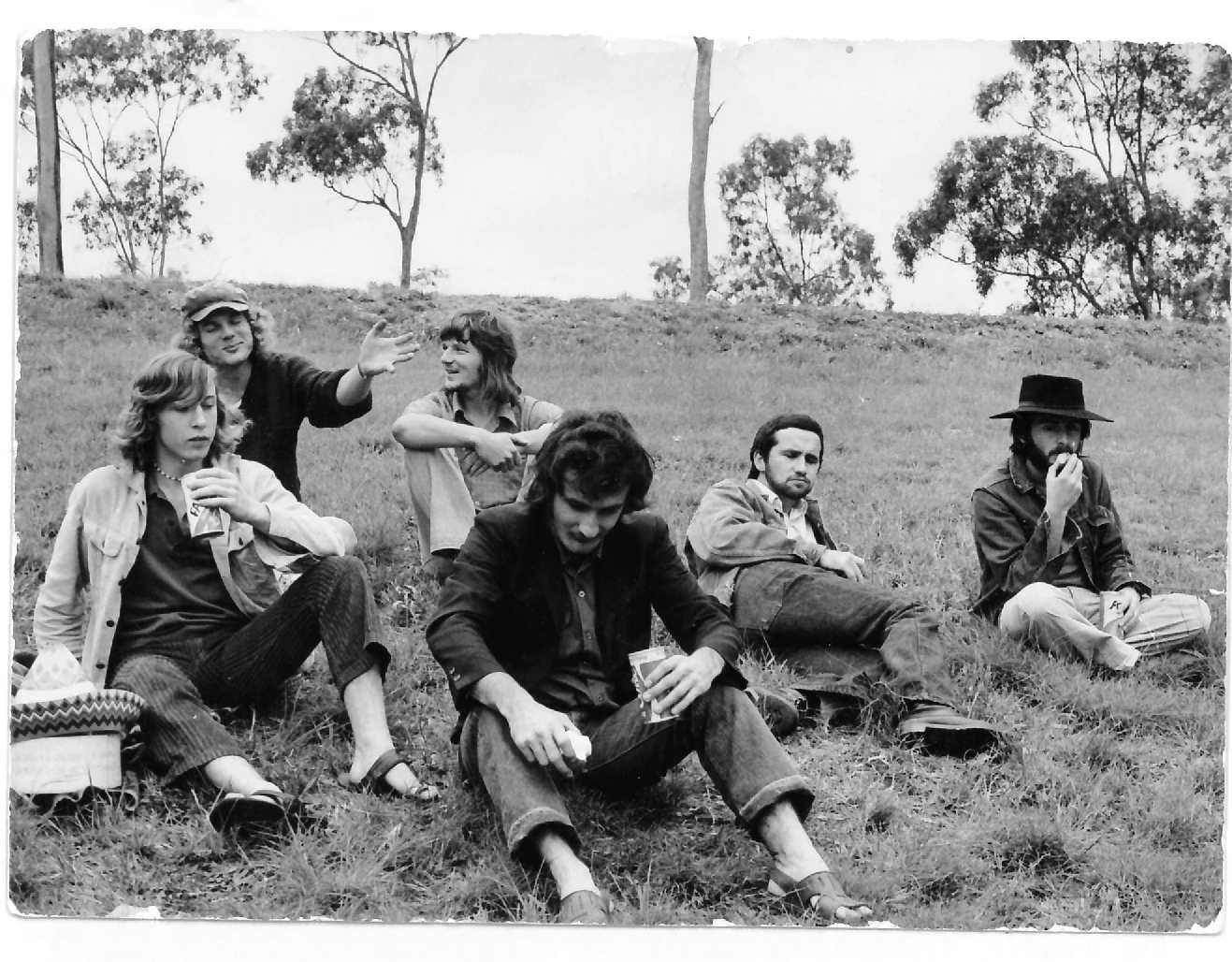
Figure 4. Teen Challenge Inc. Folk, circa 1974. Source: Teen Challenge Inc. (Qld)
The Organisational Issues of Activities of Media, Rehabilitation, and Education (Prevention)
The activities of Teen Challenge Inc. across time and space can be explained under the organisational headings of Media, Rehabilitation, and Education (Prevention).
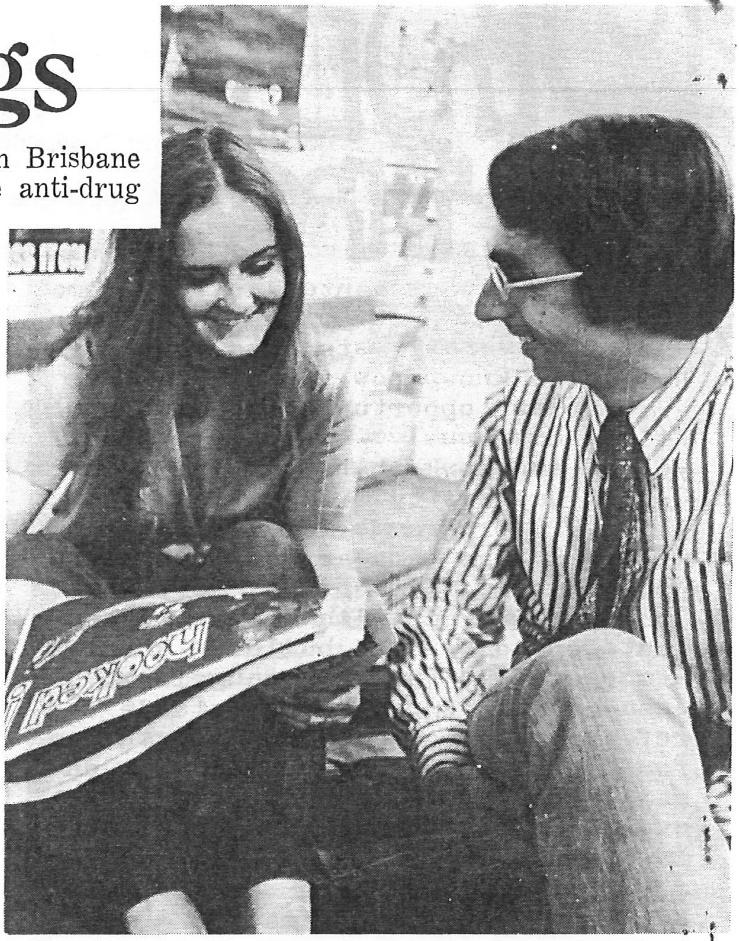
Figure 5. Discussing Teen Challenge Promotion in the Office. Source: Teen Challenge Inc. (Qld)
Media
The point has been made above that those members of the Council of Reference were showmen and show-woman for Teen Challenge Inc. We have also seen Board members, particularly the ‘men of the cloth’ were also performers. Hadyn Sargent was not the only local radio and television personality to promote Teen Challenge. Chris Adams, a local radio personality, was one of the early office workers. His role was in developing a publicity program for the organisation.
Media is an important feature of the counterculture. It has to out-message the mainstream. The centre of operation was there in the beginning, in 1972, called, Jesus People Action Groups, with the P.O. Box 88, South Brisbane 4101. These were the days when the bulk of communication came as paper-based letter writing. The early Teen Challenge Inc. periodicals had different titles, starting with ‘Rag Writer’. They were typed and wet-print duplicated two or four sheet newsletters or rag newspapers. Undergraduate-orientated hand-produced comics dominated the visuals. Charles Ringma was the Editor, Philip Horwood was the Layout Artist, and Delene Lancaster the Typist.
The Queensland News Corp began to splash several articles on Teen Challenge, usually on a first section page in its dailies. The role of Reg Leonard has been noted as a significant figure, a TC ally who headed up a media empire in these days of diverse media ownership. Of the articles the most transformative was that of Mary Fisher, a Sunday Mail Reporter. Fisher explains half a century later:
“When I wrote that first article on Teen Challenge, The Sunday Mail gave me a major ‘by-line’ on the front page of the Features section. This is the photo that went with the ‘by-line’. It was a week before my 24th birthday.
Up until then the editors had not been impressed, in fact very unimpressed by my writing.
That was the day they later referred to as my becoming a good writer.
I believe it was our Lord enabling me.
I have so much to be grateful for.
So grateful
Love in Christ”
The Teen Challenge narrative was transformative on the newspaper pages in 1973-1974 when the organisation was fresh news. That continued for some time, but it could become a double-edge sword, as when in 1977 Charles’ image was ‘front page’ news, among a group of clergies who opposed the positioning of the Joh Bjelke-Peterson regime. Newspaper readerships are prejudicial and newspaper owners play on the prejudice.

Figure 6. The TCTI Logo, circa 1982. Source: Teen Challenge Inc. (Qld)
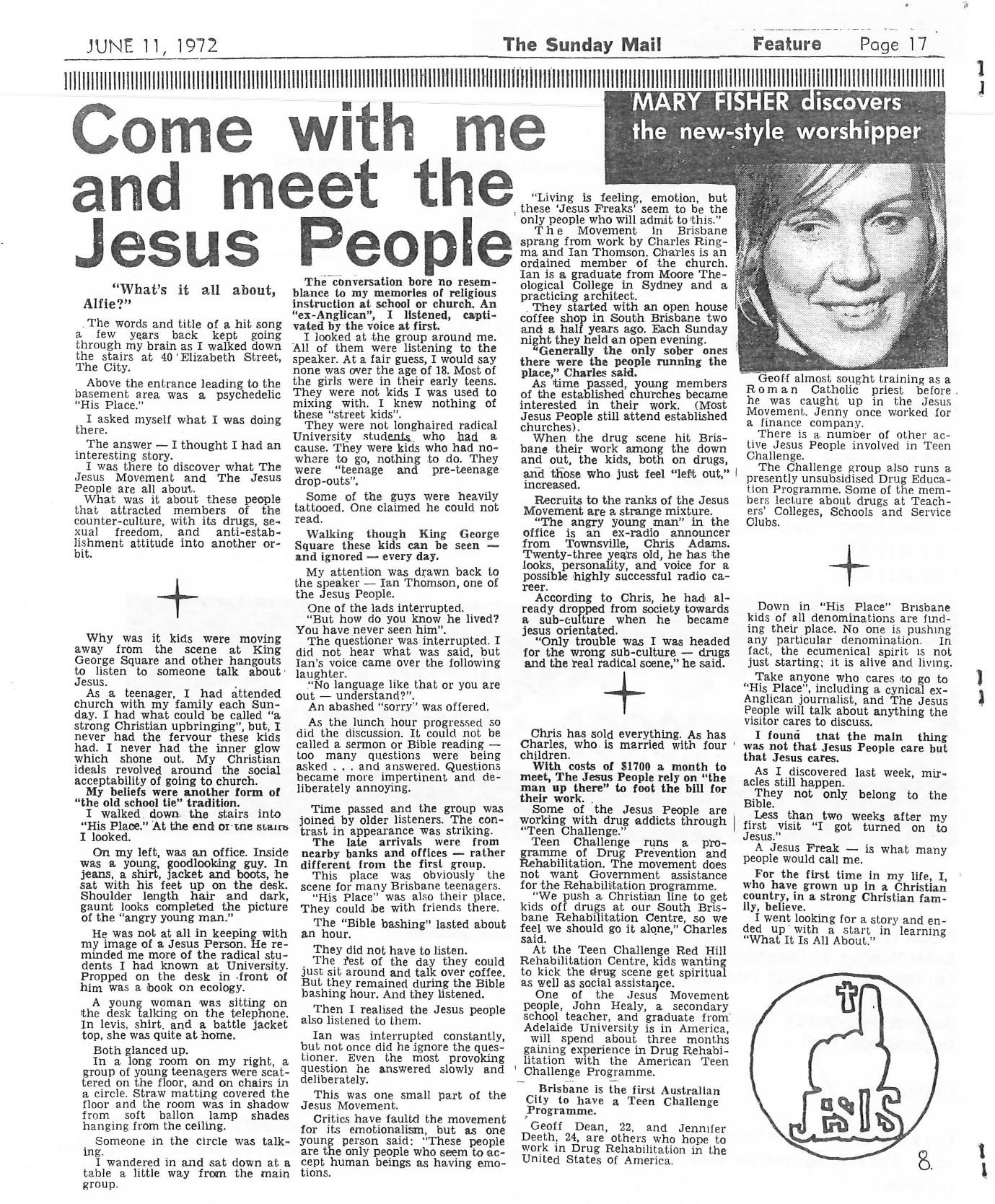
Figure 7. Mary Fisher’s Ground-Breaking article for Teen Challenge Inc. in The Sunday Mail. Source: Teen Challenge Inc. (Qld)
Rehabilitation
The backbone work of Teen Challenge was drug rehabilitation. The work was also heavily organisational, beginning even before 1972 with Charles Ringma as the Manager, and early residents-workers, Joyce K and Mac Campbell, for The Way Office and Outreach Residence, at 1 Peel Street (cnr. Cordelia Street), South Brisbane (QLD 4101). John Healey began his TC work as an organiser at The Way. Healey was responsible for the Open House Bar-B-Q on the 26 August 1972. During 1972 Charles and Rita moved out The Way to establish a home, as the Executive Director’s Residence, at 34 Gresham Street, St. John’s Wood, Ashgrove, QLD 4060. It operated as a second headquarters for the Teen Challenge Office. Terry Gatfield became the Director, at The Way Centre, partnered with Rosemary Gatfield, another valuable TC worker.
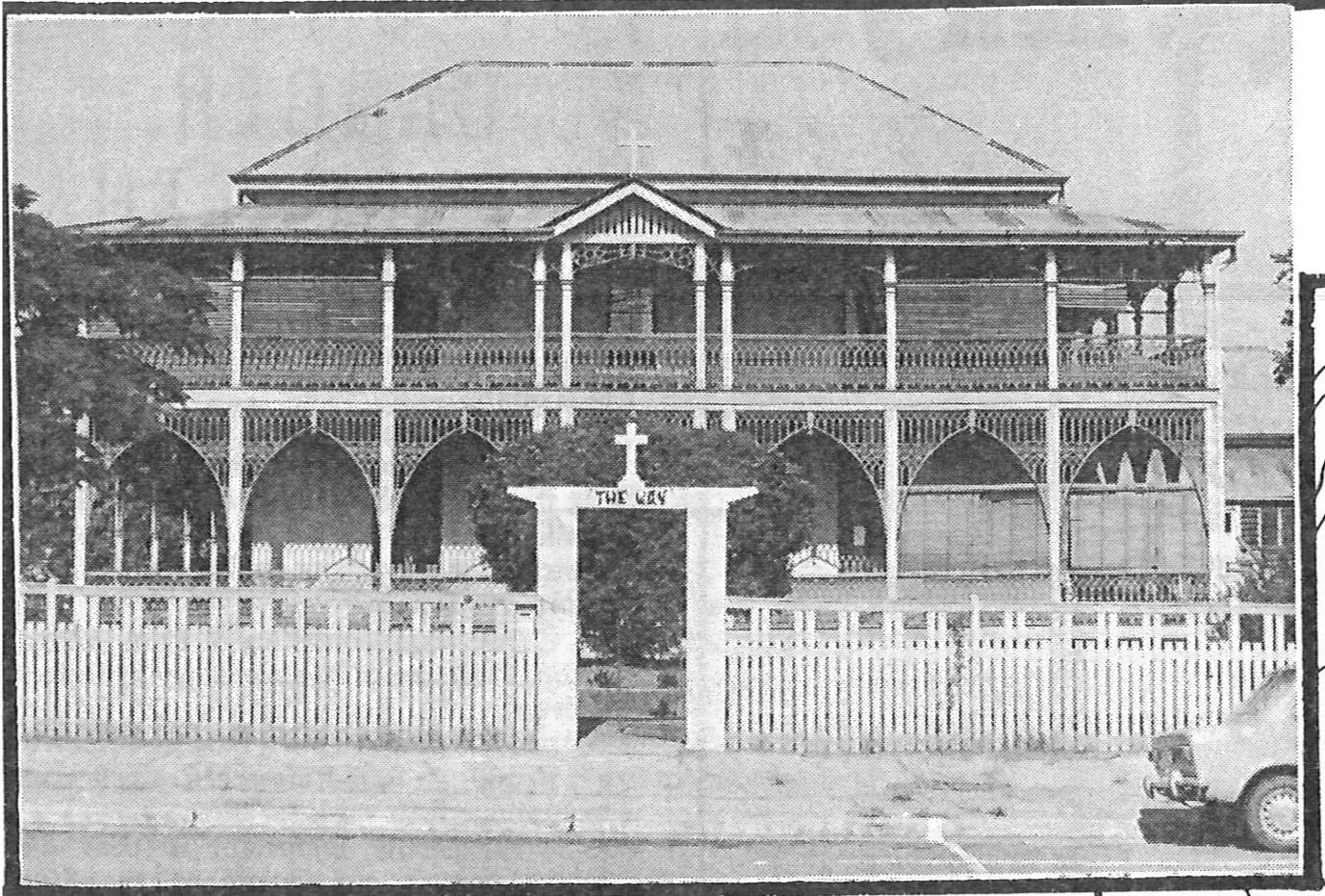
Figure 8. The Way (Good News Centre), 1 Cordelia Street, South Brisbane. Source: Teen Challenge Inc. (Qld)
Charles Ringma as Executive Director, Peter Lane as Rehabilitation Director, Dot Lane and Doug Boyle as Rehabilitation Workers, had the work of the TC men’s rehab at Enoggera Terrace, Paddington; it is referred in the records as, Enoggera Road, Red Hill (QLD 4059). However, the exact location has yet to be marked in the Teen Challenge Mapping program.
In 1973 John Healey was formally appointed Teen Challenge Rehabilitation Director, Brisbane. In these years 1973-1974 there were unnamed drug rehabilitation managers and organisers across the country. One has been named in the records as Rodney Hickman, Support Worker, NSW Teen Challenge Inc., NSW Teen Challenge Support Group, 87 Macleay Street, Potts Point, (NSW 2011). In these fledging days of incorporation, and in the failure of Australian federation, the New South Wales work, and then the Victorian work, and then the South Australian, operated separately and the ignorance abounded of who did what.
By 1975 Peter Lane was the Rehabilitation Director, located at 103 Simpsons Road, Bardon (QLD 4065). In the same year, Gary Swenson, Lorna Swenson, Rita Ringma, worked as Manager and Co-Manager, Counsellor, at the Teen Challenge Inc. Girls Home, Red Hill. A few years later saw the acquisition of the Rathdowney Farm as a rural facility, and the Teen Challenge Drug Referral Centre was set-up at 9 Hall Street, Paddington (QLD 4064). By 1980 the Rehabilitation Appeal was launched.
A previous essay has picked up on the role of Koinonia Drug Rehabilitation Centre, Teen Challenge Inc., as a story of short-lived hope for bigger things to come. It had to wait until the new century, but the early players were Neil Paulsen, Sue Paulsen, Roy Calic, Lyn Calic, Margaret Robertson, John Moutou, Mike Bellas, Mike Power, Chris Cummings, Neville Buch, and host of names not listed here.
The official opening of the Kedesh Male Rehabilitation Centre was to be the 3 May 1987 but the guest of honour, Reg Yake, died before he got to Brisbane. Instead, the Re-Dedication of the Kedesh Male Rehabilitation Centre went ahead on 15 December 1988, at 254 Flinders Parade, Sandgate (QLD 4017). Rick Raetz was the Co-ordinator. Little remains on records for the Maleny Rehabilitation Farm and the Sunshine Coast Rehabilitation Centre.
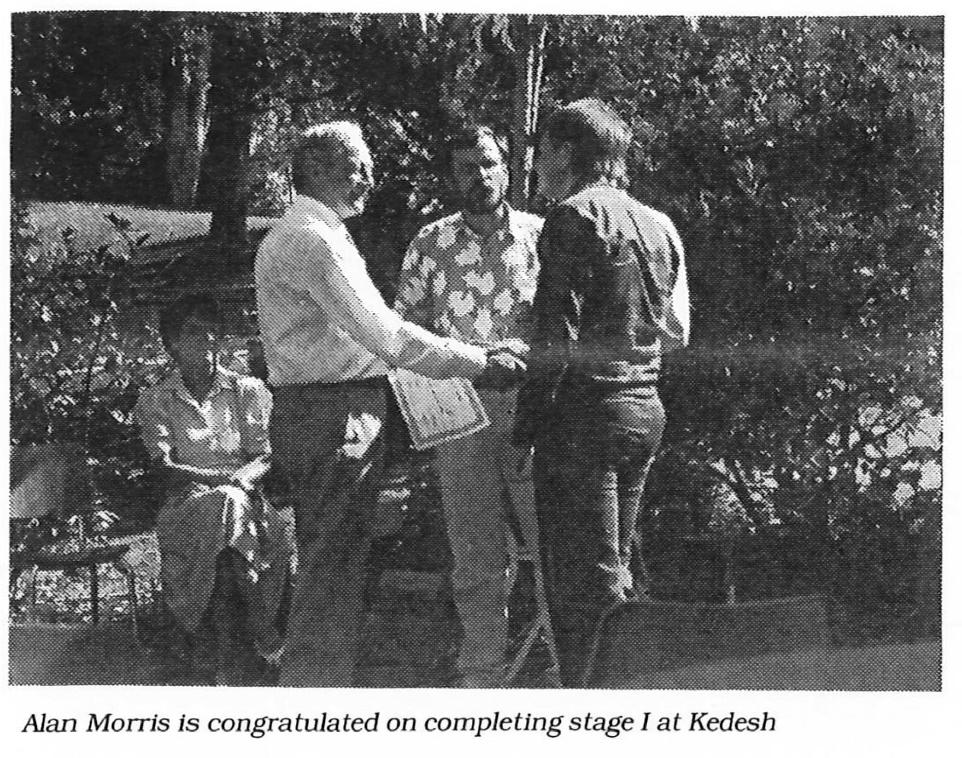
Figure 9. Graduation of Kedesh Male Rehabilitation Centre, 1987. Source: Teen Challenge Inc. (Qld)
Education (Prevention)
The TC workers were progressivists. The programs were not only about picking up the damaged after the fact. Teen Challenge Inc. was about the education for prevention; preventing young people falling into a drug habit.
In 1972 the program was a matter of a small visitation with the coordination of a few high school teachers, such as the Cooroy State High School I.S.C.F. Outreach. Larger High School Visitation Teams were then formed, such as the Teen Challenge Chinchilla High School Visit. This included John Healey (Director), Jeff Ganter (Graduate), Josephine Horrochs (Team Assistant), and Chris Adams (Director of Drug Awareness).
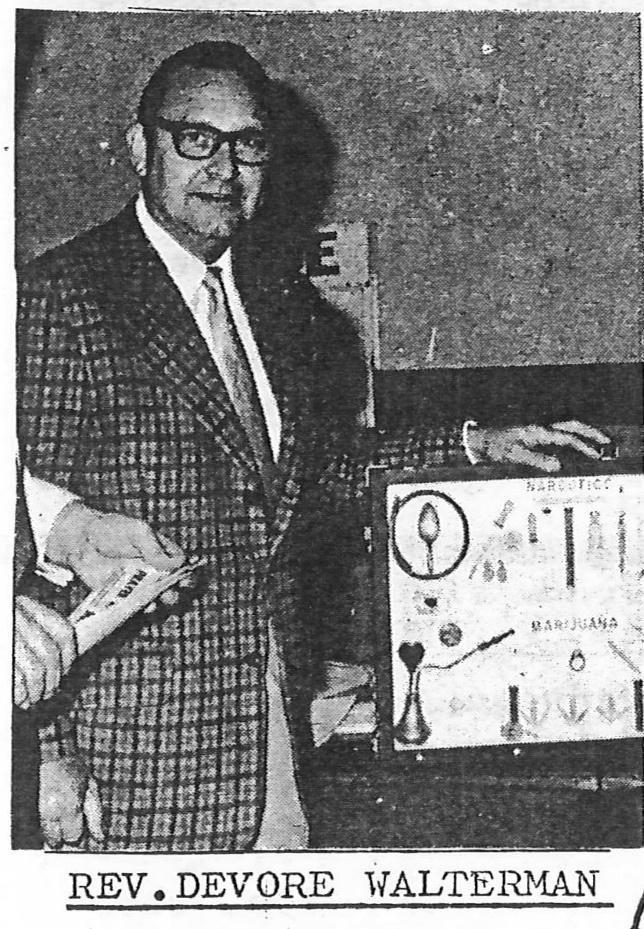
Figure 10. The De Vore Walterman event. Source: Teen Challenge Inc. (Qld)
The year 1973 gave a lift with the visit of De Vore Walterman, Executive Director, US National Council for Prevention of Drug Abuse, and speaking at Brisbane Drug Awareness Meetings. The messaging went something like Teen Challenge Inc. is ‘the Jesus Movement’ to the dangerous ‘The Drug Sub-Culture.’ The problems of the culture are deeper than addiction and answers lies in transforming young persons into a redeeming culture (Christian). The messaging appears conventional for the American thinking, but the challenge underlying the messaging was the alignment with contested United States drug policies. Between blanket prohibition and blanket permissiveness were a host of realities of which the likes of De Vore Walterman struggled to understand. In the Australian setting Charles Ringma was more in tune with the way drug policies were double-edged and contradictory.
Education: Teen Challenge Training Institute
Both for drug rehabilitation and education, heart of the organisational operation was the Youth Workers Training Seminar, which became the National Teen Challenge Diploma Training Course (one year long), operated as the Teen Challenge Training Institute (TCTI).
In 1972 John Healey trained for two and half months at the San Francisco Teen Challenge Center. This became the basis for the Brisbane training program with Australian modifications. It appears that it took a few years for the training to be formalised as a full seminar program. In the week of 14-18 January 1974 Healey organised the Evangelism, Counselling and Youth Problems Seminar at the West End Methodist Church, Vulture Street, West End, (QLD 4101). The other trainers included in the seminar program were Charles Ringma, Athol Gill, Chris Adams, John Carrol, Jim Christian, Greg Job, Bob Pearson, and Gloster Udy from Sydney.
By 1978 Charles Ringma began his part-time clinical teaching with the University of Queensland Medical School, on social medicine and legal and illegal drug abuse. The year 1981 saw the chaplain Brendan Scarce became the National Director, the role being in actuality the National Teen Challenge Diploma Training Course (one year long). Charles functioned in the first year of the course as the National Director, and the course eventually moved to include interstate Teen Challenge organisations and to which the social worker Brendan Scarce had prime responsibility.
Education: Queensland Pedagogies (and research).
A few analytical observations can be summarised as the research pedagogies. In 1971 Charles Ringma is the LifeLine researcher to find the most appropriate service, what is coined AOD – Alcohol and Other Drugs. The binary between ‘alcohol’ and ‘other drugs’ expresses the confusion in the social model with the vague category of ‘Other’. In that mix is other pedagogies. There is the educational mix an expression of social fears about the dark world and also a fascination with the underworld drama, common to the thinking in American liberal art colleges of the era. It is picked up in the language of De Vore Walterman, and of Dave Wilkerson’s Cross and Switchblade.
The Teen Challenge education required more, and it was delivered in the connections to the leading Queensland Christian educators, such as Rev. Dr. Lew Born, the Director for the Methodist Department of Christian Education. And the few academics associated with Teen Challenge added another layer – academics such as the criminologist Dr Paul Wilson, who in those days was Acting Head of Department, Anthropology and Sociology, University of Queensland. Charles continued his role as a researcher, and by 1976 he has begun the B.A. degree part-time at The University of Queensland majoring in Sociology and Studies in Religion.

Figure 11. John Healey leads the Teen Challenge Chapel Service, circa 1973. Source: Teen Challenge Inc. (Qld)
ACTIVITIES
The buzzword for pedagogies in the last half century has been praxis, the running together of theory and action, activities in the current thinking. What did this mean for Teen Challenge Inc.? The rationale behind the facilities which the organisation ran provided theoretically based action, or put another way, or action shaped as theory.
Phone Communications ministries
The shift in communication theories were coming from different directions but they overlapped in the action. Indeed, communication action was another buzz phrase. The global names which buzzed in the local scene in the decade of the 1970s and 1980s were theorists headed by John Dewey, Jurgen Habermas, Marshall McLuhan, Theodor Adorno, Antonio Gramsci, and George Herbert Mead. Many more names could be added, but these six philosophers and sociologists were immediately recognisable. The names stretched across a large part of the mid-twentieth century. McLuhan coined the expression, ‘the medium is the message’. The idea that that a communication medium itself, not the messages it carries, is the revealing focus of study. It is beyond the full explanation here but goes to the beginning of Teen Challenge Inc. in the activities of the phone communications ministries, which started as a connection between the first coffee shop, ‘His Place’, and LifeLine. The Phone medium is the Interactional Model of communication. It is bidirectional, where two persons send and receive messages in (hopefully) a cooperative manner as they continuously encode and decode information. Compare that earlier medium to the social media today. Communication on these new mediums is chaotic involving many more than two persons.

Figure 12. Chris Adams ‘on the phone.’ Source: Teen Challenge Inc. (Qld)
Back in 1972, soon the ministry became known as ‘Teen Dial’ with an office outfit at 19 Eagle Terrace, Brisbane City (QLD 4000). How long it stayed in the expensive area of city properties is uncertain. Harvey Pollock became the LifeLine Coordinator with Teen Challenge, based at the Teen Challenge Inc. Head Office, Enoggera Road, Red Hill (QLD 4059). Oversight came from Charles Noller, as the Director, Counselling, LifeLine, and the TC Council of Reference member.
Respite Ministry (Farms)
Very little information among the records have been kept on the Teen Challenge respite ministry, closely associated with the rehabilitation program. The activities have to do with the farms leased by Teen Challenge, the first being, in 1974, the NSW Teen Challenge Farm, in Connabarabran, (NSW 2357). Very little is also known of the Rathdowney farm. It appears that the urban rehabilitation centres were utilised for the main part of the program. The farms provided respite spaces for both clients and staff members, leaving urban pressures behind, with some geographic distance.
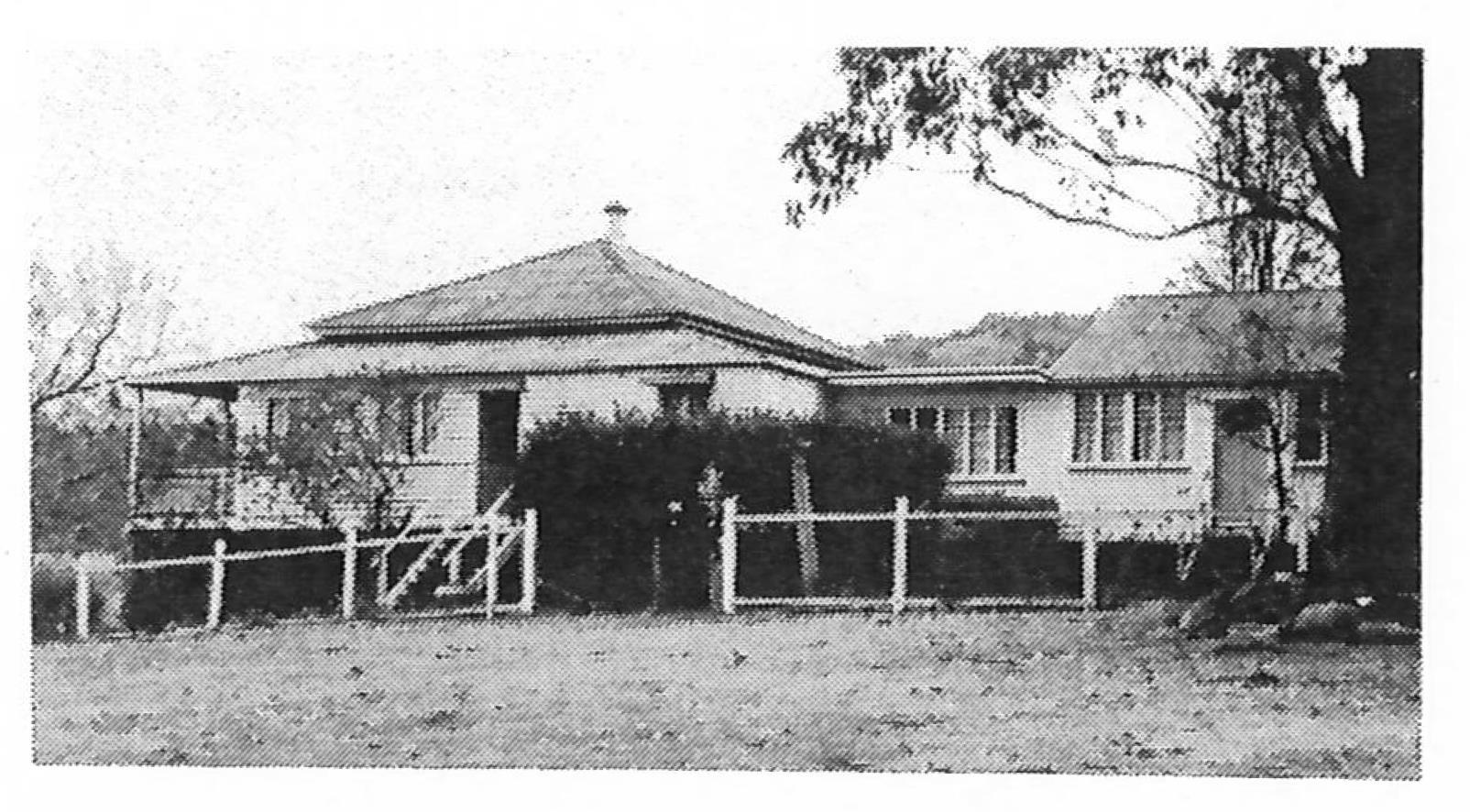
Figure 13. Teen Challenge Rathdowney Homestead Retreat, circa 1974. Source: Teen Challenge Inc. (Qld)
Primmer Lodge and Hebron House
More is known of the urban houses in Teen Challenge Inc.; however, the purpose of the essay is only to sketch the organisational history. More will said in the book, and feedback is welcomed.
The 1977 opening of Hebron House (emergency short-term accommodation) began a period of organisational renewal. Located at Milton Road, Toowong (QLD 4066), Mike Hobbs was the Director for Homeless Youth, Hebron House. Terri Hobbs was a Support Worker, as was Mark Cleaver, Helen Wallace, Tony Bennett, Gary Sivyer, David Smith, Paul Cummings, Steve Jeanerret, Mike Hobbs, Philip McLennan, Mike Power, Terri Hobbs, Liz Payne, Margaret Robertson, Janice Jordin, and host of names not listed here. Philip McLennan became the Director in 1980, and Mark Cleaver was the Children’s Services Co-ordinator for Hebron House. Other TC Workers also were Children’s Services Co-ordinators: Helen Wallace, Tony Bennett, Gary Sivyer, David Smith, Steve Jeanerret, and Paul Cummings. In 1984 Mike Power became the Director with Alec Spencer beginning his stellar rise in the organisation as a Hebron House worker. Spencer would become the Hebron House Director in 1987.
In 1978 the Minister for Welfare, John Herbert, officially opened Primmer Lodge (long-term support accommodation). This was a watershed moment in Teen Challenge Inc. A growth in TC volunteers formed around Primmer Lodge, at 18 Bellevue Parade, Taringa (QLD 4068). Among the volunteers recorded were Peter Allen, Brian Gibson, Liz Payne, Sue Peel, Ros Stark, Gary Uhlmann, Chris Cummings, and Peter Wilson. The Primmer Lodge workers included Lyn Meier, Helen Wallace, David Smith, Marylin Smith, and Jean Claude Boulenaz was the Manager.
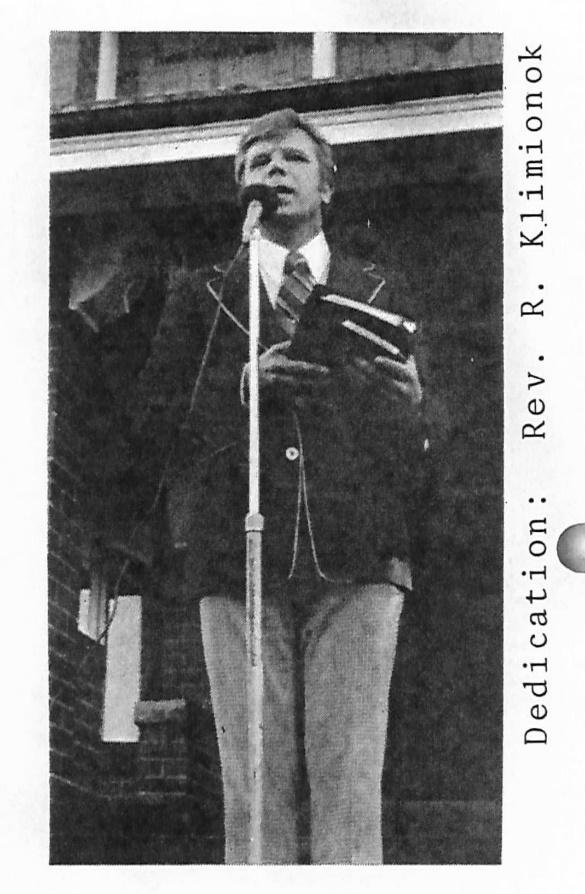
Figure 14. Pastor Reg Kliminonok, speaking at the Opening of Primmer Lodge, 13 May 1978. Source: Teen Challenge Inc. (Qld)
The moment tended to overshadow the organisation work for the men’s and girls’ homes, in Paddington and Red Hill. Gary Swenson, as the Manager, of the Teen Challenge Girls Home, and Lorna Swenson, as a Co-Manager, is important to the story but little is known.
It is hoped that the set of online essays will provide more detailed information from comments offered up.
Youth Activity Centre
The front door to Teen Challenge Inc. was, for several decades, the Youth Activity Centre at Alfred Street, Fortitude Valley (QLD 4006). There were several TC directors, Tony Bennett and Wayne Porritt among them, and other workers who passed through the Centre, Alan Ruthford among the earliest in 1975, when Teen Challenge Activity Centre, actually began at the Focal Point Arcade, Wickham Street, Fortitude Valley (QLD 4006). Claire Fielding was a stalwart in the centre over the decades until the early 1990s.
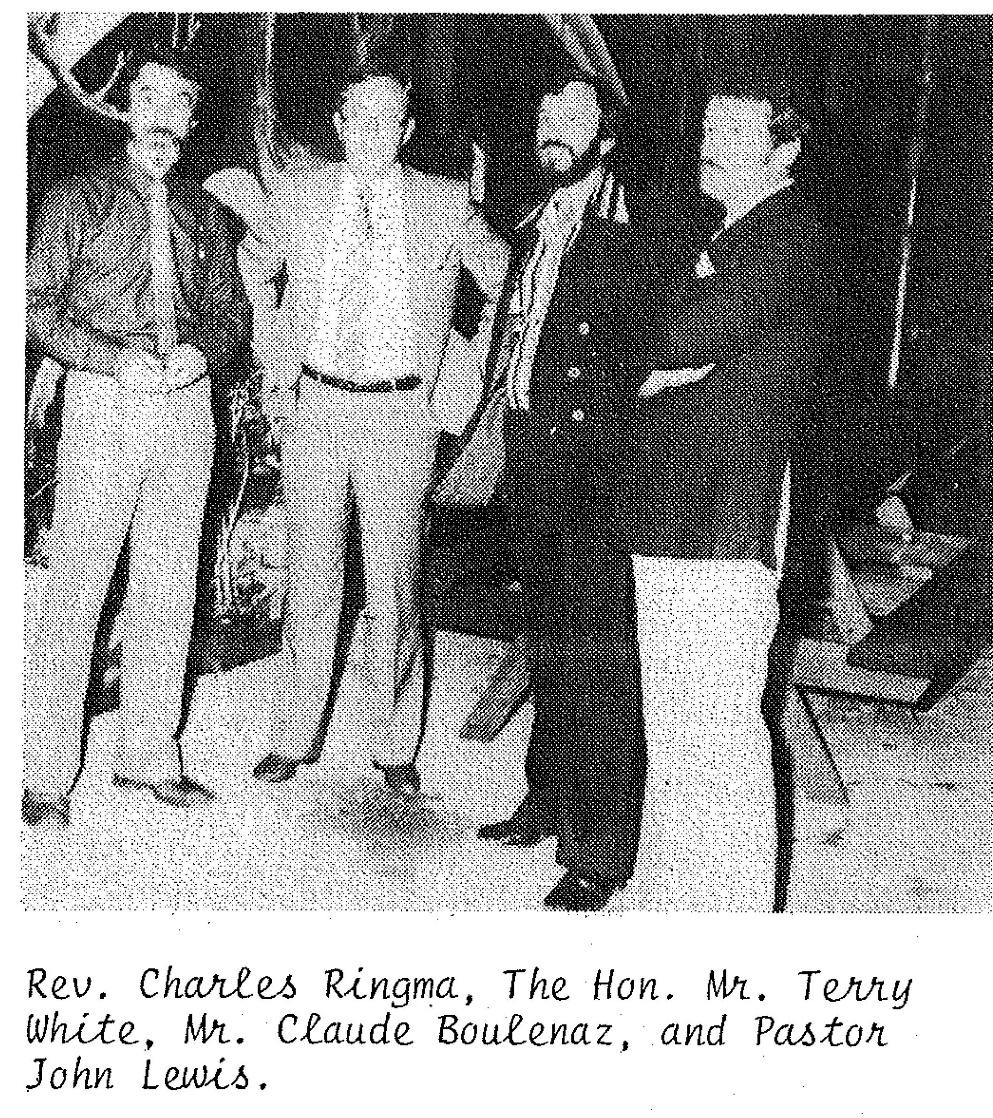
Figure 15. The Offical Opening of Teen Challenge Activity Centre, 1982. Source: Teen Challenge Inc. (Qld)
Prison Ministry
In the organisational background, out of the limelight, was the TC Prison ministry, based at the old Brisbane Goal (‘Boggo Road’), Annerley Road, Dutton Park (QLD 4102). The tireless workers in the ministry were Doug Boyle, Norm McIntyre, Margaret Robertson, Shirley Allan, and Claire Fielding.
Rallies and Concerts
There was an informal side to the Teen Challenge Inc. which involved rally and concert promotion in the office environment. Tickets were sold, sometimes as an event of promoting the Teen Challenge mission, such as the Nick Cruz Rally in 1975, or as a fundraising event as in the 1976 Andrae in Concert. In both of these cases the venue was the Festival Hall, Alice Street, Brisbane City (QLD 4001). These were events that had a megachurch feel in the era before the Brisbane megachurches. The Christian religion was becoming the art of the showman in the ‘mega’ ways – mega Christian rock bands, loud and in your face, and faith was a ticket to entertainment. It was not that there was not something existentially genuine in the experience for the youth of the day. The local Brisbane band, ‘His’, delivering the Pink Floyd version of Jesus the anarchist – we were not going to be another brick in the wall. The Teen Challenge youth of the last quarter of the twentieth century became the leaders of the local Church. What has escaped the attention of the institutional Church, in its talk of orthodoxy, is how heretical the history is.
Concluding Remarks
The working for the history during 2022 will need assistance from past in present voices. Much more is to be done on the welfare agency, Good News Centre working with alcoholics in South Brisbane, and the office volunteers, such as Joyce Krassenburg, who is only a name in the records.
New Governance and Administration invested in Workers.
With small organisations, it very common that governance and administration is in the hands of the ‘ordinary’ or ‘labouring’ worker. There are partial stories collected.
Even as Teen Challenge Inc. expanded, the habit of a worker-leader continued. The organisation was among those that did not abide the rigid distinction of modern capitalism between those who laboured and those who managed labour. In the postmodern world the distinction has become an absurdity. Nevertheless, for any organisation it is almost impossible to completely get rid of a hierarchical outlook, given enough tasks and the time to do it in.
In thinking how much more of the story has to be told, consider a snapshot picture sometime in 1975 at the Teen Challenge Inc. Head Office, Enoggera Road, Red Hill (QLD 4059), or the relocation to Head Office, (Woolworths Shopping Centre) 107 Latrobe Terrace, Paddington (QLD 4064).
There is the leadership of Geoff Dean, a worker from the Catholic Tradition, who unknowns to him, would create a scholarly career from the work in the decades ahead. In that office environment were regular visitors, Hans Booy, the TC Campus worker; Ian Thomson, TC Worker, Architect and Moore College graduate; and Glenda Reinhardt, Rehabilitation Worker. There is Harvey Pollock, the Business Deputation Worker, chatting away. Peter Jones and Roslyn Stark are barely listening as office workers. Forms and other records have to be completed.
Please help, much more is to be said.

by Neville Buch | Jul 27, 2023 | Article, Concepts in Educationalist Thought Series, Concepts in Public History for Marketplace Dialogue, Concepts in Religious Thought Series, Intellectual History
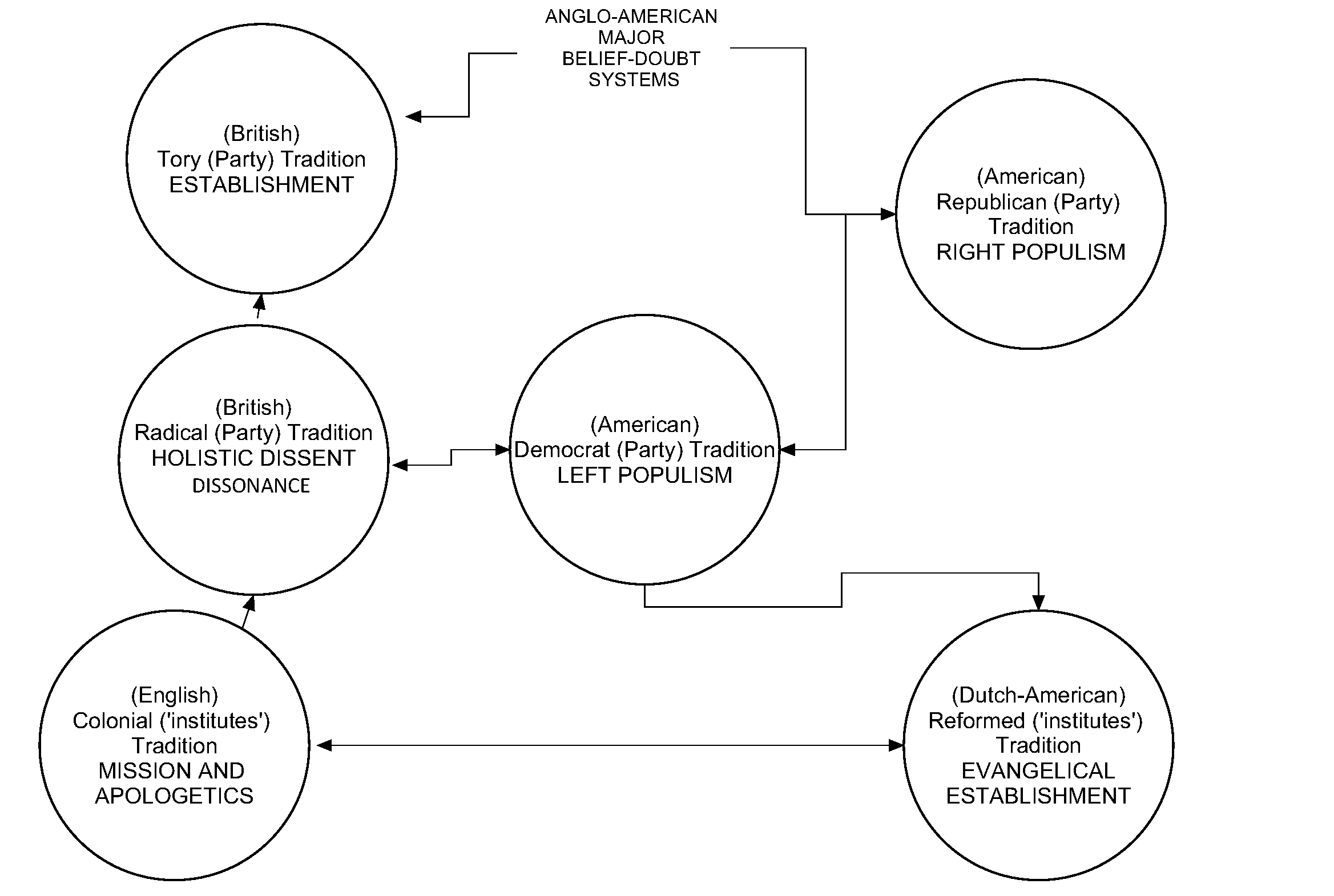
This is a research note to preserve copyright and notice to this new and substantive thesis of the Anglo-American major belief-doubt systems, since the seventeenth century, which at the end of that century expanded, and transformed, the power of the English monarchy to a new entity known as the United Kingdom of Great Britain and Ireland. The constitutional and national development coincided with the securing of the fledging English colonialism in North America, with entry, in the next century (18th) into the waters and landmass of the Asia-Indian-Pacific spheres. The concept of colonialism is not limited nor unique to the English-speaking worlds. However, in both threatening and beneficial ways, it produced Anglo-American belief systems, and both for the powerful colonisers and the disempowered colonised.
These belief systems, which includes its necessary skepticism (doubt), have usually been 1) called ‘ideology’, and 2) boxed as categories of ‘religion’ and ‘secularity’. Both these outlooks are problematics and are based on gross intellectual misunderstanding. First, ‘ideology’ is commonly used as a swearword to dismiss systems thought: out-of-hand, as (to be frank) a ‘blood-minded’ and ignorant defence mechanism. So, to be clear, references to ‘ideology’ and ‘ideological’ are used here merely as references to systems thought, either for good or bad. Secondly, the studies-in-religion field, more than half century, has clearly demonstrated that the hard categorisation between references to ‘religion’ and ‘secularity’ are false. Those who continue in that ‘categorical mistake’ (Gilbert Ryle, The Concept of Mind, 1949) are usually culture-history warriors.
The structure of the research to 1) identify a basic worldview, 2) describe a model of that worldview which usually ties the evolutionary thread to a global university school or college or networked institutes. From those two steps is a selection of one key example in 3) the historic Evangelical World and one in 4) the (‘secular’) Corporate World, usually in a dual sense of a singular institute or school of thought and an industry or corporate grouping. In this way, a web of belief can be both described and explained.
There are six basic socio-political worldviews. The descriptors identify a cultural reference, the usual ‘socio-political’ name, its usual status as either a political party or a social institute, describing the worldview as a tradition, and the usual tag as a common language by-word (in that order of the descriptive phrase):
- The (British) Tory (Party) ESTABLISHMENT
- The (American) Republican (Party) Tradition RIGHT POPULISM
- The (British) Radical (Party) Tradition HOLISTIC DISSENT Dissonance
- The (American) Democrat (Party) Tradition LEFT POPULISM
- The (English) Colonial (‘institutes’) Tradition MISSION AND APOLOGETICS
- The (Dutch-American) Reformed (‘institutes’) Tradition EVANGELICAL ESTABLISHMENT

- (British) Tory (Party) Tradition. ESTABLISHMENT.
The conservative tradition in the English-speaking world is best expressed by the ‘British Tory Party’: a descriptor for organisations such as the Conservative Party UK or the Conservative Party of Canada. Political organisations do not align perfectly with ideology, so Toryism is like any other social science model, a genealogical method (as in philosophical term of Nietzsche and Foucault), and, as Bernard William describes it, an origin-type fiction, paralleling the concept of myth, which broadly structures out the non-fiction truth (truthfulness propositions); thus, having accuracy but not the logical accuracy of mathematical truth (Truth and Truthfulness: An Essay in Genealogy, 2002). “The Conservative Mind” (Russell Kirk, 1953) appears to continually to trip-over with this misunderstanding of social science, in its rejection of the thought propositions within the outlook of modernity; ironically, the modernist propositions of hard scientific humanism (in the mid-century) led to a neo-conservative outlook to reject the Nietzschean genealogical method since mythology could not be taken as accurate scientifically. This is done in employing the fallacy of cherry-picking details and failing to understand the mythological or constructivist’s point; or to employ another metaphor, chopping down one tree (or even a few) and think that the concept of the forest has been destroyed; or extending the metaphor: being deaf to the forest in chopping down the tree. Starting with the concept of tradition, the new conservatism, particularly Americanised neo-conservatism (William F. Buckley Jr., God and Man at Yale: The Superstitions of “Academic Freedom”, 1951), has ended up in the cognitive trap of scientism. This has meant that “The Conservative Mind” had the incapacity to see its own ideological faults, in terms of the political and social critiques, and, indeed, the overall ideological critique in terms of systems analysis.
The historical criticism (historiography) of Toryism does the best in plain English terms to demonstrate the shortfall in the thinking. Historically seen, retrospective in time, Tories were monarchists, engaged in a high church Anglican religious heritage, and were opposed to the liberalism of the Whig party. The Conservative model was only ‘recently’ changed – mid-century – with is usually described as ‘Neo-Conservativism’ – the works of Kirk and Buckley Jr., as well as Daniel Bell, Daniel Patrick Moynihan, and Irving Kristol. There is then a disjunction between Toryism and the new conservative model, with neo-conservative writers strangely disparaging modern liberal thinkers of having Tory attitudes; in the same twisted logic of Buckley Jr., in accusing academics of having “supernaturalism”. In terms of critical thinking, it does not take much logical understanding to see that the new conservativism is an argument made of fallacious thinking, and is historically a replay of the ancient Roman “language game” of rhetoric to bewilder the public in accepting the false arguments of the modern industrial/post-industrial “The Power Elite” (C. Wright Mills, 1956).
The Oxford College Model is based on the Oxford University Commissioners’ Report of 1852: “The education imparted at Oxford was not such as to conduce to the advancement in life of many persons, except those intended for the ministry.” It is a model of the power elite in the way that the liberal sociologist C. Wright Mills (1956) described it in the American mid-century. Historically, the Oxford College Model has been tied to the Torys’ high church Anglican religious heritage. The link here with the Evangelical world is ambiguous but the intellectual thread is connected in what was called the “Clapham Cabinet” or ‘Sect’ and the history of the Bible Society (‘EHA’ thesis, Piggin & Linder 2018; Lake 2018). The Clapham Sect (technically not a sect but as much part of the established Church of England), or Clapham Saints, were a group of social reformers associated with Clapham in the period from the 1780s to the 1840s. Stuart Piggin & Rob Linder (2018) use the term, Clapham Cabinet, which was made up of its organisational leadership, across Oxbridge and the London Anglican base. The reformers were partly composed of members from St Edmund Hall, Oxford and Magdalene College, Cambridge, where the Vicar of Holy Trinity Church, Charles Simeon had preached to students from the university, and were encouraged by Beilby Porteus, the Bishop of London, himself an abolitionist and reformer, who sympathised with many of their aims. The British and Foreign Bible Society and the Church Missionary Society were associated with the reformers. The Bishop of Oxford in this period (1816-1827) was Edward Legge, Warden of All Souls College, Oxford, from 1817. Catholic emancipation was a long road with strong Puritan and Evangelical opposition, with the markers of the Papists Act 1778, the Roman Catholic Relief Act 1791, the Roman Catholic Relief Act 1793, the removal of the Sacramental Test Act in 1828, and the Roman Catholic Relief Act 1829, followed by “the Tithe War” of the 1830s (the last of legal anti-Catholic discriminations were not removed until the 1920s). In a three-way political competition, the Anglo-Catholic Bishops and Evangelical reformers, stood together in opposition to any appeasement to Roman Catholics; in the same way, in the mid-century Cold War, that American fundamentalists stood together with American neo-conservatives in opposition to any appeasement to global socialists (and in the ideological language of the Americans, “communist”).
The ambiguity, part from cross-institutional connections, was also that the Claphamites, from about the 1830s, often exemplified Nonconformist conscience with many ended up as the Methodists and the Plymouth Brethren thinkers in a broader socio-political movement against Catholic emancipation. The bigot attitude was part and parcel of the growth of evangelical Christian revivalism in England, which had direct links through Anglo-American revivalists, particularly in the American colonial experience of John Wesley, to the American Revivalist Tradition (ART; Buch 1995). Intellectually, at the time, Evangelical Protestant thought necessitated a conspiratorial evaluation of Catholic thought, aided in the growth of American nationalistic thinking. The liberal historiographical critique of mid-century to late century, among the Anglo-American historians, have developed this critique of ART (including Neo-Evangelical scholars). Yet otherwise excelling Evangelical historians continue to “paper over” the intellectual problem – the too high emphasis on doctrine and inability to conceive the ‘dogma’ problem fully in these histories of evangelicalism. It has to be noted that younger “neo-evangelical” scholars, and older scholars in the field are driving the critique (such as the author, Buch, Lucas, 3:1, June 2023, and forthcoming).
The Oxford College Model is historically linked to English Conservativism because of the university’s role during the English Civil War (1642–1649), as the centre of the Royalist party. From the beginnings of the Church of England as the established church until 1866, membership of the church was a requirement to receive an Oxford BA degree from the university and Protestant dissenter were only permitted to receive the Oxford MA in 1871. In contrast, historically, Cambridge University, has been closely associated to radical thought, although the intellectual history is (again) ambiguous. The history of Cambridge is well-associated with several important “anti-establishment” thinkers or mavericks to conventional thought: Isaac Newton, Francis Bacon, Oliver Cromwell, John Milton, Lord Byron, Charles Darwin, Vladimir Nabokov, John Maynard Keynes, Jawaharlal Nehru, Bertrand Russell, Alan Turing, J. Robert Oppenheimer, Ludwig Wittgenstein, and Stephen Hawking. It is a far-too simple, and thus false, to set up an Oxford and Cambridge University Model comparison, but if main collegial networks are the truthful point as several important references to the ‘Oxford School’ or the ‘Cambridge School’, the modelling holds (Randall Collins, The Sociology of Philosophies: A Global Theory of Intellectual Change, 1998). Outside of the intellectual history, what made Cambridge distinct, in the terms social organisational history, was the Cambridge Apostles, founded in 1820. Stephen Toulmin, the philosopher of thinking in this research, was a member, so was Alfred Tennyson, Bertrand Russell, G. E. Moore, and John Maynard Keynes. The Soviet spies Anthony Blunt, Guy Burgess and John Cairncross, three of the Cambridge Five, and Michael Straight were all members of the Apostles in the early 1930s, which would also explain intellectual tensions that had existed with the Oxford establishment.
In the Studies-in-Religion field, there is a strong Cambridge-Birmingham-Lancaster network (English north-west direction) with Ninian Smart, John Hick, and Don Cupitt. The Oxford-Cambridge distinction, however, is even stronger in historiography. Historically, a major network thread in the “Oxford School” has been the conservative ‘Great Man’ tradition, originated in the multi-volume Dictionary of National Biography (which originated in 1882 and issued updates into the 1970s); it continues to this day in the new Oxford Dictionary of National Biography. On the other hand, there is a significant connection between radical thought and the “Cambridge School” of historians. Again, this is ambiguous truthfulness (not straightforward): at Oxford, Christopher Hill, Rodney Hilton (though, moved to Birmingham) but at Cambridge, G. M. Trevelyan, E. P. Thompson, and Eric Hobsbawm. Other places and centres of English radical thought was much closer to Cambridge than Oxford: Dona Torr at University College London and John Saville at Hull University. The work of the American Peter Novick’s, That noble dream: The ‘objectivity question’ and the American historical profession (1988) was published by Cambridge University Press, and can be contrast to the anti-communist liberal historiography of Oxford’s Isaiah Berlin. Indeed, the strength of Berlin’s history of ideas approach was the benefits in “the Oxford idealism”, a much more clearcut set of critiques of ideas in the Continental tradition, which is seen as too highbrow by social historians in the English radical tradition. These historians of a Cambridge bent were not adverse to systems thought but their ideological criticism rode on a perceived social realism from the social historical context in history-from-below. The Cambridge History of Latin America is eleven volume treatment which is much more honest and open to criticisms on Spanish, Portuguese, English Colonialism.
Other fields also reflected in this approach to more contextual and informal logical modes of thought. Stephen Toulmin developed his basic argument of informal logic at Cambridge: the dissertation as An Examination of the Place of Reason in Ethics (1950), where he was influenced by contact with Ludwig Wittgenstein, whose examination of the relationship between the uses and the meanings of language shaped much of Toulmin’s own work. The Toulmin model of argumentation is a diagrammatic six interrelated components used for analysing arguments (The Uses of Argument 1958), and led to “the good reasons approach” a meta-ethical theory that ethical conduct is justified if the actor has good reasons for that conduct, developed in the thinking of Stephen Toulmin, Jon Wheatley and Kai Nielsen. The good reasons approach is not opposed to ethical theory per se, but is antithetical to wholesale justifications of morality and stresses that our moral conduct requires no further ontological or other foundation beyond concrete justifications. The thinking was brought to Oxford when Toulmin was appointed University Lecturer in Philosophy of Science at Oxford University (1949-1954). Toulmin also brought the thinking to Australia when he was Visiting Professor of History and Philosophy of Science at the University of Melbourne (1954-1955). The English modern social and theoretical science has a stronger association with Cambridge.
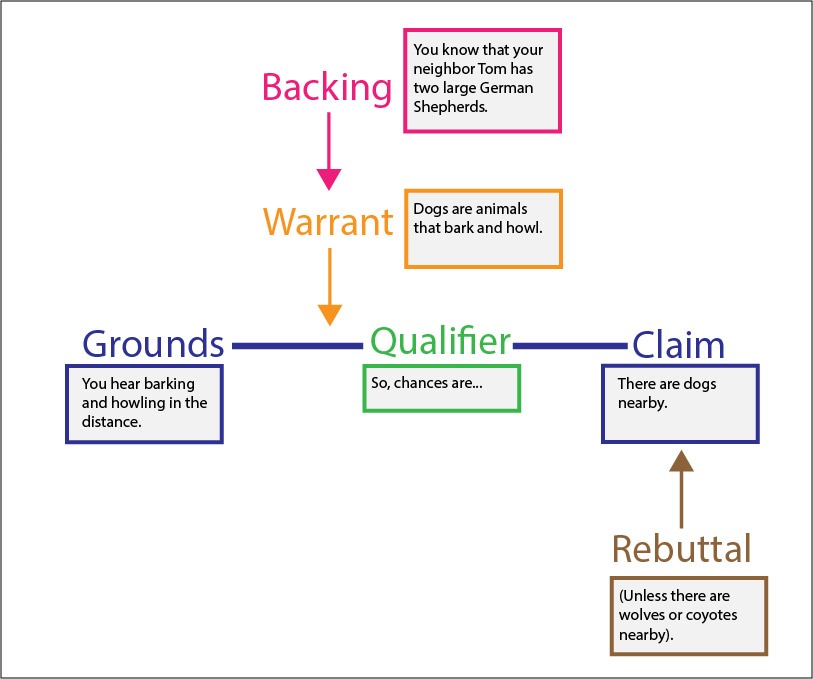
The Toulmin model of argumentation
There are also important economic developments associated with the paradigm of Anglo-American conservative thought, but there is very little distinction between universities, except for the London School of Economics. The economic thinking coming out of Oxford is seen as conservative or conventional, but that is due to the comparison to the history of the London School, which has always been “radical” in both Left and Right semantics. Indeed, while Oxford desires an overall stable historiography (“conventional wisdom”), London expresses the seesawing between 19th century Free-Market Capitalism (Right), Keynesian “Middle-of-the-Road” Regulation (Left), and Neoliberalism (Right). These cognitive risings and falls take place over decades. The neo-liberal thinking as theoretical works came into being during the 1970s. The Adam Smith Institute, a United Kingdom–based free-market think tank and lobbying group that formed in 1977, was a major driver of the neoliberal reforms. The 1980s saw Thatcherism and Reaganism. Then the economic thinking could not be divorced from shifts in international development theory and trade interest from theorists in the United States. In the 1990s there was the neo-liberal politics of Alberto Fujimori in Peru, and the North American Free Trade Agreement. In the culture-history war since the collapse of communist states (1989-1993), the neoliberal turn was much more about the ideological attack of the neo-conservatives upon the social thinking of mid-century liberals like Walter Reuther or John Kenneth Galbraith or Arthur Schlesinger, than the statistical obscure economic models. The Oxford Institute for Economic Policy was founded (2004), and has been for the last 20 years an independent and non-profit think tank focused on analysis, discussion and dissemination of economic policy issues. However, globally it is still unclear what new economic vision will emerge, but it will, and the historiographical spiral will turn Left in a new way. Unfortunately, the social damage has been done, most significantly in the creation of “The (British) Contemporary Higher Education Corporations”. The damage is significant because a common economic complaint, and the new mantra, are the loss of many specific sub-fields of the humanities and social sciences once taught and researched within the universities, creating a skills shortage for global communities, seeking out a new vision. This will be seen in the third section, examining the Cambridge College Model in further details.
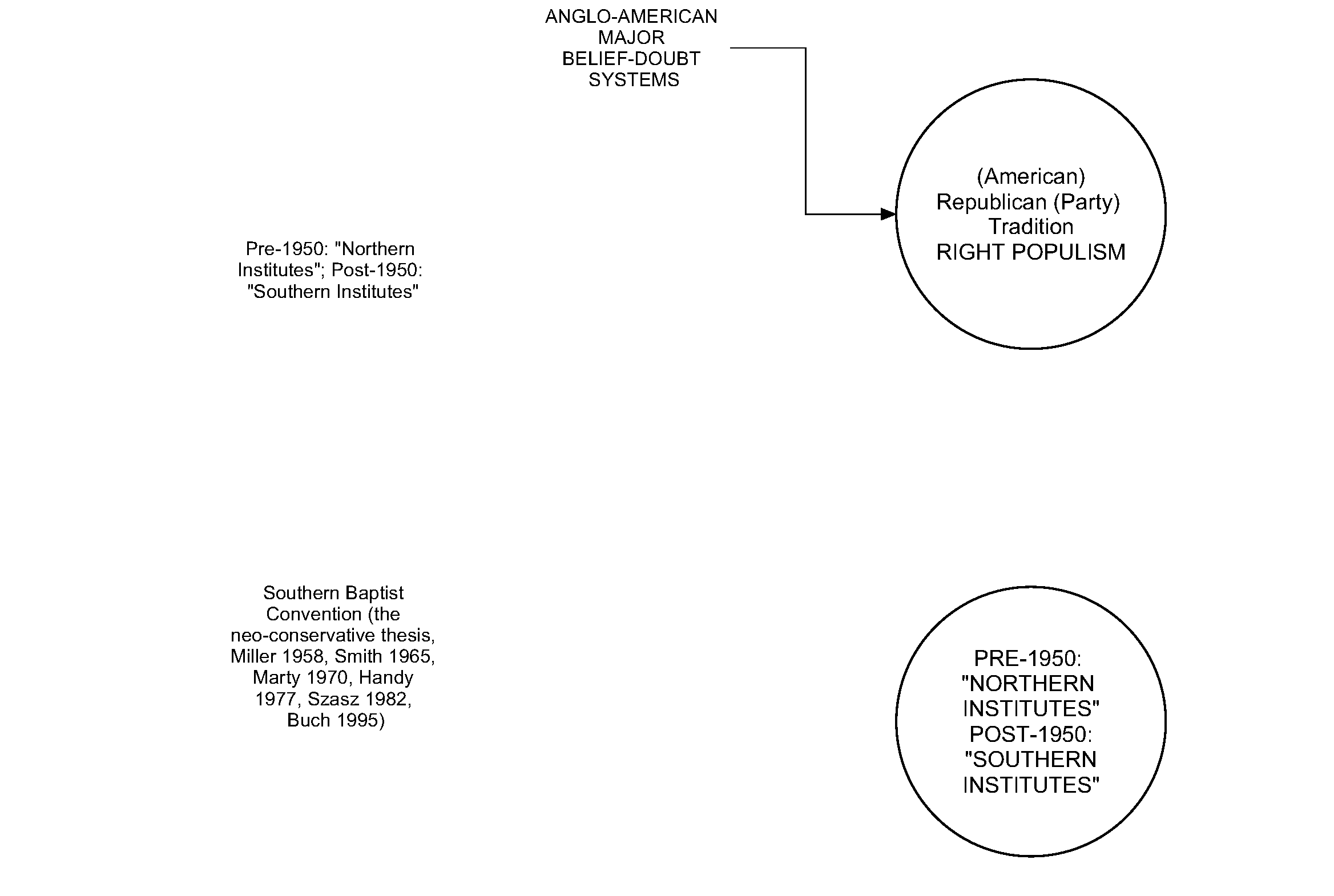
- (American) Republican (Party) Tradition. RIGHT POPULISM.
A basic worldview of the Republican Party (United States), founded in 1854, is difficult to sum up as an accurate summative account, but usually read as the ideology of traditional conservativism. The evidence of the ‘shift thesis’ demonstrated that today’s contextual hermeneutics has made this idea of conservatism a false proposition. The ‘shift thesis’ is a widely held view by American historians that the successes of the Civil Rights Movement in the 1960s, meant that the Republican Party’s core base shifted to the Southern states (and intellectually, the Post-1950: “Southern Institutes”), and as the Northeastern states increasingly Democratic (and intellectually reflected the outlook of Pre-1950: “Northern Institutes”). The Republican Party has become the party of right-wing social reaction.
There are several “Southern Institutes” which could be mentioned as closer to the Republican Party, however, because of Buckley Jr.’s 1951 thesis (God and Man at Yale: The Superstitions of “Academic Freedom), universities are marginalised in Republican discussions. Republicans have either attacked the university sector of higher education, or created a new college sector which reflected the traditional conservative curriculum, and often called, “Christian”. In the social reality, but as most cases, these colleges are not ‘traditional conservative’ but the powerhouse of American neo-conservatism. The analysis has to say, “most cases”, as an increasing number of evangelical college communities are fighting back at the colonialisation of “religion” by the Republican Party. Indeed, the excelling evangelical scholars have been, more than half a century back, critics of “American religion”. The smaller but more powerful colleges for the Party are still thinking in terms of neo-fundamentalism, i.e., centralising every argument on the biblical inerrancies. The challenge is that many good evangelical scholars have yet to realise that the modern evangelical apologetic movements of Bill Bright, Chuck Colson (very politically directed under a theological mask for the contemporary Republican ideology) James Dobson, D. James Kennedy, C. Everett Koop, Francis Schaffer, and R.C. Sproul, are eroding the Neo-Evangelical movement in the uncreditable, invalid, and unsound biblical inerrancy claims.
In the middle of this mess of the American South is the Southern Baptist Convention (SBC; the neo-conservative thesis, Miller 1958, Smith 1965, Marty 1970, Handy 1977, Szasz 1982, Buch 1995). I have already explained the role of the SBC in the American neo-conservative thinking in previous publications, but to again recap: Sydney Alhstrom sees anti-intellectualism as a corollary of American revivalism in A Religious History of the American People (1972), and recounted that large elements of the Southern Baptist Convention (SBC), in their opposition to higher education, worked havoc in the academic program of Southern Theological Seminary in Kentucky. The SBC has had a history of forcing academics out of their seminary positions, often due to academics critical study of the scriptures and Church history. It was under these circumstances that Dr. Crawford Howell Toy was pressured to resign from Southern Baptist Seminary in 1879. Martin Marty (1970) saw Toy’s downfall as a pattern that is typical of southern churches. William H. Whitsett, professor of Church History, also at Southern, had the same fate as Toy nineteen years later (1898). When Whitsett condemned the populist Landmark theory, sectarian Baptists, for whom Landmarkism was a sacred doctrine, threatened to withdraw financial support for the seminary.
Such interference in the academic standards of Southern Baptist seminaries has also been evident in the post-1945 period. In 1962, Professor Ralph H. Elliot was dismissed from his position at Midwestern Baptist Theological Seminary when his published book, The Message of Genesis (1962), was deemed ‘liberal’. It is important to note that anti-intellectualism does not pervade all areas of the American Revivalist tradition (ART), but is only a common characteristic of the majority which articulate American revivalism. In the case of Neo-Calvinist and Neo-Evangelical scholarship, it is not a matter of anti-intellectualism, but a matter of pseudo-intellectualism, flawed or out-dated scholarship which continues to avoid relevant contemporary criticism of its assumptions. This is why otherwise many good evangelical scholars are blind-sighted to the intellectual problems in their midst, and what the contemporised Republican Party represents. Much of that comes from a vehement anti-liberal populism. The history of the Convention has only pushed further in this direction in recent years.
Apart from the Republican Party and the Southern Baptist Convention and likeminded colleges, it is difficult to say what educational entities are that generates the worldview in a singular institute or school of thought. This is due, as indicated, that the anti-liberal populism is also anti-intellectual and anti-education in the full understanding of the concept of education. One of the important historical marker as an institutional shaper is “The (American federal) Senate’s Southern Caucus (1964)” in a fight against “Civil Rights” being legislated. The type of thinking has been carried through into the new century with the Tea Party movement (2009) and the House Freedom Caucus (2015), and developing into the ideology of Trumpism (2016-).
There is a link here between the contemporised information technology thinking in relation to social visions of the future, cemented into the mythology of the American Dream, or in cynical disappointment, creating its dystopian mirror vision. These are the conversations and rhetoric of the “The (American) Contemporary Informational and Data Corporations”. There are only a few works which makes the linkages clear, historically Jacques Ellul (1964): the original and formative in a strange but effective Neo-Calvinist and Reformed-Marxist mixture of thought. Nevertheless, the cyber-capitalism is well documented, even if few works described the intellectual relationships with concepts of culture, history and nations.
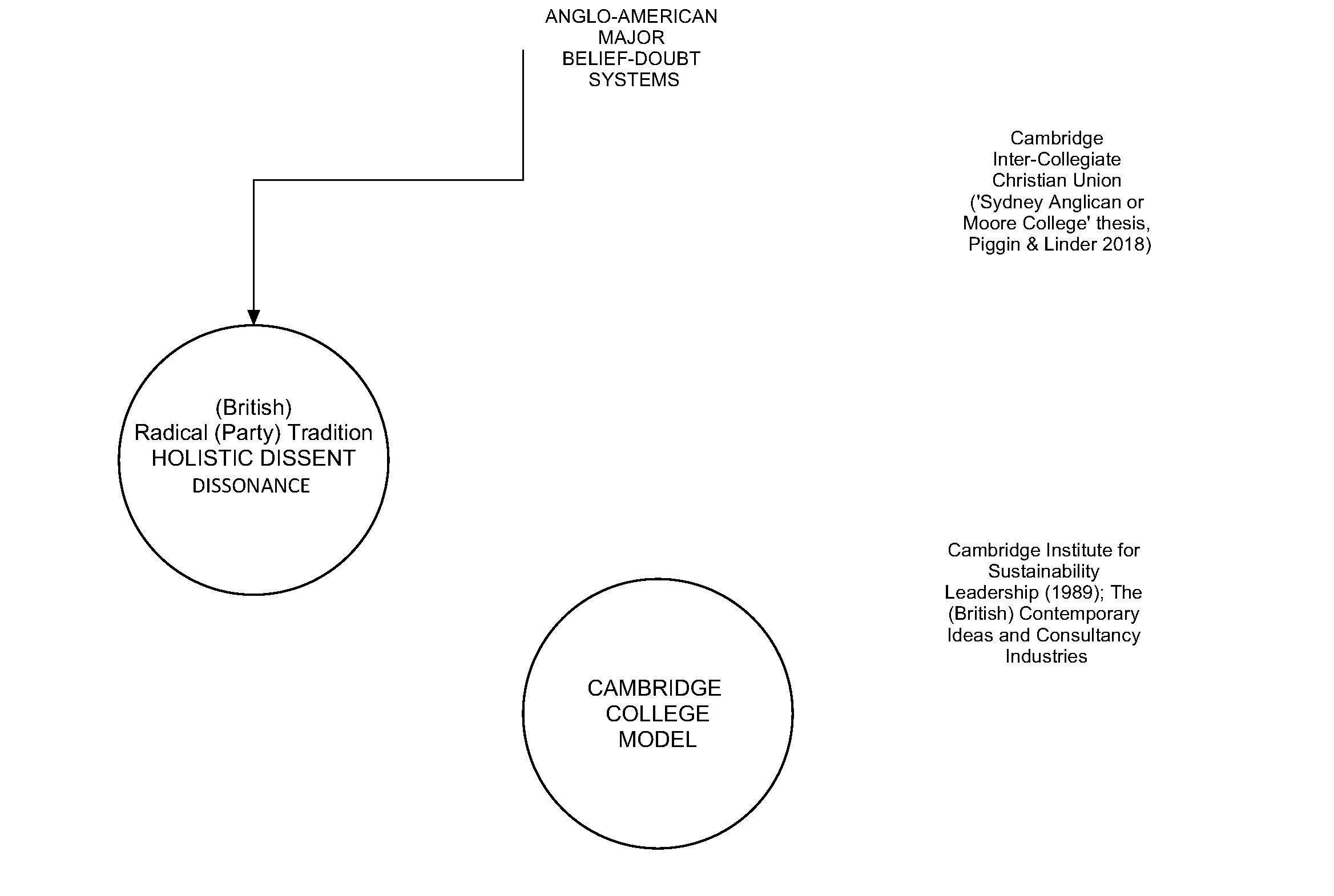
- (British) Radical (Party) Tradition. HOLISTIC DISSENT Dissonance.
English Radicalism or “classical radicalism” or “radical liberalism” had its earliest beginnings during the English Civil War with the Levellers and later with the Radical Whigs, as the retrospective reading of the history in and around the English Civil War. From that development we have, not merely an outdated Whiggish historiography of the 19th century, but the emergence of the new 20th century Progressivist historiography. The new framework is currently evolving in the Postmodern phase. It is not a tradition which will disappear, since philosophically, we can say that somethings are better than others, and since policy says we should not make the better an enemy of the perfect, but the demand for ideological purity is the enemy of social improvement. Hence English Radicalism, or radical parties have been sociologically negative: against the purity of social conservatism, arguing for taking on risks for social change, in the way conservatives continually resist social change to the point of zero (ideologically purity). It is thus ironical that conservatives, still today, accuse the reformist Left of being ‘ideological’. Certainly ‘radicals’ are “ideological” in different variants of: liberalism, republicanism, modernism, secular humanism, antimilitarism, civic nationalism, abolition of titles, rationalism, secularism, redistribution of property, freedom of the press, ‘left-wing causes’, and etc. The ongoing agendas of reforms is what the conservative negatively charge as “being political” with the presumption that most areas of life are generally, on principle, “pre-political”. This is the cause in Conservative blind-side to their own locked-in ideological thinking. Nevertheless, Anglo-American radicalism has its own blind-side.
When conservatives tend to be highly logical in their intellectualism (bubble thinking of logicism), radicals suffer from what I describe as “ Holistic Dissent Dissonance”. The problem is not in taking a holistic approach per se. Nor is the problem in dissenting from convention, or even dissenting from the school of perennial philosophy. It is that there is too frequently cognitive dissonance in the way the poorer radical scholars articulate a positioning of equalitarian holism or any other positioning of radical dissent. Leon Festinger proposed that human beings strive for internal psychological consistency to function mentally in the real world, from his works, When Prophecy Fails: A Social and Psychological Study of a Modern Group That Predicted the Destruction of the World (1956) and A Theory of Cognitive Dissonance (1957). Festinger goes on to say that a person experiences internal inconsistency tends to become psychologically uncomfortable and is motivated to reduce the cognitive dissonance, this then leads to a person justifying the stressful behaviour, either by adding new parts to the cognition causing the psychological dissonance (rationalization) or by avoiding circumstances and contradictory information likely to increase the magnitude of the cognitive dissonance (confirmation bias). More simply, persons avoid admitting mistakes in their thinking, and either rationalise what is poorly rational or blocks emotions by removing the thinking from the situation (context). Psychological dissonance affects the conservatives – the avoidance of admitting mistakes – by the logicism which is something like rationalising in Aristotelian universal spirals (adding cycles upon cycles Infineum). Radicals do not have the traditional recourse and so, despite its universality, the argumentations became fragmented and only signal holism without substantiation. For conservative and radical thinker, none of this is pre-determined, and the solution is the model of communicative rationality (Jürgen Habermas, Communication and the Evolution of society, 1979). In its post-metaphysical model, the argument is:
- called into question the substantive conceptions of rationality (e.g., “a rational person thinks this”) and put forward procedural or formal conceptions instead (e.g., “a rational person thinks like this”);
- replaced foundationalism with fallibilism with regard to valid knowledge and how it may be achieved;
- cast doubt on the idea that reason should be conceived abstractly beyond history and the complexities of social life, and have contextualized or situated reason in actual historical practices;
- replaced a focus on individual structures of consciousness with a concern for pragmatic structures of language and action as part of the contextualization of reason; and
- given up philosophy’s traditional fixation on theoretical truth and the representational functions of language, to the extent that they also recognize the moral and expressive functions of language as part of the contextualization of reason.
The model comes out of post-1945 German radicalism, as the school of Critical Theory. Which is to say that the Anglo-American belief systems of radical and conservative thought could fairly engage, even overlap, before 1945, but after 1945 there was a great disjunction, and this uncoincidentally coincided with the bitter reaction of American neo-conservatism.
It explains the disjunction in the Evangelical World. The European influence in the American Neo-Evangelical movement was to fallibilism from the Barthian reading of Kant. This is directly opposed to the positioning of the American (neo-) fundamentalist movement linked into the American neo-conservatist’s ideological purity (e.g., the purity of Americanism and biblical inerrancy).
The Cambridge College Model has been described above as the contrast with the Oxford Model, however, it might be further suggested that Cambridge had more significant ties to Continental Philosophy than Oxford. That is seen in a Cambridge thinker like Wittgenstein, however, Bernard Williams is better to be said to be an Oxbridge thinker, the philosopher who overcame useless divide between the Anglo-American analytic tradition and the European continental tradition. Williams was able to do that by making links between the Cambridge Wittgenstein’s philosophy of language and Frankfurt Habermas’ philosophy of language, all in a deep historiography influenced by Oxford Berlin’s history of continental ideas.
In the Anglo-American evangelical world, the role of the Cambridge Inter-Collegiate Christian Union provided something of the radical influences from both Anglo-American and German thinking. In the former is the Protestant dissenter’s Arminianism, the Reform’s opposition to the deterministic and highly-doctrinaire classic Calvinism. The latter is more British with the links of Hegelian idealism in liberal evangelicalism, before the American variant of Neo-Orthodoxy killed it, for the United States, from its anti-liberal biases. In the Australian evangelical variant, Piggin & Linder tied the Cambridge outlook to the Keswick movement and the suspicion towards doctrinal fundamentalism in the ranks (2018: 449, 501; 2020: 304). Here is the same link to Protestant dissenter’s Arminianism. I refer this historical description as the Sydney Anglican or Moore College’s thesis. It is a fair institutional self-criticism in the history, particularly as the “Sydney Anglican” historical phenomena. Nevertheless, it misses the deeper layer of the intellectual history, particularly framed in Critical Theory.
The historical debates go to what was sustainable in the intellectual framing. On a wider canvas, ‘secular’ (?), we can look at the Cambridge Institute for Sustainability Leadership (1989). It has been for thirty years examining the same intellectual questions for high-end businesses and technology corporations. (https://www.cisl.cam.ac.uk/). Hence, there is a wider ‘secular’ framework in “The (British) Contemporary Ideas and Consultancy Industries”.

- (American) Democrat (Party) Tradition. LEFT POPULISM.
Many of the descriptions of the American Democrat (Party) tradition and American radicalism are the same as described above for English radicalism. There are important differences. As in the ‘shift thesis’ for the Republican Party, the Democrat Party was not in the camp of “social justice” until the late twentieth century, Kennedy-Johnston politics. Democrat Party has to be remembered as the party of carpetbaggers of the 19th century. Something of the legacy lingers in the Party room. Neither can populist American radicalism escape charges of cognitive dissonance, the same cases of English Radicalism. Historian Gordon S. Wood articulated the differences for American Left Populism and Establishment Democrats from their English counterparts in the 1993 Pulitzer Prize book, The Radicalism of the American Revolution (Vintage Books). The American revolution was a completely different to the English Civil War, and has some, but not all, overlap in the concept of a Puritan Revolution. Wood argues that the American colonists appropriated Whig absolute ideals of ‘liberty,’ different to the articulations of the English Civil War. The American variant ultimately came to represent the unity of personal liberty and public liberty, and a residue of representation in a ‘natural aristocracy’. Differences are drawn out by writers like Henry James. The difference is subtle but go to a power play on informal (America) and formal (British) characteristics.
Most significant, is that these differences are moral characteristics. The question is who was more respectable? The practical informality of the Americans, which the British saw as coarse (disrespectful), or the ancient formality of the British, which the Americans saw as hypocrisy (disrespectful). The question arose from the emergence of the Harvard College Model. Daniel Walker Howe (1970) articulated the tradition of Harvard Moral Philosophy in connection to the Unitarian ‘revolution’ at Harvard (The Unitarian Conscience, Harvard University Press). That ‘revolution’ of thought is the rejection of orthodoxy and dogma for informal logic, or as said today, critical thinking. This kind of thinking was reflected in the short-lived Harvard Institute for International Development (1974-2000). Liberal organisations have been plagued on the American scene from anti-liberal biases which arises from the culture(s).
This is what we have today in the crisis of Americanised evangelicalism. ‘The battle of bible’ of the 1970s and 1980s was only the shaper end, theologically, of intellectual framings, which goes to, one side, outside of traditional evangelicalism, Unitarian-Universalist Thought, and the other side, a hard-driven Calvinistic (neo) fundamentalist thinking, all within the United States. This research began as the doctorate of the current author (‘ART’ thesis, Buch 1995). The current crisis of evangelicalism extends back in a history to the 1960s, and also back to the American neo-conservative paradigm of the Cold War 1950s. There are three ART groupings (American Revivalist Tradition, Buch 1995). American revivalism is expressed by the three distinct characteristics of the American Revivalist tradition; biblicalism, anti-intellectualism, and mechanisation of the Christian faith. Biblicalism is the ideology which gives the biblical canon an exalted authority over the life of the believer.
All aspects of belief, doctrine, thought is expected to conform to precepts that biblicalists claim are recorded and supported by the 66 books of scripture. Biblicalism is based on the belief that the whole biblical canon is a harmonious revelation of God, the Word of God. Although most biblicalists would claim that there are areas of scripture that are vague in their meaning and may be given differing interpretations, the fact that the biblicalists make themselves the interpreters of the divine Word of God means biblicalism, like all sacred book traditions, ends up being the tyranny of the believers over themselves. The believer is locked into a cyclical existence where belief is said to come from the Word of God which is itself the belief of the believer. In such an existence, the process of hermeneutics is avoided.
Anti-intellectualism is the second characteristic present in the American Revivalist tradition. Anti-intellectualism is a state of mind which suspects complex and abstract concepts in favour of dogmatic and poorly-constructed beliefs. It has generally involved the slander, censorship, or prohibition of certain academics and their writings. Richard Hofstadter identifies anti-intellectualism as a significant part of the American culture in Anti-intellectualism in American Life (1966). American anti-intellectualism frequently appeared through the use of American apocryphal stories which were recorded in denominational periodicals, as well as the over-the-top criticism of non-evangelical paradigms in literature (usually paperbacks, tapes, and then digital podcasts) of the Apologetics Industry.
Mechanisation of the Christian faith is the third characteristic of the American Revivalist tradition. The American Revivalist tradition sought to implement various techniques to bring about a ‘revival’, and in the process, reduced the Christian life to a series of techniques in evangelism and discipleship. In this way, the Christian faith was merely mechanical, the elements of faith (belief, prayer, worship, etc.) all locked into a machine-like plan. In the post-1945 period, American revivalism became consumed by searching out revivalistic techniques in the form of evangelistic methodologies. There were many American evangelical writers who claim to have discovered the “techniques” that Jesus used with his disciples. To understand the technological nature of the American Revivalist tradition, one needs to turn to the sociological works of Jacques Ellul, Professor of History and Sociology of Institutions at the University of Bordeaux, and a European evangelical in the Calvinist tradition. Ellul formed the thesis that the predominant characteristic of the contemporary human condition is, in the French definition of the word, technique. Technique, once a tool developed for science, is now a mindset that dominates the affairs of humanity; a mindset where the question of “How it works” becomes all important while the question of “Why it is so” becomes increasingly irrelevant. Method is valued more than content.
In the 21st century, then, “The (American Evangelical/Pentecostal) Contemporary Megachurch Incorporations” has become the expression of the paradigm. The current research analysis is based on a large volume of American liberal historiography during the twentieth century, hovering between the consensus and conflictual schools, with a focus on Richard Hofstadter (1963, 1965). It demonstrates that a megachurch can only exist as a business organisation, with membership growth as the prime reason for that existence.
That the megachurch problem is sourced in the history of the American culture, and some might disagree, having described the Australian Pentecostalism as indigenous. The ‘indigenous’ view is supported by Rocha & Hutchinson (2020: 3-4; 2002: 26), Barry Chant (1999: 39), Byron Klaus (Klaus in Dempster, Klaus & Petersen 1999: 127), and Philip Hughes (1996: 3). It is posited that Australian Pentecostalism is local rather than sourced from overseas missions. However, the American history described and explained the phenomenon of the global megachurch. In Australia, the local megachurch phenomena of the 1970s and 1980s were a product of the American revivalist tradition (Buch 1994). The tradition is a historical series of parochial mass movements which shaped the American ideological narrative, and then exported as Americanism (as in American modernism). Mark Hutchinson and John Wolffe (2012) attempt to link the new direction of the ‘indigenous’ view in the era of 1870-1914 with what they describe as a ‘New Global Spiritual Unity’. There is some bearing here, but it is more accurate to say that it was a vision of world mission undergirded by western cultural values rather than being a true vision of global unity. That new vision had to wait for the mid-twentieth century sociology revolution. Sam Hey’s recent works (2011, 2016) has greatly helped to understand the Australian experience of megachurch in the sociologies of Peter L. Berger (1973), Rodney Stark and William S. Bainbridge (1987), Robert Wuthnow (1988), Wade C. Roof (1999), and Scott Thumma and Travis Dave (2007). The new sociology of religion has done much to have shaped the understanding of and for the megachurch, which for the large part is American, and framed in the American culture.
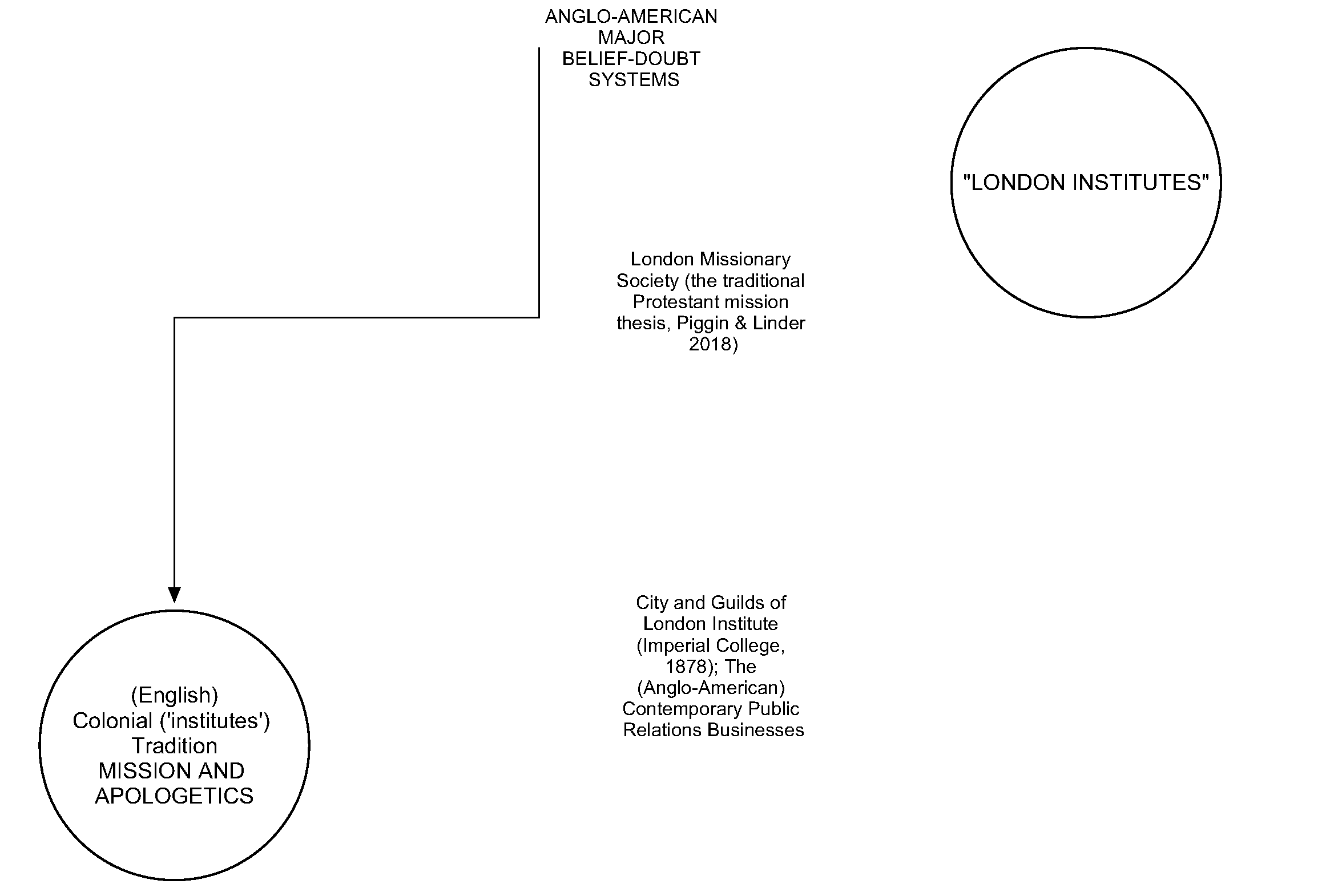
- (English) Colonial (‘institutes’) Tradition. MISSION AND APOLOGETICS.
In popular fiction – novels, television, films – the landscape of London is the signifier of colonialism. This is true as references to “London Institutes”. The “London Missionary Society” (the traditional Protestant mission thesis, Piggin & Linder 2018: 107-15) is at the top of the list. Piggin and Linder refer to the ‘triumphalist spirit of the missionaries’ (110). The ‘religious’ adjoins to the ‘secular’ in City and Guilds of London Institute (Imperial College, 1878). The Institute is an educational organisation in the United Kingdom. Founded on 11 November 1878 by the City of London and 16 livery companies – to develop a national system of technical education, the institute has been operating under royal charter (RC117), granted by Queen Victoria, since 1900. Today, one of it main historical functions is as a registered charity, thereby funding itself as the awarding body for City & Guilds and ILM qualifications, offering many accredited qualifications mapped onto the Regulated Qualifications Framework (RQF).
Here is another great social problem of our times, “The (Anglo-American) Contemporary Public Relations Businesses”. The world of charities and higher education have succumbed to the great mistakes of public relations thinking: 1) dumbing down the narrative of a singular message, 2) engage criticism as unintelligent Apologetics, the system of defence by diverting criticism into fallacious propositions, and 3) produce neo-colonial arguments:
1.0. The Dumbing Down Thesis is well-established, and yet there are ‘religious’ and secular’ readers who act as if it is a surprising new thesis. However, the literature is volumes and sharper to the accurate point than the dismissive institutional apologetics:
1.A. On higher education there is Kenneth Minogue, emeritus professor in political science at the London School of Economics, Alan Smithers, professor of education at Liverpool University, and Frank Furedi, writer and sociologist at the University of Kent, Canterbury (Where Have All The Intellectuals Gone? Continuum, 2004);
1.B. On Secondary Schooling: John Taylor Gatto’s Dumbing Us Down: The Hidden Curriculum of Compulsory Schooling (1991, 2002), where for 30 years there has been nothing new in the criticism of the conventional institutional outlook:
-
-
- It confuses the students. It presents an incoherent ensemble of information that the child needs to memorize to stay in school. Apart from the tests and trials, this programming is similar to the television; it fills almost all the ‘free’ time of children. One sees and hears something, only to forget it again.
- It teaches them to accept their class affiliation.
- It makes them indifferent.
- It makes them emotionally dependent.
- It makes them intellectually dependent.
- It teaches them a kind of self-confidence that requires constant confirmation by experts (provisional self-esteem).
- It makes it clear to them that they cannot hide because they are always supervised.
1.C. The Sociology from Below: in the well-known sociologist Pierre Bourdieu’s (1930–2002) book, Distinction: A Social Critique of the Judgement of Taste (1979), proposed that, in a society in which the cultural practices of the ruling class are rendered and established as the legitimate culture, said distinction then devalues the cultural capital of the subordinate middle- and working- classes, and thus limits their social mobility within their own society.
1.D. Sociology from Above: the social critic Paul Fussell touched on the same themes but speaks of “prole drift” in Class: A Guide Through the American Status System (1983) and focused on them specifically in BAD: or, The Dumbing of America (1991). The difference here is that Fussell’s work can be read as a critique of the ruling class thinking or as the ruling class thinking apologetics: the American neo-conservatism.
2.0. The author has already began a series researched essays on the great problem of unintelligent Apologetics and the Apologetics Industry in our social narratives. The first essay is here: “Why the Disciplines and No Apologetics? Part 1: The Collapse of Schaefferan Apologetics”. In James Fodor’s Unreasonable Faith: How William Lane Craig Overstates the Case for Christianity (Hypatia Press, 2018), Foder shows that many of apologetic arguments are not on historical Christianity per se, but rather presents other related targets for skeptics; arguments which are fallaciously abusive in exclusivist claims for faith. “Christian Apologetic” is nothing more than of a dominion theory, which is a majority thinking of American evangelical believers (i.e., right-wing and where the American left-wing evangelical positioning is the minority), BUT a small fundamentalist minority in the Christian world. To those who label themselves “Neo-Evangelical” and to dismissively disagree with the positioning of others in the argument, the call is to consider the weight of evidence in the critical works against Apologetics, not merely for any ‘religion’, but as a ‘secular’ characteristic of the linguistics , and be open to the suggestion that one may have not understood the story of the “Neo-Evangelical rebellion” from fundamentalist orthodoxy, as shown in the historiography of George Marsden and Mark Noll. The historiography starts the analysis as discipline learning, but it then proceeds into seven other sub-disciplinary areas.
3.0. Neo-Colonial Narratives, which is a reference to the debate of the narrative(s) itself (apologetics) and the criticism of the narrative(s) (critical theory). Neocolonialism is the continuation or reimposition of imperialist rule by a state (usually, a former colonial power) over another nominally independent state (usually, a former colony). Neocolonialism takes the form of economic imperialism, globalization, cultural imperialism and conditional aid to influence or control a developing country instead of the previous colonial methods of direct military control or indirect political control (hegemony). That the roots of City and Guilds of London Institute was in Imperial College (1878) is not coincidence but expresses the correlation between technical forms of education and colonialism. In 1907, Imperial College London was established by royal charter, unifying the Royal College of Science, Royal School of Mines, and City and Guilds of London Institute. Here the ethos of scientism and concept of tékhnē is clear.
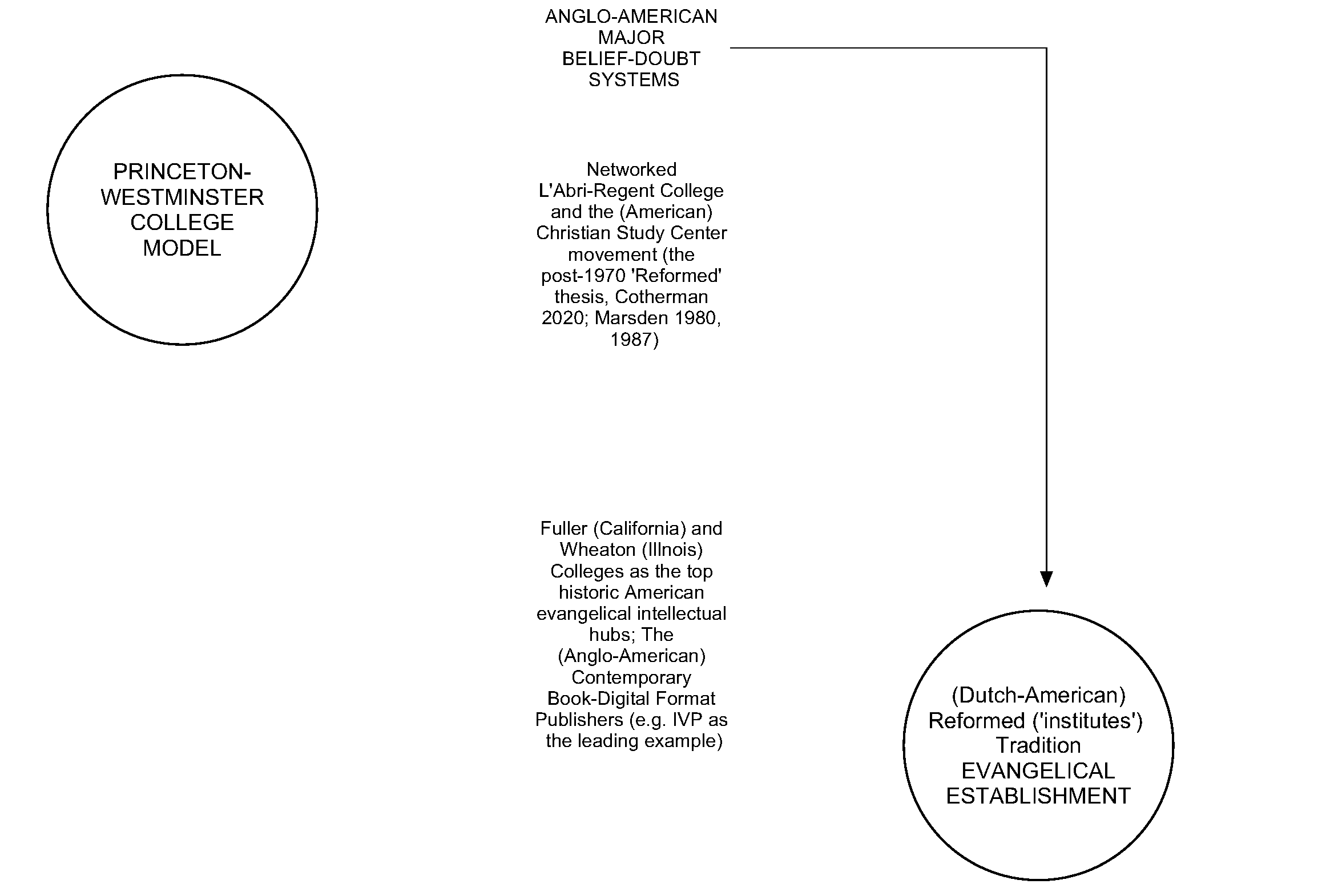
- (Dutch-American) Reformed (‘institutes’) Tradition. EVANGELICAL ESTABLISHMENT.
The wider neo-colonial criticism of ‘Anglo-American Major Belief System 5’ goes to the historical heart in the broad and various sub-sets of the Dutch Reformed Tradition (‘6’). However, since Charles Hodge of the Princeton-Westminster College Model, in the 19th century, that Dutch Reformed Tradition was reshaped as American Neo-Colonialism. Since the 1960s, the Dutch-American Reformed Tradition has become the intellectual powerhouse of the American Evangelical Establishment, since the Left-Wing Evangelicalism has had to contend with its own cognitive dissonance. Neo-Calvinism works better as system thought because of its tight logic, but that logicism is the means in the loss of critical thinking. The American Evangelical Establishment is neocolonialism in the evangelical world, but now there is a revolt against American evangelical institutions and politics from the Europeans, Brits, Australians, Pacific Islanders, the Africans (ethnic and national variants), groupings of the Middle East (ethnic and national variants), and Central-South-East Asians (ethnic and national variants). The world has had enough of Americans mistaking their own “national culture” for the economic superpower and its neo-colonial agenda. On the ground in the United-States, and overflowed into Canada, Australia, and New Zealand, this can be documented in the ‘Networked L’Abri-Regent College and the (American) Christian Study Center movement’ (the post-1970 ‘Reformed’ thesis, Cotherman 2020; Marsden 1980, 1987). Added to the network, as the American Evangelical intellectual engines, are Fuller (California) and Wheaton (Illinois) Colleges, as the top historic American evangelical intellectual hubs. Furthermore, the great neo-colonial distributors have been “The (Anglo-American) Contemporary Book-Digital Format Publishers (e.g. IVP as the leading example)”.
Concluding remarks
Recently I had to correct an observation on the ‘disbelieving’ ‘Sunday Assemblies’ movement from an evangelical scholar, linking the observation that the movement declined faster than mainline Christian fellowships in the last five years, and all but disappeared while most evangelical groups at least limp on. There was a misunderstood conclusion of the ‘disbelieving’ movement’s telos, ethos, and mission for non-evangelical organisations. The idea of observing “play church without all that Jesus-talk” is another example of completely misunderstanding the telos, ethos, and mission here. There is a distinction between “Jesus-talk” and “God-talk”. A wide gap in the western intellectual histories since the Reformation. Dominic Erdozain’s (2016) The Soul of Doubt: the religious roots of unbelief from Luther to Marx (Oxford University Press) is an excelled treatment why the evangelical criticism is utterly wrong.
It is another great example that Anglo-American evangelical colleges have dropped the ball very badly in missing and substantive fields of the intellectual histories. But then again, such arrogant evangelical leadership — as with the whole arrogance in the Anglo-American belief systems — rejected systems thought ignorantly in succumbing to the faulty thinking of American pragmatism. What “works” is measured by the frameworks of “ideas” (idealism), but if you fail to scope out sufficiently, the thinking is lost in a smaller bubble. Having read Charles Cotherman’s To Think Christianly (2020) this is very clear to me, comparing the bubble scoping of the Americanised Christian study center movements to wider intellectual frameworks.

The Readings which have Developed The Multi-Thread Worldview(s) of this Researched Multi-Layered Critique
Ahlstrom, Sydney E (1972). A Religious History of the American People, New Haven/London. Yale University Press.
Almond, P. (1983). Wilfred Cantwell Smith as Theologian of Religions. The Harvard Theological Review, 76(3), 335-342. Retrieved April 29, 2020, from www.jstor.org/stable/1509527
Almond, Philip C. (2016). The devil: a new biography. I.B. Tauris, London
Almond, Philip C. (2018). God : A new biography, I.B. tauris, London
Apter, E. (1997). Out of Character: Camus’s French Algerian Subjects. MLN, 112(4), 499-516. Retrieved May 22, 2020, from www.jstor.org/stable/3251325
Arcus, M. E. (1980). Value Reasoning: An Approach to Values Education. Family Relations, 29(2), 163–171. https://doi.org/10.2307/584067
Barcan, A. (2007). Whatever Happened to Adult Education? AQ: Australian Quarterly, 79(2), 29-40. Retrieved April 29, 2020, from www.jstor.org/stable/20638464
Bashford, Alison (2007) World population and Australian land: Demography and sovereignty in the twentieth century, Australian Historical Studies, 38:130, 211-227, DOI: 10.1080/10314610708601243
Beaumont, Joan (2015). Remembering Australia’s First World War, Australian Historical Studies, 46:1, 1-6, DOI: 10.1080/1031461X.2015.1000803
Berger, Peter L (1973). The Social Reality of Religion, Harmondsworth, Penguin.
Berlin, Isaiah (1958). Two Concepts of Liberty, Lecture, at the University of Oxford on 31 October 1958.
Berlin, Isaiah; with Bernard Williams (1994). ‘Pluralism and Liberalism: A Reply’ (to George Crowder, ‘Pluralism and Liberalism’, Political Studies 42 293–303), Political Studies 42 (1994), 306–9.
Binnion, Denis (1997). What’s New in Course Programming? A Brief Analysis of WEA Course Programs 1917-1976, Australian Journal of Adult and Community Education, 37:1, 27–32.
Binnion, Denis (2013). One Hundred Years of the WEA, Australian Journal of Adult Learning, 53:30, 478–481.
Blackstock, A., & O’Gorman, F. (Eds.). (2014). Loyalism and the Formation of the British World, 1775-1914. Woodbridge, Suffolk, UK; Rochester, NY, USA: Boydell & Brewer. doi:10.7722/j.ctt5vj7dp
Borghesi, Massimo (2021). Catholic Discordance: Neoconservatism vs. the Field Hospital Church of Pope Francis, Collegeville: Liturgical Press Academic
Bosworth, R.J.B. (2011) The Second World Wars and their Clouded Memories, History Australia, 8:3, 75-94, DOI: 10.1080/14490854.2011.11668389
Bourdieu, Pierre (1979). Distinction: A Social Critique of the Judgement of Taste, Routledge.
Bourdieu, Pierre (with Jean Claude Passeron, 1990). Reproduction in Education, Society and Culture, London: Sage Publications Ltd.
Bourke, Paul (1976) Politics and ideas: The work of Richard Hofstadter, Historical Studies, 17:67, 210-218, DOI: 10.1080/10314617608595548
Brown, David S. (2006). Richard Hofstadter: An Intellectual Biography, University of Chicago Press.
Bruner, Jerome S. (1977). The Process of Education, Cambridge: Harvard University Press,
Bruner, Jerome S. (1996). The Culture of Education. Cambridge: Harvard University Press.
Buccola, Nicholas (2019). The Fire is Upon Us: James Baldwin, William F. Buckley Jr., and the Debate over Race in America, Princeton University Press.
Buch, Neville (1994). American Influence on Protestantism in Queensland since 1945, Ph.D. thesis, Department of History, University of Queensland, August. (Awarded April 1995)
Buch, Neville (1995). ‘Americanizing Queensland Protestantism’, Studying Australian Christianity 1995 Conference, Robert Menzies College, Macquarie University, July.
Buch, Neville (1995). The Significance of the American Invasion for Australian Churches: A Preliminary Examination, War’s End Conference (Queensland Studies Centre, Griffith University), University Hall, James Cook University, July.
Buch, Neville (1997). ‘‘…many distractions confronting the Church’: The Responses of Protestant Religion to Popular Culture in Queensland 1919-1969,’ Everyday Wonders Popular Culture: Past and Present’, 10th International Conference, Crest Hotel, Brisbane, June.
Buch, Neville (2007). Religion Remain a Problem. The Skeptic. Summer.
Buch, Neville (2017). Hearts Lifted Up with the Spirit of Seton. A History of Seton College, Mount Gravatt East, Queensland, November 2017.
Buch, Neville (2018). Small is Big: Scaling the Map for Brisbane Persons and Institutions 1825-2000. ‘The Scale of History’ AHA Conference, Australian National University, 4 July 2018.
Buch, Neville (2019). The Australian Literary Setting of the ‘Queensland Character’ and Mid-Twentieth Century Philosophy: The Philosophical Development of Jack McKinney and the Problem of Knowledge 1935-1975. Revolutions & Evolutions in Intellectual History Conference. International Society for Intellectual History, University of Queensland, 6 June 2019.
Buckley Jr., William F. (1951). God and Man at Yale: The Superstitions of “Academic Freedom”, Washington, D.C: Regnery Publishing.
Buckley, William F. (1959, 2016). Up From Liberalism, Martino Fine Books
Burns, A. (1962). Australia, Britain, and the Common Market: Some Australian Views. The World Today, 18(4), 152-163. Retrieved May 6, 2020, from www.jstor.org/stable/40394180
Burns, A. L. S. Encel & D. E. Kennedy (1969) The political sciences: A symposium, Historical Studies, 14:53, 73-79, DOI: 10.1080/10314616908595408
Carr, Helen and Suzannah Lipscomb (edited, 2021). What is History Now? How the Past and Present Speak to Each Other, Weidenfeld & Nicolson, London, UK.
Carter, Sarah (2018) Book Review: Building Better Britains? Settler Societies in the British World 1783–1920, Australian Historical Studies, 49:2, 277-278, DOI: 10.1080/1031461X.2018.1454269
Carwardine, Richard (1978). Trans-Atlantic Revivalism: Popular Evangelicalism in Britain and America 1790-1865, Connecticut: Greenwood Press.
Chant, Barry (1999), ‘The spirit of Pentecost: Origins and development of the Pentecostal movement in Australia, 1870–1939’, PhD thesis, Macquarie University.
Cherrington, E. (1923). World-Wide Progress toward Prohibition Legislation. The Annals of the American Academy of Political and Social Science, 109, 208-224. Retrieved April 28, 2020, from www.jstor.org/stable/1015011
Chomsky, Noam (2004; edited by Donaldo Macedo). Chomsky on Mis-Education, Lanham: Rowman & Littlefield
Collins, Randall (1998). The Sociology of Philosophies: A Global Theory of Intellectual Change, Harvard University Press.
Collins, Randall (1999). Macrohistory : essays in sociology of the long run. Stanford University Press, Stanford, Calif
Collins, Randall (2005). Interaction ritual chains. Princeton University Press, Princeton, N.J. ; Oxford
Collins, Randall (2008). Violence A Micro-sociological Theory, Princeton University Press
Collins, Randall (2019). The Credential Society: An Historical Sociology of Education and Stratification, Columbia University Press.
Corning, P. (2008). Holistic Darwinism: The New Evolutionary Paradigm and Some Implications for Political Science. Politics and the Life Sciences, 27(1), 22-54. Retrieved May 8, 2020, from www.jstor.org/stable/40072944
Cotherman, Charles E. (2020). To Think Christianly, IVP Academic
Crawford, John (2019) Book Review: Race and Imperial Defence in the British World, 1870–1914, Australian Historical Studies, 50:3, 394, DOI: 10.1080/1031461X.2019.1633049
Crawford, R. M. (1945) History as a science, Historical Studies: Australia and New Zealand, 3:11, 153-175, DOI: 10.1080/10314614508594856
Crawley, Rhys (2015) Marching to the Beat of an Imperial Drum: Contextualising Australia’s Military Effort During the First World War, Australian Historical Studies, 46:1, 64-80, DOI: 10.1080/1031461X.2014.994540
Crozier-De Rosa, Sharon (2019) Book Review: You Daughters of Freedom: The Australians Who Won the Vote and Inspired the World, Australian Historical Studies, 50:3, 389-390, DOI: 10.1080/1031461X.2019.1633042
Cupitt, Don (2008). The Meaning of the West: An Apologia for Secular Christianity, SCM Press
Cupitt, Don (2009). Jesus and Philosophy, SCM Press
Curtis, Jesse (2021). The Myth of Colorblind Christians : Evangelicals and White Supremacy in the Civil Rights Era, New York University Press
Dadswell, Gordon (2005). The Workers’ Educational Association of Victoria and the University of Melbourne: a Clash of Purpose? Australian Journal of Adult Learning, 45:3, 331–351.
Dadswell, Gordon (2007). From Idealism to Realism: the Workers’ Educational Association of Victoria 1920-1941, History of Education Review, 36:2, 61–73.
Davey, Gwenda Beed (2016) Book Review: Children, Childhood and Youth in the British World, Australian Historical Studies, 47:3, 496-498, DOI: 10.1080/1031461X.2016.1208721
Davis, Michael (2017) Book Review: Climate, Science, and Colonization: Histories from Australia and New Zealand, Australian Historical Studies, 48:1, 125-126, DOI: 10.1080/1031461X.2016.1273047
de Beauvoir, Simone (1972). All Said and Done: The Autobiography of Simone de Beauvoir 1962-1972, Paragon House.
Dempster, Murray A, Klaus, Byron D & Petersen, Douglas (edited, 1999), The Globalization of Pentecostalism: a religion made to travel, Regnum, Oxford.
De Sousa Santos, B. (1992). A Discourse on the Sciences. Review (Fernand Braudel Center), 15(1), 9-47. Retrieved May 8, 2020, from www.jstor.org/stable/40241211
Dewey, John (1909). Moral Principles in Education, Boston : Houghton Mifflin
Dewey, John (1916). Democracy and Education: An Introduction to the Philosophy of Education, London: Macmillan and Co. Limited.
Dewey, John (1938). Experience and Education, New York: Simon and Schuster.
Dilthey, Wilhelm; Rudolf A. Makkreel and Frithjof Rosi (2019). Wilhelm Dilthey: Selected Works, Volume VI: Ethical and World-View Philosophy, Princeton University Press
Donnelly, Kevin (edited 2022). Christianity Matters: In These Troubled Times, Melbourne: Wilkerson.
Du Mez, Kristin Kobes (2020). Jesus and John Wayne: How White Evangelicals Corrupted a Faith and Fractured a Nation, New York: Liveright Publishing Corporation
Dymock, Darryl (2001). ‘A Special and Distinctive Role’ in Adult Education, WEA Sydney 1953-2000, Allen & Unwin, State Library of NSW Mitchell Library.
Echenberg, M. (2002). Pestis Redux: The Initial Years of the Third Bubonic Plague Pandemic, 1894-1901. Journal of World History,13(2), 429-449. Retrieved May 22, 2020, from www.jstor.org/stable/20078978
Edwards, Lee (2019). William F. Buckley Jr. : The Maker of a Movement, ISI Books
Elliot, Ralph H. (1962). The Message of Genesis, The Bethany Press
Ellul, Jacques (1964). The Technological Society. Translated from the French by John Wilkinson. With an introd. by Robert K. Merton Knopf New York
Ellul, Jacques (1973). Propaganda: The Formation of Men’s Attitudes, New York:
Erb, F. (1916). The Development of the Young People’s Movement. The Biblical World, 48(3), 129-192. Retrieved May 6, 2020, from www.jstor.org/stable/3142079
Erdozain, Dominic (2016). The Soul of Doubt: the religious roots of unbelief from Luther to Marx, Oxford University Press
Fanon, Frantz (1963). The Wretched of the Earth, Penguin, London, UK.
Faye, Esther (1998). Growing up ‘Australian’ in the 1950s: The dream of social science, Australian Historical Studies, 29:111, 344-365, DOI: 10.1080/10314619808596077
Fisher, Helen (2019). Anatomy of Love: A Natural History of Mating, Marriage, and Why We Stray, WW Norton & Co.
Festinger, Leon (1956). When Prophecy Fails: A Social and Psychological Study of a Modern Group That Predicted the Destruction of the World, New York : Harper & Row
Festinger, Leon (1957). A Theory of Cognitive Dissonance, Stanford University
Fodor, James (2018). Unreasonable Faith: How William Lane Craig Overstates the Case for Christianity, Hypatia Press, US.
Frankfurt, Harry G. , Translated by Michael Bischoff (2014). Bullshit, Suhrkamp Verlag AG
Freeman, Mark (2013). ‘An Advanced Type of Democracy’? Governance and Politics in Adult Education C.1918-1930, History of Education, 42:1, 45–69.
Freire, Paulo. (1970a). Cultural Action and Conscientization, Harvard Education Review, 40, (3), 452-477.
Freire, Paulo. (1970b). Pedagogy of the Oppressed, New York: Seabury Press.
Freire, Paulo. (1973). Education for Critical Consciousness, New York: Seabury Press.
Freire, Paulo. (1976). Education, the Practice of Freedom, London: Writers and Readers Publishing Cooperative.
Freire, Paulo. (1985). The Politics of Education: Culture, Power and Liberation, South Hadley: Bergin & Garvey.
Freire, Paulo. (1994). Pedagogy of Hope: Reliving Pedagogy of the Oppressed, New York: Continuum.
Freire, Paulo. (1998b). Politics and Education, Los Angeles: UCLA Latin American Center Publications.
Freundlieb, Dieter & Hudson, Wayne & Rundell, John F (2004). Critical theory After Habermas. Brill, Leiden ; Boston
Friesen, G., & Taksa, L. (1996). Workers’ Education in Australia and Canada: A Comparative Approach to Labour’s Cultural History. Labour History, (71), 170-197. doi:10.2307/27516453
Fukuyama, Francis (2012). The End of History and the Last Man (Twentieth anniversary edition). London Penguin Books
Furedi, Frank (2004). Where Have All The Intellectuals Gone? Continuum
Fussell, Paul (1983). Class: A Guide Through the American Status System, Simon & Schuster
Fussell, Paul (1991). BAD: or, The Dumbing of America, Summit Books
Garrison, J. (1995). Deweyan Pragmatism and the Epistemology of Contemporary Social Constructivism, American Educational Research Journal, 32(4), 716-740.
Gatto, John Taylor (1991, 2002). Dumbing Us Down: The Hidden Curriculum of Compulsory Schooling, New Society Publishers
Gert, B. (2005). Moral Arrogance and Moral Theories. Philosophical Issues, 15, 368–385. http://www.jstor.org/stable/27749850
Giovanni B. Sala & Spoerl, J (1994). Intentionality versus Intuition (pp. 81-101) in Doran R. (Ed.), Lonergan and Kant (pp. 81-101). University of Toronto Press. Retrieved May 7, 2020, from www.jstor.org/stable/10.3138/j.ctt2tv28t.8
Goldberg, S. C. (2016). Arrogance, Silence, and Silencing. Proceedings of the Aristotelian Society, Supplementary Volumes, 90, 93–112. https://www.jstor.org/stable/26780423
Graham, Elaine (2013). Between a Rock and a Hard Place: Public Theology in a Post-Secular Age, SCM Press
Gray, John. Berlin. Fontana, 1995
Grayling, A.C. (2022). For the Good of the World : Is Global Agreement on Global Challenges Possible? Oneworld Publication
Griffiths, Tom (1989) ‘The natural history of Melbourne’: The culture of nature writing in Victoria, 1880–1945, Australian Historical Studies, 23:93, 339-365, DOI: 10.1080/10314618908595818
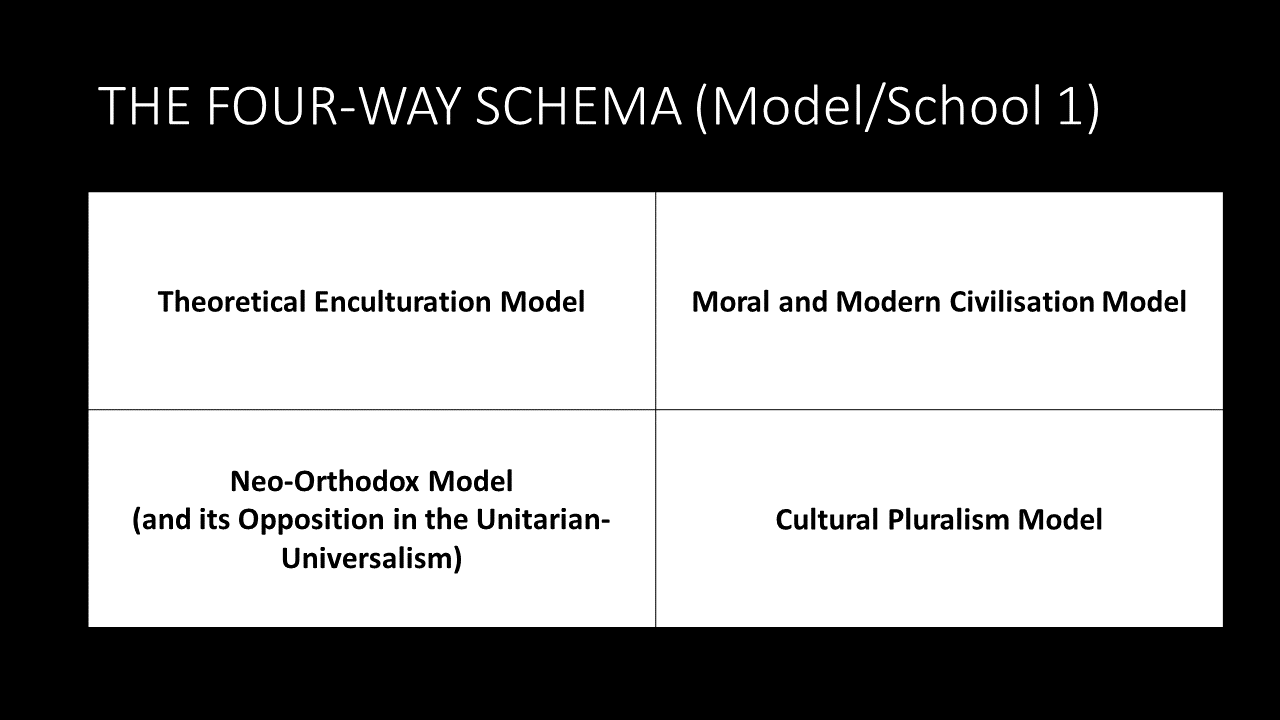
Haack, Susan (1993). Evidence and Inquiry: Towards Reconstruction in Epistemology, London: Wiley-Blackwell.
Habermas, Jürgen (1991). Knowledge and Human Interests, Polity Press
Habermas, Jürgen (1991). The Theory of Communicative Action : Lifeworld and Systems, a Critique of Functionalist Reason, Volume 2, Polity Press
Habermas, Jürgen (1997). Between Facts and Norms: Contributions to a Discourse Theory of Law and Democracy, Polity Press
Habermas, Jürgen (1992). Communication and the Evolution of Society, Polity Press
Habermas, Jürgen (2010). Legitimation Crisis, Polity Press
Hammonds, E. (2011). Race and the Genetic Revolution: Science, Myth, and Culture (Krimsky S. & Sloan K., Eds.). New York: Columbia University Press. doi:10.7312/krim15696
Handasyde, K. ., & Massam, K. (2022). Introduction to the Special Issue: Dialogues of Secular and Sacred: Christianity in Mid-Twentieth-Century Australian Culture. Journal for the Academic Study of Religion, 35(1), 1–3. https://doi.org/10.1558/jasr.22399
Handy, Robert T. (1976). A History of the Churches in the United States and Canada, Oxford at the Clarendon Press.
Handy, Robert T. (1977). A Christian America: Protestant Hopes and Historical Realities, New York. Oxford University Press.
Hardcastle, V. (1993). The Naturalists versus the Skeptics: The Debate Over a Scientific Understanding of Consciousness. The Journal of Mind and Behavior, 14(1), 27-50. Retrieved May 8, 2020, from www.jstor.org/stable/43853732
Harris, F. (2007). Dewey’s Concepts of Stability and Precariousness in His Philosophy of Education, Education and Culture, 23(1), 38-54.
Heuer, Ulrike and Gerald Lang (eds., 2012). Luck, Value and Commitment: Themes from the Ethics of Bernard Williams, Oxford: Oxford University Press.
Hey, Sam (2011). God in the Suburbs and Beyond: The Emergence of an Australian Megachurch and Denomination. Ph.D. thesis, School of Humanities, Griffith University.
Hey, Sam and Geoff Waugh (2016). Megachurches: Origins, Ministry and Prospects. Morning Star Publishing.
Hoffer, Eric (2002). The True Believer : thoughts on the nature of mass movements (First Perennial Modern Classics edition). Harper Perennial Modern Classics, New York
Hoffer, Peter Charles (2014). Clio among the Muses: Essays on History and the Humanities, New York University Press
Hofstadter, Richard (1955, re-issued 1988). The Age of Reform: From Bryan to f.d.r., New York: Random House USA Inc.
Hofstadter, Richard (1963). Anti-intellectualism in American Life, New York: Random House USA Inc.
Hofstadter, Richard (1965; rev. edition, 2008) The Paranoid Style in American Politics, and Other Essays, New York: Random House USA Inc.
Holifield, B. (2010). Who Sees the Lake? Narcissism and Our Relationship to the Natural World. Jung Journal: Culture & Psyche, 4(1), 19-31. doi:10.1525/jung.2010.4.1.19
Hook, Sidney (1971). Illich’s De-Schooled Utopia, Encounter 37 (4), 53-56.
Horne, Donald. (1964; 2009). The Lucky Country, Penguin Random House Australia
Horne, Donald (1976). Death of the Lucky Country, Penguin Books Australia
Horne, Donald (2022). The Education of Young Donald Horne Trilogy, NewSouth Publishing
Howe, Brian & Hughes, Philip, et al. (2003). Spirit of Australia II : religion in citizenship and national life. ATF Press, Hindmarsh, SA
Howe, Charles (1999). Clarence R. Skinner: Prophet of New Universalism, Boston: Skinner House Books
Howe, Charles (2005). The Essential Clarence Skinner: A Brief Introduction to His Life and Writing, Boston: Skinner House Books
Howe, Daniel Walker (1970). The Unitarian Conscience: Harvard moral philosophy, 1805-1861, Harvard University Press
Howe, Neil and William Strauss (2007). Millennials Go to College, LifeCourse Associates
Howe, Renate (1980) Protestantism, social Christianity and the ecology of Melbourne, 1890–1900, Historical Studies, 19:74, 59-73, DOI: 10.1080/10314618008595624
Hudson, Wayne (1997). Constructivism and history teaching. Griffith University, Brisbane, Qld.
Hudson, Wayne (2016). Australian Religious Thought, Monash University Publishing
Hughes, Philip (1996). The Pentecostals in Australia, Australian Government Publishing Service, Canberra, ACT.
Huntington, Samuel (1996). The Clash of Civilizations and the Remaking of World Order, Simon & Schuster.
Hutchinson, Mark & Wolffe, John (2012). A Short History of Global Evangelicalism, New York: Cambridge University Press
Jackman, S. (1994). Measuring Electoral Bias: Australia, 1949-93. British Journal of Political Science, 24(3), 319-357. Retrieved April 29, 2020, from www.jstor.org/stable/194252
James, Henry (1916, 2004). The Ivory Tower, Introduction by Alan Hollinghurst, Essay by Ezra Pound, New York Review Books.
Jiang, J. (2017). Character and Persuasion in William James. William James Studies, 13(1), 49-70. Retrieved May 7, 2020, from www.jstor.org/stable/26203815
Kant, Immanuel (1781, 2007). Translated by Marcus Weigelt. Critique of Pure Reason, Penguin Books.
Kohn, Rachael (2003). The New Believers: Re-Imagining God, Harper Collins
Lake, Marilyn (2019). Progressive New World: how settler colonialism and transpacific exchange shaped American reform. Harvard University Press, Cambridge, Massachusetts ; London, England
La Nauze, J. A. (1965) Hearn on natural religion: An unpublished manuscript, Historical Studies: Australia and New Zealand, 12:45, 119-122, DOI: 10.1080/10314616508595314
Lake, Marilyn (2013) British world or new world? History Australia, 10:3, 36-50, DOI: 10.1080/14490854.2013.11668478
Lake, Marilyn (2014) Challenging the ‘Slave-Driving Employers’: Understanding Victoria’s 1896 Minimum Wage through a World-History Approach, Australian Historical Studies, 45:1, 87-102, DOI: 10.1080/1031461X.2013.877501
Lake, Meredith (2018). The Bible in Australia: A cultural history, Sydney: New South.
Law, Stephen (2007). The War for Children’s Minds, London: Routledge.
Leaves, Nigel (2004). Odyssey on the Sea of Faith: The Life & Writings of Don Cupitt, Polebridge Press, Farmington, MN.
Lindvall, T., & Quicke, A. (2011). The Studio Era of Christian Films. In Celluloid Sermons: The Emergence of the Christian Film Industry, 1930-1986 (pp. 116-143). NYU Press. Retrieved May 9, 2020, from www.jstor.org/stable/j.ctt9qfkzh.9
Lowenthal, David (1996). The Heritage Crusade and the spoils of history. Viking, London
Lowenthal, David (2015). The Past is a Foreign Country – revisited (Revised and updated edition). Cambridge University Press, Cambridge ; New York
Lowenthal, David (2019). Quest for the Unity of Knowledge. Routledge Taylor & Francis Group, London ; New York
Macintyre, Stuart (2009) The Poor Relation: Establishing the Social Sciences in Australia, 1940–1970, Australian Historical Studies, 40:1, 47-62, DOI: 10.1080/10314610802663019
Ma, W. (2008). Review of Miller & Yarmamori’s Global Pentecostalism in Transformation, 25(4), 274-276. Retrieved May 9, 2020, from www.jstor.org/stable/43052748
Macklin, Michael (1972). To Deschool Society, Cold Comfort, December 1972.
Macklin, Michael (1975). Those Misconceptions are not Illich’s, Educational Theory, 25 (3), 323-329
Macklin, Michael (1976). When Schools are Gone: A Projection of the Thought of Ivan Illich, St. Lucia: University of Queensland Press.
Macklin, Michael (1986). Education in and for a Multicultural Australia, Australian Teachers Federation Conference, Sydney, October 1986.
Maddox, M. (2003). God, Caesar & Alexander. AQ: Australian Quarterly, 75(5), 4-39. Retrieved April 29, 2020, from www.jstor.org/stable/20638202
Maddox, M. (2015). Finding God in Global Politics. International Political Science Review / Revue Internationale De Science Politique, 36(2), 185-196. Retrieved April 29, 2020, from www.jstor.org/stable/24573460
Maddox, Marion (2001). For God and Country: Religious Dynamics in Australian Federal Politics, Canberra: Parliament of Australia
Maddox, Marion (2005). God Under Howard: The Rise of The Religious Right in Australian Politics, Sydney: Allen & Unwin
Maddox, Marion (2014). Taking God to School: The End of Australia’s Egalitarian Education, Allen & Unwin
Magee, Bryan (1997). Confessions of a Philosopher: A Personal Journey through Western Philosophy from Plato to Popper, New York: The Modern Library.
Mander, Jerry (1978, 2002). Four Arguments for the Elimination of Television, HarperCollins.
Mandik, P. (2011). Supervenience and neuroscience. Synthese, 180(3), 443-463. Retrieved May 8, 2020, from www.jstor.org/stable/41477566
Marsden, George M. (1980). Fundamentalism and American Culture: The Shaping of Twentieth Century Evangelicalism 1870-1925, New York. Oxford University Press.
Marsden, George M. (1987). Reforming Fundamentalism. Fuller Seminary and the New Evangelicalism, Grand Rapids: William B. Eermanns Publishing Company.
Marti, Gerardo (2020). American Blindspot: Race, Class, Religion, and the Trump Presidency, London: Rowman & Littlefield.
Marty, Martin E. (1970). Righteous Empire. The Protestant Experience, New York: The Dial Press.
Martyn Lyons (2010) A New History from Below? The Writing Culture of Ordinary People in Europe, History Australia, 7:3, 59.1-59.9, DOI: 10.2104/ha100059
Massam, K. (2022). ‘All Our Time’: Catechetics, Cardijn and the Jesus of Everyday Discipleship. Journal for the Academic Study of Religion, 35(1), 74–93. https://doi.org/10.1558/jasr.22396
Mays, C. (2013). Who’s Driving This Thing, Anyway?: Emotion and Language in Rhetoric and Neuroscience. JAC, 33(1/2), 301-314. Retrieved May 8, 2020, from www.jstor.org/stable/43854552
McCutcheon, Russell T & Walter de Gruyter & Co (2018). Fabricating Religion: fanfare for the common e.g. De Gruyter, Berlin ; Boston
McKinney, Jack Philip (1971). The Structure of Modern Thought, London, Catto & Windus.
McLoughlin, William G. (1957). Modern Revivalism: Charles Grandison Finney to Billy Graham, New York. Ronald Press. 1957.
McLoughlin, William G. (1960). Billy Graham: Revivalist in a Secular Age, New York. The Ronald Press Company. 1960.
McLoughlin, William G. (1987). Revivals, Awakenings and Reform: An Essay on Religion and Social Change in America 1607-1977, The University of Chicago Press.
McGilchrist, Iain (2009). The Master and his Emissary: The Divided Brain and the Making of the Western World, Yale University Press
Meyer, Birgit (2005.) Religion, Media, and the Public Sphere, Indiana University Press
Michael Crozier (2002). Society economised: T.R. Ashworth and the history of the social sciences in Australia, Australian Historical Studies, 33:119, 125-142, DOI: 10.1080/10314610208596205
Milana, Marcella, et al. “The Role of Adult Education and Learning Policy in Fostering Societal Sustainability.” International Review of Education, vol. 62, no. 5, 2016, pp. 523–540.
Miller, D. (1943). G. H. Mead’s Conception of “Present”. Philosophy of Science, 10(1), 40-46. Retrieved May 7, 2020, from www.jstor.org/stable/184881
Miller, Donald E. and Tetsunao Yamamori (2007). Global Pentecostalism: The New Face of Christian Social Engagement, Berkeley: University of California Press.
Miller, J. M., Saunders, K. L., & Farhart, C. E. (2016). Conspiracy Endorsement as Motivated Reasoning: The Moderating Roles of Political Knowledge and Trust. American Journal of Political Science, 60(4), 824–844. http://www.jstor.org/stable/24877458
Miller, Joshua L. (2011). Accented America : the cultural politics of multilingual modernism. Oxford University Press, Oxford ; New York
Miller, Paul D. (2022). The Religion of American Greatness: What’s Wrong With Christian Nationalism, IVP Academic
Miller, R. (1939). Is Temple a Realist? The Journal of Religion,19(1), 44-54. Retrieved May 7, 2020, from www.jstor.org/stable/1197939
Miller, R. (1985). Ways of Moral Learning. The Philosophical Review, 94(4), 507-556. doi:10.2307/2185245
Miller, Robert M. (1958). American Protestantism and Social Issues 1919-1939, Chapel Hill: The University of North Carolina Press. 1958.
Miller, Seumas, “Social Institutions”, The Stanford Encyclopedia of Philosophy (Summer 2019 Edition), Edward N. Zalta (ed.), URL = <https://plato.stanford.edu/archives/sum2019/entries/social-institutions/>.
Morris, Roger K (2013). The WEA in Sydney, 1913 – 2013: Achievements; Controversies; and an Inherent Difficulty, Australian Journal of Adult Learning, 53:3, 487–498.
Mozley, Ann (1964) The history of Australian Science, Historical Studies: Australia and New Zealand, 11:42, 258-259, DOI: 10.1080/10314616408595282
Murphy, Patrick D., & Hoffman, Michael J.(1992). Critical essays on American modernism. G.K. Hall ; Toronto : Maxwell Macmillan Canada ; New York : Maxwell Macmillan International, New York
Myers, Benjamin (2012). Christ the Stranger: The Theology of Rowan Williams, t & t Clark.
Nagel, Thomas (1986). The view from nowhere. Oxford University Press, New York
Naugle, David K. (2002). Worldview: The History of a Concept, William B. Eermann Publishing Company
Nelson, Eric S. (2019; edited). Interpreting Dilthey: Critical Essays, Cambridge University Pres
Newton, Michael (2013). A Century of Learning: WEA Sydney 1913-2013, Australian Journal of Adult Learning, 53:3, 482–486.
Newton, Michael, et al (1997). In Touch with a New World: Celebrating Adult Learning at WEA Sydney, State Library of NSW Mitchell Library.
Noddings, Nel (2013). Education and Democracy in the 21st Century, Teachers’ College Press
Noddings, Nel (1984). Caring: A Feminine Approach to Ethics and Moral Education, Berkeley: University of California Press.
Noddings, Nel (1996). Stories and affect in Teacher Education, Cambridge Journal of Education, 26 (3).
Noddings, Nel (1999). Justice and Caring: The Search for Common Ground in Education, Teachers College Press, New York.
Noddings, Nel (2005). Identifying and Responding to needs in Teacher Education, Cambridge Journal of Education, 35 (2).
Noll, Mark A. (1994). The Scandal of the Evangelical Mind, Grand Rapids: William B. Eermans Publishing Company
Northrop, F. S. C. (1946). The Meeting of East and West: An Inquiry Concerning World Understanding, The Macmillan Company

O’Connor, Peter J. (2007) The mediation of temperament by character in the prediction of workplace outcomes. PhD thesis, The University of Queensland.
Orwell, George (1949). 1984, Penguin Books.
Ozernov, Marina L (2010). John Dewey’s Cultural Naturalism: Culture in Terms of Language, Experience, and Continuity, Ph.D. Thesis, The University of Texas at Dallas.
Pals, Daniel (2022). Ten Theories of Religion, Oxford University Press.
Parsons, F. (1904). Australasian Methods of Dealing with Immigration. The Annals of the American Academy of Political and Social Science, 24, 209-220. Retrieved April 29, 2020, from www.jstor.org/stable/1009847
Piaget, Jean (1977). The Grasp of Consciousness: Action and concept in the young child, London: Routledge and Kegan Paul.
Piggin, Stuart (1996). Evangelical Christianity in Australia: Spirit, Word and World, Oxford University Press.
Piggin, Stuart and Robert D Linder (2018). The Fountain of Public Properity: Evangelical Christians In Australian History, 1914-2014, Monash University Publishing.
Stuart Piggin; Robert D Linder (2020). Attending to the National Soul: Evangelical Christians In Australian History, 1914-2014, Monash University Publishing.
Postman, Neil (1985, 2005). Amusing Ourselves to Death: Public Discourse in the Age of Show Business, Penguin Books.
Powell, S. (2008). The World’s Participation in God’s Trinitarian Life. Process Studies, 37(1), 145-165. Retrieved May 8, 2020, from www.jstor.org/stable/44797245
Rademaker, Laura; Noelani Goodyear-Ka’opua, April K. Henderson (2022). Found in Translation : Many Meanings on a North Australian Mission, University of Hawai’i Press.
Rauscher, Frederick, “Kant’s Social and Political Philosophy”, The Stanford Encyclopedia of Philosophy (Spring 2017 Edition), Edward N. Zalta (ed.), URL = <https://plato.stanford.edu/archives/spr2017/entries/kant-social-political/>.
Rawls, John (1971). A Theory of Justice, Belknap Press
Raz, Joseph (2003). The Practice of Value, edited and introduced by R. Jay Wallace, with commentaries by Christine M. Korsgaard, Robert Pippin, Bernard Williams. Oxford: Clarendon Press.
Ringma, Charles; Remy Chadwick (2017). Three graces for a word of truth. The church’s calling in a troubled world: the grand design and fragile engagement. Hawthorn, VIC: Zadok Institute for Christianity and Society.
Ringma, Charles (2018). Chase Two Horses: Proverbs and Saying for an Everyday Spirituality, Piquant.
Ringma, Charles (2023). In the Midst of Much-Doing: Cultivating a Missional Spirituality, Langham Publishing.
Rocha, Cristina; Mark Hutchinson, (edited, 2020). Australian Pentecostal and Charismatic Movements: arguments from the margins. Brill, Leiden ; Boston
Roelofs, H. (1935). The Predicament of Naturalistic Empiricism. Mind, 44(175), 300-316. Retrieved May 7, 2020, from www.jstor.org/stable/2250158
Roof, Wade C. (1999). Spiritual Marketplace: Baby boomers and the remaking of American religion, Princeton University Press.
Rush Rhees (edited D.Z. Phillips; 2003/2005). Wittgenstein’s On Certainty: There — Like Our Life, Blackwell Publishing
Salmon, J. H. M. (1962) European history in Australian Universities: Comments on Professor I. Schoffer’s article (Historical Studies, No. 37), Historical Studies: Australia and New Zealand, 10:38, 222-223, DOI: 10.1080/10314616208595225
Sen, Amartya (2006). Identity and Violence: The Illusion of Destiny, Allen Lane.
Singh, Sarva Daman (2018). Understanding Gandi: A Mahatma in the Making 1869-1914, New Delhi: Vij Books India.
Smith, Jonathan Z. (1982). Imagining Religion: From Babylon to Jonestown, The University of Chicago Press
Smith, Ted A. (2023). The End of Theological Education, William B. Eerdmans Publishing Company
Smith, Timothy L. (1965). Revivalism and Social Reform: American Protestantism on the Eve of the Civil War, New York: Harper & Row.
Spearritt, G. (1995). Don Cupitt: Christian Buddhist? Religious Studies, 31(3), 359-373. Retrieved April 29, 2020, from www.jstor.org/stable/20019757
Spector, Matthew, Habermas: an intellectual biography, Cambridge University Press, 2010
Sprigge, T. L. S. (2006). The God of Metaphysics: being a study of the metaphysics and religious doctrines of Spinoza, Hegel, Kierkegaard, T.H. Green, Bernard Bosanquet, Josiah Royce, A.N. Whitehead, Charles Hartshorne, and concluding with a defence of pantheistic idealism. Clarendon Press, Oxford
Spring, Dawn (2018) Book Review: Behind Glass Doors: The World of Australian Advertising, Australian Historical Studies, 49:3, 430-432, DOI: 10.1080/1031461X.2018.1495155
Stanley, W., & Smith, B. (1956). The Historical, Philosophical, and Social Framework of Education. Review of Educational Research,26(3), 308-322. Retrieved May 8, 2020, from www.jstor.org/stable/1169364
Stark, Rodney and William S. Bainbridge (1987). A Theory of Religion, New York, Peter Lang.
Strauss, William and Neil Howe (1991). Generations: The History of America’s Future, 1584 to 2069, Harper Perennial
Strauss, William and Neil Howe (2000). Millennial Rising: The Next Great Generation, Vintage Books
Sullivan, Rosemary (2022). The Betrayal of Anne Frank. A Cold Case Investigation, Harper Collins Publishers.
Sutton, W., & Kolaja, J. (1960). Elements of Community Action. Social Forces, 38(4), 325-331. doi:10.2307/2573042
Sweet, William Warren (1965). Revivalism in America, Gloucester: Peter Smith.
Szasz, Ferenc Morton (1982). The Divided Mind of Protestant America 1880-1930, Alabama: The University of Alabama Press.
Tacey, David (2000). ReEnchantment: The New Australian Spirituality, Sydney: Harper Collins
Tacey, David (2004). The Spirituality Revolution: The emergence of contemporary spirituality, London: Routledge
Tacey, David (2015). Religion as Metaphor: Beyond Literal Belief, London: Routledge
Tacey, David (2020). The Postsecular Sacred: Jung, Soul and Meaning in Age of Change, London: Routledge
Tanesini, A. (2016). ‘Calm Down, Dear’: Intellectual Arrogance, Silencing and Ignorance. Proceedings of the Aristotelian Society, Supplementary Volumes, 90, 71–92. https://www.jstor.org/stable/26780422
Tatz, C. (1963). Queensland’s Aborigines: Natural Justice and the Rule of Law. The Australian Quarterly, 35(3), 33-49. doi:10.2307/20633893
Tauber, Zvi. (2006). Aesthetic Education for Morality: Schiller and Kant. Journal of Aesthetic Education, 40(3), 22-47. Retrieved April 28, 2020, from www.jstor.org/stable/4140178
Thumma, Scott & Travis Dave (2007). Beyond Megachurch Myths: What we can learn from America’s largest churches, San Francisco: Jossey-Bass.
Tiberius, V., & Walker, J. D. (1998). Arrogance. American Philosophical Quarterly, 35(4), 379–390. http://www.jstor.org/stable/20009945
Tittle, C. R. (2004). The Arrogance of Public Sociology. Social Forces, 82(4), 1639–1643. http://www.jstor.org/stable/3598451
Tosh, J. (2014). Public History, Civic Engagement and the Historical Profession in Britain. History, 99(2 (335)), 191–212. http://www.jstor.org/stable/24429936
Toulmin, Stephen (1950). An Examination of the Place of Reason in Ethics, Ph.D. Dissertation, Cambridge University.
Toulmin, Stephen (1958). The Uses of Argument, Cambridge University Press
Troughton, Geoffrey (2016) Book Review: Methodism in Australia: A History (Ashgate Methodist Studies) / Anglican Clergy in Australia, 1788–1850: Building a British World (Studies in History), Australian Historical Studies, 47:2, 335-337, DOI: 10.1080/1031461X.2016.1162686
Truman, T. (1971). A Critique of Seymour M. Lipset’s Article, “Value Differences, Absolute or Relative: The English-Speaking Democracies”. Canadian Journal of Political Science / Revue Canadienne De Science Politique, 4(4), 497-525. Retrieved April 29, 2020, from www.jstor.org/stable/3235536
Turnbull, Paul (2010) Historians, Computing and the World-Wide-Web, Australian Historical Studies, 41:2, 131-148, DOI: 10.1080/10314611003713629
Unnamed. (1998). Kantian Christianity. The Wilson Quarterly, Autumn, 129-130.
Valerie Wallace (2014) Book Review: Empire, Migration and Identity in the British World, Australian Historical Studies, 45:1, 148-149, DOI: 10.1080/1031461X.2014.877797
Vearncombe, Erin, and Brandon Scott, and Hal Taussig (2021). After Jesus Before Christianity, Harper Collins (and Westar Institute).
Veracini, Lorenzo (2019) Book Review: Progressive New World: How Settler Colonialism and the Transpacific Exchange Shaped American Reform, Australian Historical Studies, 50:3, 388-389, DOI: 10.1080/1031461X.2019.1633048
Vick, Malcolm (1992) Community, state and the provision of schools in mid‐nineteenth century South Australia, Australian Historical Studies, 25:98, 53-71, DOI: 10.1080/10314619208595893
Wade, Stephen. “’The Glory of Education’: One Hundred Years of The Workers’ Educational Association.” Contemporary Review, vol. 283, no. 1654, 2003, pp. 285–288.
Walker, David; with Julia Horne and Martyn Lyons. Books, Readers, Reading, Australian Cultural History. No 1992. SLQ S 994 028
Wallis, Jim (2005). God’s Politics: Why the Right Gets It Wrong and the Left Doesn’t Get It, Harper Collins.
Williams, Bernard (1981). Moral Luck, Cambridge: Cambridge University Press.
Williams, Bernard (1985). Ethics and the Limits of Philosophy, London: Fontana
Williams, Bernard (1995). Making Sense of Humanity, Cambridge: Cambridge University Press,
Williams, Bernard (1995). World, Mind, and Ethics: Essays on the ethical philosophy of Bernard Williams, J.E.J. Altham and Ross Harrison (eds.), with “Replies” by Bernard Williams. Cambridge: Cambridge University Press,
Williams, Bernard (2002). Why Philosophy Needs History, London Review of Books, October 17, 7–9.
Williams, Bernard (2002): Truth and Truthfulness: An Essay in Genealogy, Princeton: Princeton University Press.
Williams, Bernard (2005). Philosophy as a Humanistic Discipline, Princeton: Princeton University Press.
Williams, Bernard (2005). The Sense of the Past: Essays on the History of Philosophy, Cambridge: Cambridge University Press,
Williams, Bernard, ‘Berlin, Isaiah (1909–97)’, in Routledge Encyclopaedia of Philosophy (London and New York, 1998: Routledge), vol. 1, 750–3
Williams, G.I (1964). The Westminster Confession of Faith for Study Classes, Philadelphia: Presbyterian and Reformed Publishing Company
Williams, Stafford. (1986). R.E. lesson plans for secondary schools. Youth Concern Ltd, Gold Coast, Qld. Select
Winter, S. (2022). On Splitting Wood and Lifting Stones: Finding Jesus in Australia. Journal for the Academic Study of Religion, 35(1), 112–120. https://doi.org/10.1558/jasr.22420
Wood, Gordon S. (1993). The Radicalism of the American Revolution, Vintage Books
Wuthnow, Robert (1988). The Restructuring of American Religion: Society and Faith since World War II, Princeton, NJ:Princeton University Press.
Wyatt, T. (2009). The Role of Culture in Culturally Compatible Education. Journal of American Indian Education, 48(3), 47–63. http://www.jstor.org/stable/24398754
Yong, Amos (2005). The Spirit Poured Out on All Flesh: Pentecostalism and the Possibility of Global Theology, Grand Rapids: Baker Academic
Yong, Amos (2010). In the Days of Caesar: Pentecostalism and Political Theology, Grand Rapids: William B. Eermans Publishing Company
Yong, Amos (2014). The Future of Evangelical Theology: Soundings from the Asian American Diaspora, Downers Grove: IVP Academic.
Featured Image: Collage of Images as (left to right, top to bottom) —

Vision, education people concept – displeased red haired teenage student girl in glasses and checkered shirt l showing thumbs down over grey background. Photo 143161962 © Syda Productions | Dreamstime.com
Girl sleeping with holding a sign with the word Help. Photo 134669606 © Sevak Aramyan | Dreamstime.com
A close up shot of a little boy at school who looks distant and upset. Photo 57218706 © Liquoricelegs | Dreamstime.com
Grunge image of a stressed overworked man studying. Photo 39431170 © Kmiragaya | Dreamstime.com
Stressed college student for exam in classroom. Photo 68713779 © Tom Wang | Dreamstime.com
Worried young woman using laptop, teenager feeling nervous passing online exam or distance graduation test on web, f grade, anxious girl stressed by bad news in email, biting nails, looking at screen. Photo 101334378 © Fizkes | Dreamstime.com


by Neville Buch | Nov 5, 2023 | Concepts in Public History for Marketplace Dialogue, Mapping Brisbane History, Value of Local History
By Neville Buch, Ph.D., MPHA
Third Paper, Exploratory, Version for
2023 Sydney TASA Conference
Slide 1. Introduction
In preparing the publication and presentation papers for the Sydney TASA Conference, at the end of November 2023, this is a third paper, an exploratory pre-look at the arguments, explaining the sociological models in more detail than the first two papers.
The narrative for all three TASA papers is held together in the process of the professional middle class rebelling against the “business-as-usual” politics and the “set-and-forget” policies. In the global scoping of the thinking the 2023 International Sociology Association’s world congress (ISA) in Melbourne, picked up these themes in various plenaries and session papers.
Slide 2. 2023 International Sociology Association’s world congress (ISA)
The wider state of affairs demonstrates a deeper philosophic and political problem, in that sandstone universities, while shifted in naming to the multidisciplinary approaches, generally fail to consider local and regional factors in sufficient interdisciplinary scoping. This is because there is a misunderstanding: the difference between multidisciplinary and interdisciplinary. The former lines-up one story after the other from disciplinary perspectives. The latter tells one story of the fit of the stories of disciplinary perspectives: history, geography, sociology, etc. The ISA Congress was an interdisciplinary affair in many of the research papers.

Image: 2023–06-25 ISA Neville just walked into the Congress
Slide 3. Sara Hanafi’s Dialogical Political Liberalism
Sara Hanafi, the ISA President, spoke on his Dialogical Political Liberal Project. Liberal Democracies generally follow Rawls, since his ‘A Theory of Justice’ (1971), and the problem has been the inferred-thinking of the consumer-driven individualism, which Hanafi calls, as developing over the last few decades, the ideology of ‘Symbolic Liberalism’. As a solution Hanafi has argued for the Dialogical Political Liberalism.
This means open consultation in the liberal society on different visions of justice and the common good between different communities. We share an urban environment but the understanding of the ‘urban’ – different semantics – needs to be articulated and the common ground – a universal good – found.

Image: 2023-06-25 Sara Hanafi, ISA President, on his Dialogical Political Liberal Project
Slide 4. David Lowenthal, Randall Collins, Allan Megill
Resisting the types of compatibilist effort are the processes or governance and bureaucracy which normatively – ‘business-as-usual’ – maintain the mechanics of the social system in a non-transparent malaise – ‘set-and-forget’. For the comfortable middle classes everything changes while nothing changes. Adjoining the argument of work are other historians and sociologists: David Lowenthal, Randall Collins, Allan Megill. These are the interdisciplinary sources.

Image: Three American Systems Thinkers
Slide 5. Ivan Illich and Michael Macklin
Juan Piovani, in “The Idea of Conviviality and Its Methodological Implications” (Universidad Nacional de La Plata, Argentina), spoke about the term, Conviviality, as coming from the book Tools of conviviality, by Ivan Illich (1973).
In 1973 Ivan Illich, defined the convivial society entailing “. . . autonomous and creative intercourse among persons, and the intercourse of persons with this environment; . . . individual freedom realized in personal independence” (Illich 1973: 11; Avant 1975: 999-1000). The point is significant for the examination before the reader.
It was former Franciscan, former Democrat Senator for Queensland, and former Dean at the University of New England, Dr. Michael Macklin, who had introduced the pedagogy and andragogy of Ivan Illich to Australia during the mid-1970s.
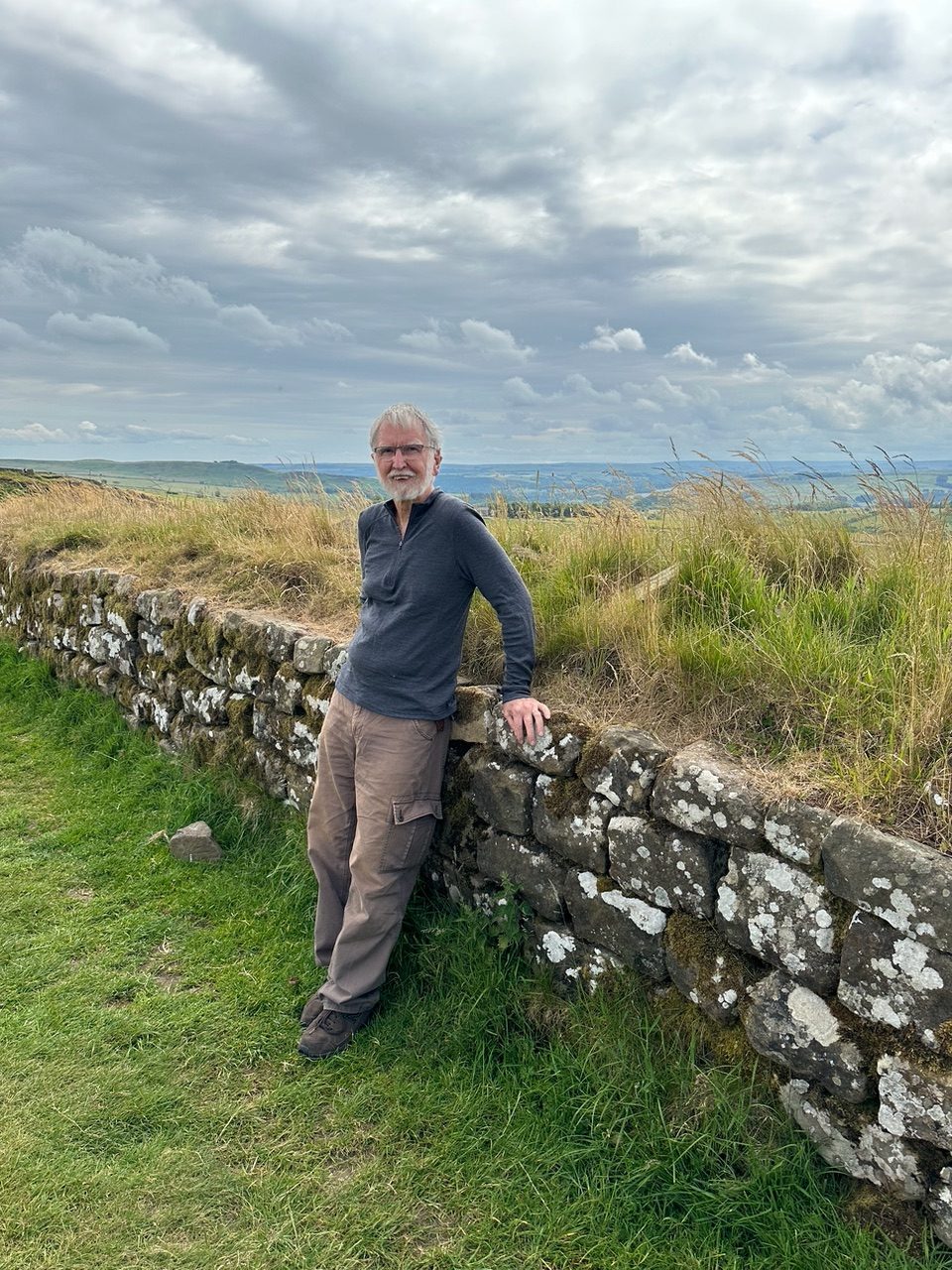
Image: 2023. Michael Macklin at Hadrian Wall
Slide 6. Plato and Aristotle
In Plato’s records of the Socratic Dialogue ‘the Academy’ was the ‘outside communities’, outside of institutional structures. What is important in the question of Conviviality is understanding what is institutional and what is not. The current historical climate is a matter when the academy and outside communities have again collapsed into each other.
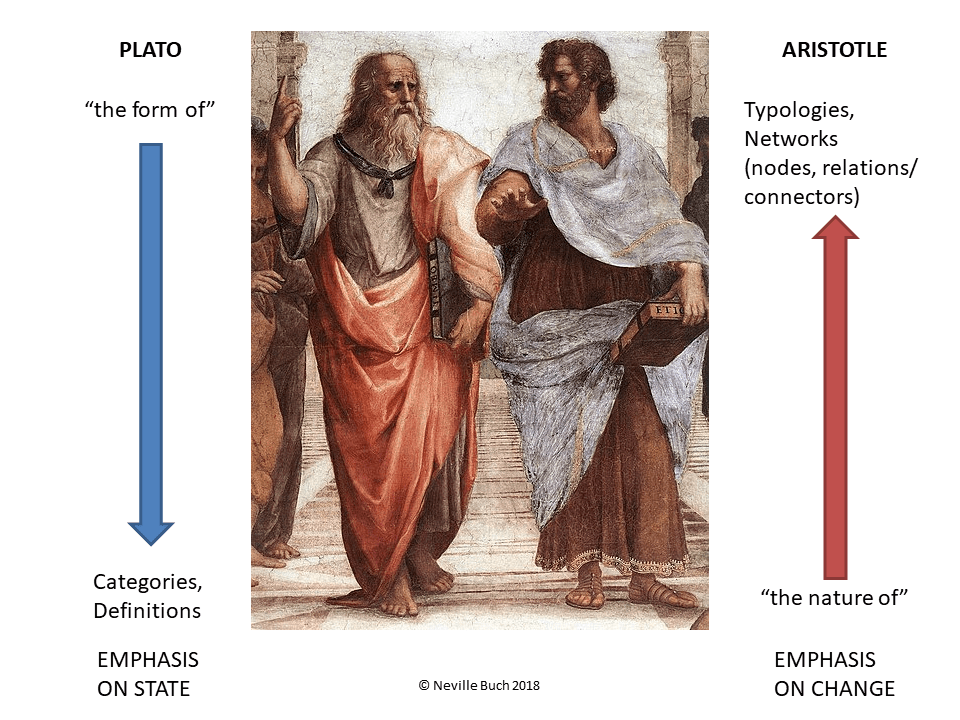
Slide 7. Definitions
This leads to the capacity to map out definitions to understanding the width of contemporary semantics, and this allows us to understand how the academy and outside communities have again collapsed into each other.
The mapping of the definitional table (below) is the fairest approach in the semantic. Most public conversations appear to be guided by the understanding of ‘culture’. It is central. One side of the political spectrum are conversations in, on, against, about, religion and institutions. The side are conversations in, on, against, about, humanity and spirituality. This is the space where semantic misunderstandings occur. It drives the Emotion, Caring, and Conviviality.
A very few scholars truly – that is, the epistemic ‘fit’ – have engaged in local urban sociology with interdisciplinary knowledge. For example, the talk of the sociologists, the Council, and the State show no historical measurement. The political willingness to comprehensively scope is the key to understanding. It is the historiographical methodology of the combined synoptic vision with the geographic concepts of scaling, scoping, and mapping. Synoptic Vision can be obtained. The point of the synoptic consensus is that knowledge is constructed as the human mind. What is achieved is a qualitative measure, bearing in mind that sociological models are artificial; they are not what is normatively assumed as the existence of the natural world. Reality is often said to be ‘natural’ rather than metaphysical, but it is the projection of a cognised pattern. In such case the old ancient-medieval debate of philosophy matters little, and the synoptic knowledge provide the best insights into probable futures.
Table: Definitions for Emotion-Caring-Convivial Urban Sociology
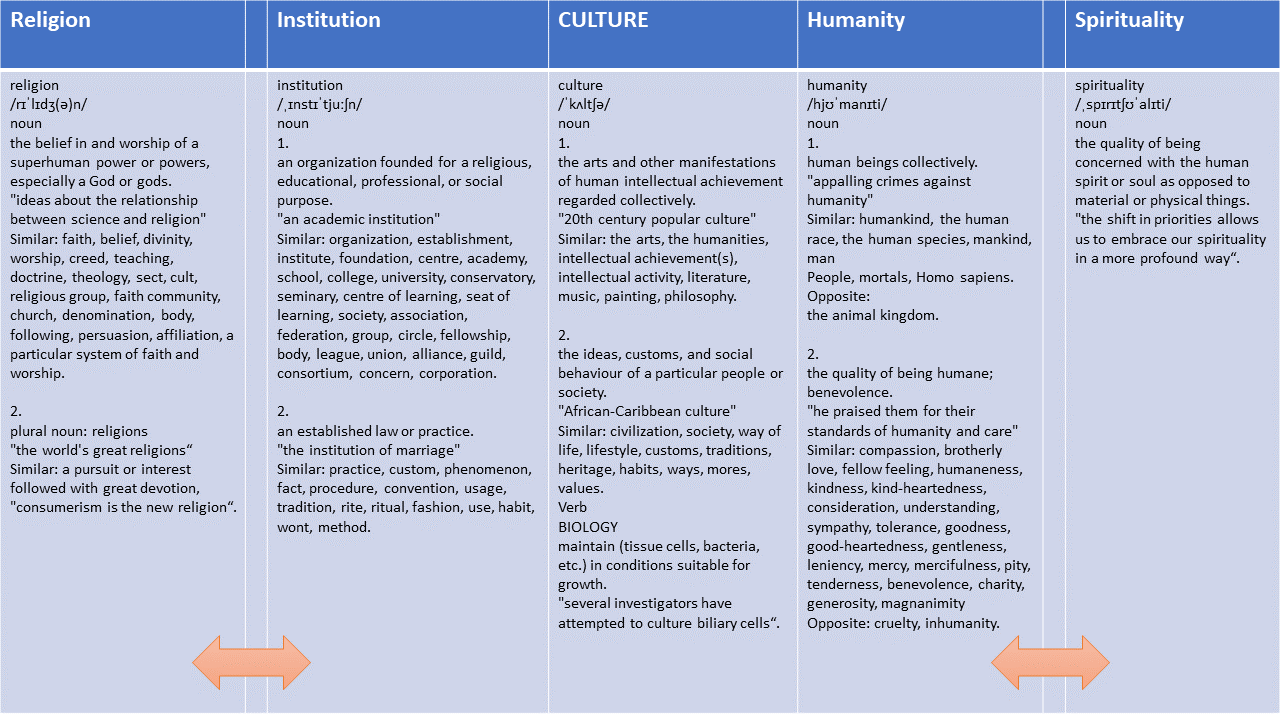
Slide 8. Local-Regional-Global Diagram
The misunderstandings noted also speaks to the context of Globalization, Localism and Transnationalism, producing what the author calls the “Local-Regional-Global Dynamic”. The British sociologist Roland Robertson (1994: 33–52) popularised the term ‘glocalization’, meaning a general cultural sphere by positing the interdependence of local and global processes in the formation of collective identities and symbolic interactions. Whereas the urban was known as city-states in ancient times, states are now known as either regional or global. City-states developed into municipalities during the late medieval ages, giving rise to the European renaissance. Cities are both local and regional. Our life-experience, lebens-philosophie, is a condition of all three: local, regional, global outlooks synthesised as a person’s worldview.
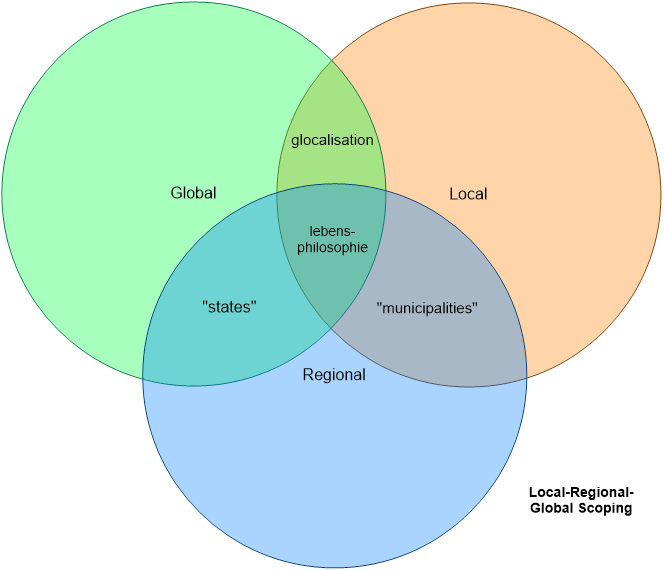
Slide 9. Local-Regional-Global Matrix
The terms, ‘local’, ‘regional’, ‘global’ are merely the descriptions of three types of scopings in the rhetoric or thinking. The relationships are, in different contexts, overlapping, cross-overing, paralleling, and emerging, depending on the activity of the language. The characteristics of the relationships include power, but the language is rich in the description of how we each relate to one another. Institutions and organisations are each better at some characteristics than others. The State needs public interest, as do universities, whereas municipalities continue on without much attention from its residents, until a moment of crisis. There is attitude of expertise shown to the State and municipalities. Each state governance has similarity in goals, what we refer to as policies. Communities, on the other hand, generally, work from harmonious relationships. Community still has structure in that cooperation, which is generally shared with municipalities; until there is a crisis. Municipalities tend to be blindsided in the talk of systematic strategy and quality. Universities have moved in the same direction, but the traditional model for the universities are ideas and practice of perseverance, passion for learning, and opportunities for improving the world. Surprising to some, universities and their local communities share in the values and ethics. Taken altogether, the characteristics provides each person with a worldview in the learning environment.

Image: Local-Regional-Global Matrix
Slide 10. Unitarian-Universalist Diagram
The problem in the academic mindset is its calculating disposition is not relevant to understanding the Universal Mind. It cannot be cut-up into segments of certain percentage. The diagram here (below) is place as the reductio ad absurdum. Outside of mathematics, truths cannot be calculated. Academic narrowness comes from the lack of exposure to Lebensphilosophie. The interdisciplinary discussions between history, philosophy, and sociology are the ‘Synoptic Vision’.
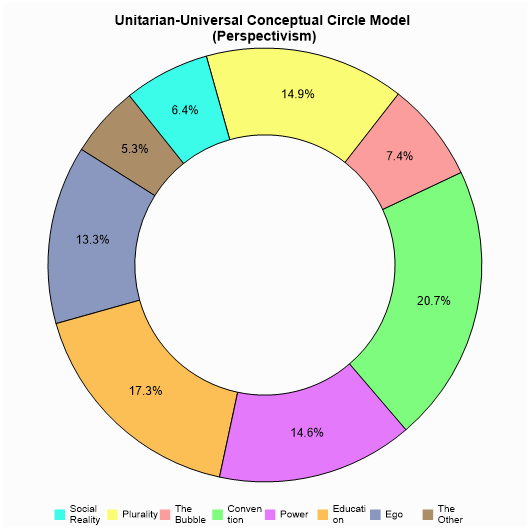
Image: Unitarian-Universal Conceptual Circle
In both religious and secular communities, there is the paradigm of Unitarian-Universalism, which is a movement in thought from Sociology of Knowledge to Sociology of Ideology and Networks (Buch 2017).
Slide 11. Neville Buch’s Philosophy and History
For the sociologist to understand this truth fully, the relationships between categories of Myth, History, and Philosophy have to be explored. Instead of the calculating circle, the process of historical time operates as a model spiral. This is a spiral which begins in the analytic tradition but ends up in the continental. From the grand claims of knowledge to being. The concepts of unity and the universal is a step along the way in thinking matters through, even as we tend to make those concepts the Absolute. However, the reference to unity and the universal is a claim for the method of scoping in and out.

Image: Neville Buch’s Philosophy and History Spiral of Time (the link explains)
Slide 12. Categories in Studies-in-Religion
The discipline of Studies-in-Religion has also aided the change in thinking of the last half-century. European, Anglo, and American philosophers have create a new spiritual learning environment, which some might call religion. There are four broad scoped schools, each with a different model, and includes 14 academic schools of thought. There is a theoretical enculturation model from the Continental tradition and transferred to the United States after World War II. It began in the General Theory with the British schools taken up the continental development. The European experience also included German and French existentialism, which was reworked in Anglo-American pastoral care theories. The political dimension was expressed also in the European theological development of neo-orthodoxy. The Americans reworked the thinking into political realism. This “neo-orthodox” model is now the American mainstream ‘evangelical’ stream. With the emphasis on good news, and living the good life, it has been coopted into the American cultural concept of wealth. Sociologically, the thinking is translated into a priority for a conventional ideal of material reality.
Phenomenology led to debates for ethical internalism and against ethical externalism. There could not be one cultural externality to demand any orthodoxy, and, thus, the cultural pluralism model. The process has come from the academic Left with academic forms of conceptual skepticism; a process shared with earlier existentialist system thinkers. The way to understand the Anglo-American movement of radical ethics and communitarian is, not only its connection to concepts of plurality and democracy, but also with the Moral and Modern Civilisation Model. In contrast to the model, this is the problem for the new type of hypo-conservatism which has existed in politics. The neo-conservativism renounced the moral foundational thinking of civilisation for the sake of “state rights”. In the view of neo-conservatists, the world has not fundamentally or functionally changed, and the historians and sociologists are the ones talking nonsense.
The Modern Civilisation Model is most articulated in contemporary humanism: Humanity has the priority over the State. One specific school is that of ideology and utopia, from Karl Mannheim and Paul Ricoeur in particular. It shares certain characteristics with the old definitional category of religion: visionary or messianic. However, since there is no need for orthodoxy and dogma in the outlook, the movement in studies-in-religion has been moving towards the concept of ‘spirituality’, the Lebensphilosophie of big belief and doubt.
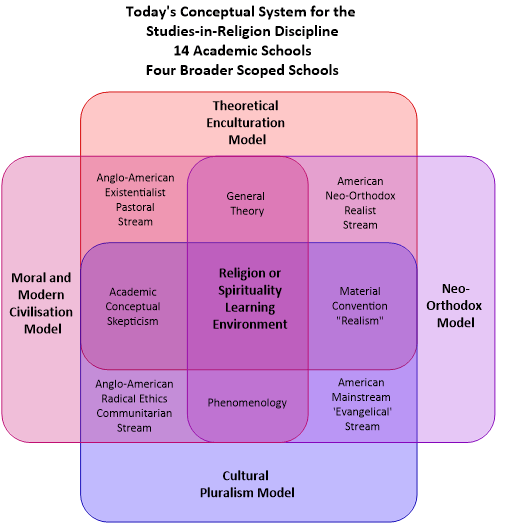
Image: Conceptual Systems for Studies-in-Religion (link explains)
Slide 13. The Sociology Of Municipal Politics Diagram
The “big picture” is more than the sociological modelling and considers the sociology input as a fit in larger interdisciplinary discourses. This is the role of the Southern Brisbane Suburban Forum Inc., which has been operated, for the last few years, as a local group of engineers, government bureaucrats, community development workers, and a sociological-philosophic historian as President (the author). One of the major issues of the Forum has been a battle of the business consultancy, Dr Neville Buch ABN: 86703686642, for the last five years (Buch 2018 b, c). It is a battle where the current political administration of Council has demonstrated both 1) poor historical knowledge of the city, including the history of the Council itself, and 2) poor understanding of the principles and global practices of local heritage. It might be counter-argued (politically) that this is just a generic problem of any council outlook. However, the opposition Councillors in the Brisbane City Council do take a different approach, educated by both the Southern Brisbane Suburban Forum Inc., and the Brisbane Southside History Network.
Community research and education of the Forum and Network is local public service (Buch 2022). The recent climax for the Forum and Network has been challenging the intellectual competence of the Brisbane Lord Mayor on the city’s social and historical questions (Buch 2023a); communication directly to the Mayor. As indicated at the end of the previous paragraph, the expectations of the Mayor and the Council is not utopian. There have been, in the recent history of Council, Lord Mayors highly intelligent on social and historical questions: Sallyanne Atkinson (Atkinson 2016), Jim Soorley (Soorley 1993), and Tim Quinn (Quinn, et al, 2014). After a long period of conventional Council governance, the place of local culture returned with Sallyanne Atkinson (in office 1985-1991) as one of the most intelligent Lord Mayors and the first and only female Lord Mayor of Brisbane. A history graduate, Sallyanne was a good friend to several members of the Department of History at the University of Queensland during her tenure. As an intellectual, the former priest, Lord Mayor Jim Soorley (1991-2003), made “a shift from Brisbane Council being only concerned with ‘rates, roads, rubbish’ to taking on issues such as drug use, homelessness, domestic violence and social justice.” Tim Quinn (2003-2004) followed Soorley’s direction with Urban Renewal being an important intellectual theme, and that connected with the sociology of urban gentrification for the inner-city.
Quinn is today a local history leader on the Brisbane southside. In this work the academy has been significantly absent. At the 2021 Australian Political Studies Association Conference, the author argued the promises of the 1990s local studies field collapsed before the historiographical challenges in the history wars of the Prime Ministership of John Howard, and escalated into the cultural war of the Trump era (Buch 2021b). The argument was recently developed at the Australian Historical Association Conference (Buch 2023a; Australian Catholic University).
The late John Laverty contributed to the intellectual critique of the Brisbane City Council through a very detailed examination of the pre-1925 Brisbane Municipal Council (1859-1902). It seems some of that legacy has continued and some obstructed. The reading of the histories is very mixed. Examining the Council minutes, from 1925 to 1937, there are no references to concepts of the urban, community, nor educational interests, except for rate and tariff exemptions or reductions for educational institutions and applications to show educational films in council-owned halls. Hence, the Council was able to have control over educational processes without making contributions to municipal education. The Local Authorities Association of Queensland was active in the interchange with the Council from 1925. Delegates were appointed from the conference to attend the Association. Competing with those agendas of the association was the Local Government Clerks’ Association (later, Municipal Officers’ Association) and the Local Producers’ Association. The policy of preference for locally manufactured articles for municipal use was there from 1925, but the challenge has been the opportunity for corrupt practices of favourism. In the last quarter of the century the Council did become globally conscious, but again the intellectual outlook was very mixed. The objections from Council when faced with large cultural proposals has centred around an odd argument that education has nothing to do with the affairs of Council.
In contrast to the Brisbane universities and the Council, there are the community organisations. The local history organisations in Brisbane are often led by the Brisbane History Group Inc., and the Royal Historical Society of the Queensland, but the intellectual landscape is also made up of the Brisbane Southside History Network with 16 groups south of the river, and 17 groups on the unnetworked northside. There is a great gap between the Council’s, with the general public’s, understanding of local history, and against the municipal knowledge of local history organisations. Few local sites, though, were thinking through the sociological schemas in terms of the misinformation in the outlook of localism. Local Aboriginal history and sociology has done better, of which Burke, et. al. (2020) is particularly notable.
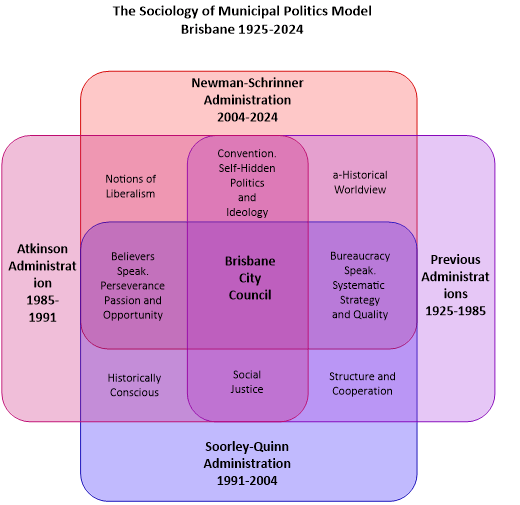
Image: Brisbane City Council Sociology 1925-2024
The local scholarship draws on the global literature, according to different communities, and thus different types of local communities are considering different insights, which unfortunately often does not get to the interdisciplinary scoping. For the local philosophy communities (e.g., The Philosophy Cafe Brisbane Meet Up run by the author), there is a greater understanding of concepts and practices in politics and local conflicts. (e.g., in Rancière 1999). For the local education communities, it is a question of Civic Education (de Jong 2020). Communities of local history and geography are informed on the relationships between social theories and spatiality (e.g., in Gregory 1991). Since the end of the 1980s, locally and globally, those insights became hidden histories in the geography discipline (Howitt 2007). That ignorance was generated deliberately and politically as universities faced decisions to no longer teach increasing small-enrolled sub-fields of contested knowledge, due to funding policies. This has meant an increasing population of university graduates without a wider education in the most update understanding of their society. Such understandings are a threat to governing parties when it has the potential for more forceful opposition. It is for this reason that local ecological communities are struggling. Swyngedouw (2009) speaks of the “antinomies of the postpolitical city”. The challenge for the City is whether the understanding can be resolved as a reasonable and practical solution or whether the ‘postpolitical’ rhetoric will simply cancel out a healthy political and local culture(s). The local, educated, political communities well understand all of these dynamics of knowledge construction. The global literature of the last 30 years which has been locally informative is very large, which is then bewildering on the existence of local, uneducated, political communities; something wilfully unintelligent. Local and global readers – if willing – can see the City as contested space or landscape (Duncan 1990). The relationship between political culture and public sphere has become more apparent (Somers 1995). Populist postmodernist rhetoric has been turned against actual democratic processes (Rogers 2004). By the end of the last decade, arguments on, about, and against populism and localism was well-established (e.g., in Griggs and Howarth 2008). Of the last decade and some, the major themes have been contention, polarisation, and culture war (Mitchell, Attoh and Staeheli 2015; Muste 2014).
Slide 14. Theory
Sociologists, as a general truism, believe that any governance too long in power become corrupt, lose integrity, and generally end up with no effective vision for the future. Change eventually comes but the nature of the change is unknown.
The Conviviality Theme speaks of ‘Social Power’ which has shifted from the academy to outside communities.
These basic ideas draw together the pragmaticism of Mead, John Dewey, and other sociologists, such as C. Wright Mills and his 1956 book: The Power Elite, as well as the hermeneutic philosophy of Charles Taylor and Paul Ricoeur. What brings this interdisciplinary ‘fit’ together is the importance of Language and Power as both structure and persons. This is an understanding for the locality, as much as for the world.

Image: Sociological Power and Theory Mapping (the link explains)
There is in indigenous perspectives a good understanding of misleading fear and conflict narratives. Among the non-indigenous population, local scholars (Caulfield and Wanna 1995; Davis 1995), in the mid-1990s, were developing applied theories in the perspectives of power and community which laid down the groundwork of the urban sociology for this paper. More recently, local scholars have been turning to the concept of social representations in Brisbane newspapers (Raynor, Matthews, and Mayere 2017). In all of these works are debates on urban consolidation. This is where the politics enters; with the need to have a singular messaging in the public relations (“PR”) rhetoric. However, Lebensphilosophie – actual lived experience in the City – is nothing like the messaging. The recent movement towards the March 2024 Brisbane City Council elections is bearing out the oppositional argument with Green’s candidate for Mayor, Jonathan Sriranganathan, in the running (Sullivan 2022). Nicole Johnston, independent Councillor for Tennyson, is also a representative of the better urban sociology outlook. That outlook is the Synoptic Vision.
Slide 15. A Persons’ Worldviews
There are three points to be made on municipal governance in Brisbane. The first point is to understand the semantics of ‘common sense’ judgements: it is not necessarily ‘common’ nor ‘sense’ to the populace. Scholarship, not populist or academic politics, is what matters. The second point is the interdisciplinary approach that Kleidman (2006: 68-82) seeks to design for sociology research: creating synergies between professional and engaged social science. The third point comes out of my interdisciplinary research on the works of European and American modernism: in particular, applied philosophers Charles Taylor and Paul Ricoeur, and sociologist George Herbert Mead. The thinkers are indebted to Hegel and basic idealism which, contra the positivistic critical claims, have always girted the disciplines of history, social geography, and sociology.

Image: Mind’s Eye of a Personal Horizon Worldview (link explains)
Slide 16. Deepen Understanding
The intellectual outlook of the city’s residents shapes policies in the urban sociology, and, as such, is a way forward: to 1) understand the semantics of ‘common sense’ judgements; 2) adopt the interdisciplinary approach; and 3) take seriously the sociologically-interpreted European-Anglo-American histories in describing our current modernism(s). This is our compatibilist progressivism for suburban sustainable living.

Image: The Interdisciplinary Model: Interrelation-of-Ideas-on-Consciousness-and-Reality (link explains)

BIBLIOGRAPHY
2022 Glasgow Declaration of Modern Humanism
Atkinson, Sallyanne (2016). No job for a woman, St Lucia, Queensland : University of Queensland Press.
Avant, Gayle (1975). Review of Tools for Conviviality by Ivan Illich, The American Political Science Review, 69(3), 999-1000.
Banks, J. A. (1989). From Universal History to Historical Sociology, The British Journal of Sociology, 40(4), 521–543. https://doi.org/10.2307/590887
Buch, Neville (1995). American Influence on Protestantism in Queensland since 1945, Ph.D. thesis, Department of History, University of Queensland, August 1994, Awarded April 1995.
Buch, Neville (2017). Historical Sociology Thesis, academia.edu .
Buch, Neville (2018a). Small is Big: Scaling the Map for Brisbane Persons and Institutions 1825-2000. ‘The Scale of History’ AHA Conference, Australian National University, 4 July 2018.
Buch, Neville (2018b). Looking to the Future for the Past Business Case, , Dr Neville Buch ABN: 86703686642.
Buch, Neville (2018c). NDB-TWIM-BP Concept Plan for Brisbane City Council, Dr Neville Buch ABN: 86703686642.
Buch, Neville (2019). Mapping Local Educated Society 1859-2009: Landscape and Culture in the Mapping Brisbane Education Project, Port Macquarie Campus, Charles Stuart University, 21 November 2019.
Buch, Neville (2021a). Melbourne, Brisbane Southside, and Urban Development, Dr Neville Buch ABN: 86703686642 (https://drnevillebuch.com/melbourne-brisbane-southside-and-urban-development/).
Buch, Neville (2021b). Politics in the Age of Uncertainty: Anti-intellectualism, Expertise, and the Technological Agenda in Queensland Politics, 1911-2011, a paper of local-regional relevance, Australian Political Studies Association Annual Conference, 21 September 2021.
Buch, Neville (2022). History and Practice of Community Education No. 1., Dr Neville Buch ABN: 86703686642.
Buch, Neville (2023a). Whither Local History Paper, Australian Historical Association, Melbourne, Australian Catholic University.
Buch, Neville (2023b). SBSF Submission as Feedback on Kurilpa Sustainable Growth Precinct, Southern Brisbane Suburban Forum Inc., and Dr Neville Buch ABN: 86703686642.
Burke, H., Kerkhove, R., Wallis, L. A., Keys, C., & Barker, B. (2020). Nervous nation: Fear, conflict and narratives of fortified domestic architecture on the Queensland frontier, Aboriginal History, 44, 21–58. https://www.jstor.org/stable/27018598
Caulfield, Janice and John Wanna, (1995). Power and community: theoretical approaches, Power and Politics in the City: Brisbane in Transition, 1-17,280-302.
Cook, M. (2017). Vacating the Floodplain: Urban Property, Engineering, and Floods in Brisbane (1974-2011). Conservation and Society, 15(3), 344–354. http://www.jstor.org/stable/26393302
Cook, Margaret (2019). A River with a City Problem: A History of Brisbane Floods, University of Queensland Press.
Davis, Glyn (1995). Power and politics in the city: conclusion, Power and Politics in the City: Brisbane in Transition, 267-279,280-302.
de Jong, W. (2020). Civic Education and Contested Democracy: Towards a Pedagogic State in the Netherlands Post 1945, Palgrave.
Duncan, J. (1990). The City as Text: The Politics of Landscape Interpretation in the Kandyan Kingdom, Cambridge University Press.
Gibilisco, Peter (2023). Our mutual obligations in a mutually dependent society, John Menadue’s Public Policy Journal, 18 October 2023.
Finlayson, Laura (2023). The sycophant, Pearls and Irritations: John Menadue’s Public Policy Journal, Republished from the Newleftreview.org, 21 September 2023. (https://johnmenadue.com/the-sycophant/)
Fisher, Rod and Barry Shaw (edited, 2010). Brisbane: Houses, Gardens, Suburbs and Congregations, Papers of Brisbane History Group (22), 197-214, 296-298, 304-311.
Frauley, Jon (2017). Synoptic Vision, The Canadian Journal of Sociology / Cahiers canadiens de sociologie , 42(3), 293-324.
Fuhrman, Susan H. and Richard F. Elmore (1990). Understanding Local Control
Furedi, Frank (2023) Power Play: who really rules today, Roots & Wings email newsletter, 28 October 2023.
Galuszka, J. (2019). What makes urban governance co-productive? Contradictions in the current debate on co-production. Planning Theory, 18(1), 143–160. https://www.jstor.org/stable/26677440
Gregory, Derek (1991). Interventions in the Historical Geography of Modernity: Social Theory, and the Politics of Representation, Geografiska Annaler (Swedish Society for Anthropology and Geography), Series B, Human Geography, 73(1), 17–44. www.jstor.org/stable/490924.
Griggs, S. and Howarth, D. (2008). Populism, Localism and Environmental Politics: The Logic and Rhetoric of the Stop Stansted Expansion Campaign, Planning Theory, 7(2), 123–144. http://www.jstor.org/stable/26004248
Gunn, S. (2004). Class, identity and the urban: the middle class in England, c.1790-1950, Urban History, 31(1), 29–47. http://www.jstor.org/stable/44613439
Howitt, Richard (2007). Hidden histories in geography : a politics of inclusion and participation, Gender, Place and Culture – A Journal of Feminist Geography, 14(1), 51-56.
Kanaris, Jim (2023). Toward a Philosophy of Religious Studies: Enecstatic Explorations, SUNY Press.
Kleidman, Robert (2006). “Public Sociology, Engaged Scholarship, and Community Organizing,” Journal of Applied Sociology, 23(1), 68–82. www.jstor.org/stable/43736125.
Lawson, Ronald (1980) Towards Demythologizing the “Australian Legend”: Turner’s Frontier Thesis and the Australian Experience, Journal of Social History, 13 (4), 577-587.
Lea, Gary R. (2020). Constructivism and its risks in artificial intelligence, Prometheus, 36(4), 322-346.
Lee, G., Marriot, M., & Jones, C. F. (2009). Brisbane Foreshore Parklands. Landscape Architecture Australia, 123, 58–63. http://www.jstor.org/stable/45141435
Lesh, James (2023). Values in Cities: Urban Heritage in Twentieth-Century Australia, Routledge.
Megill, Allan (2009). The Needed Centrality of Regional History, academia.edu .
Mišina, Dalibor (2015). Who Now Needs Sociology? Transdisciplinarity Vs. Tradition, The Canadian Journal of Sociology / Cahiers Canadiens De Sociologie, 40(4), 527–546. www.jstor.org/stable/canajsocicahican.40.4.527.
Mitchell, D., Attoh K. and Staeheli L. (2015). Whose city? What politics? Contentious and noncontentious spaces on Colorado’s Front Range, Urban Studies, 52: 2633–2648.
Mullins, P and University of Queensland. Department of Anthropology and Sociology Brisbane Northern Freeway impact study : social consequences. Special report no. 2, Social implications of the Brisbane Northern Freeway. the Dept, St Lucia, 1976.
Mullins, P and University of Queensland. Department of Anthropology and Sociology Brisbane Northern Freeway impact study : social consequences. Special report no. 4, Network structure and political mobilisation : the case of a Brisbane urban social movement. the Dept, St Lucia, 1976.
Mullins, Patrick & University of Queensland. Dept. of Sociology and Anthropology (1976). Residents and the Brisbane northern freeway: the pre-location situation. Dept. of Anthropology and Sociology, University of Queensland.
Mullins, Patrick (1979). The Struggle against Brisbane’s Freeways, 1966-1974: An Australian Case Study of Urban Development, Residential Life and Urban Politics, Department of Anthropology and Sociology, University of Queensland, Ph.D. Thesis
Mullins, Patrick (1979). Women and the struggle against Brisbane’s freeways, Australian and New Zealand Journal of Sociology. 15 (Mar 1979), 43-49.
Mullins, Patrick & West, Mark (1998). Windsor twenty-five years on: the continuing presence of a 1970s freeway plan in inner Brisbane, Urban Policy and Research. 16 (3), 199-210.
Muste, C. P. (2014). Reframing Polarization: Social Groups and “Culture Wars”, PS: Political Science and Politics, 47(2), 432–442. http://www.jstor.org/stable/43284567
Nicholls, D. (1985). The English Middle Class and the Ideological Significance of Radicalism, 1760-1886, Journal of British Studies, 24(4), 415–433. http://www.jstor.org/stable/175474
Ormerod, E., & MacLeod, G. (2019). Beyond consensus and conflict in housing governance: Returning to the local state. Planning Theory, 18(3), 319–338. https://www.jstor.org/stable/26759191
Perry, B. (2011). Universities and Cities: Governance, Institutions and Mediation. Built Environment, 37(3), 244–259. http://www.jstor.org/stable/23290044
Piovani, Juan (2023). The Idea of Conviviality and Its Methodological Implications, 2023 International Sociology Association (ISA) World Congress abstracts, Melbourne, Australia.
Quinn, Tim, et. al. (2014). Walking with the water rats : … Kurilpa Point to Davies Park and beyond, Department of Environment & West End Making History Group.
Rancière, J. (1999). Dis-Agreement: Politics and Philosophy. Minneapolis, MN: University of Minnesota Press.
Raynor, K., Matthews, T., & Mayere, S. (2017). Shaping urban consolidation debates: social representations in Brisbane newspaper media, Urban Studies, 54(6), 1519–1536. https://www.jstor.org/stable/26151428
Ritzer, George (1993). The McDonaldization of Society: an investigation into the changing character of contemporary social life, Pine Forge Press.
Robb, Arlene (2005). House on the Hill, House in the Valley: the influence of topography on Brisbane suburban fabric, The University of Queensland, School of Geography, Planning and Environment Management.
Robertson, Roland (1994). Globalization: Social Theory and Global Culture, Sage.
Robinson, G. M. (1994). Instant urban development: Brisbane’s South Bank Parklands. Geography, 79(3), 269–271. http://www.jstor.org/stable/40572581
Rogers, Melvin L. (2004). Rortys Straussianism Or Irony Against Democracy, Contemporary Pragmatism, 1(2), 95-121.
Schmidt, T. (1998). An Environment Behaviour Approach to Public Space Design: The Study of Two Urban Spaces in Brisbane. Landscape Australia, 20(3 (79), 240–245. http://www.jstor.org/stable/45144522
Searle, G., & Bunker, R. (2010). Metropolitan strategic planning: An Australian paradigm? Planning Theory, 9(3), 163–180. http://www.jstor.org/stable/26004259
Sellars, Wilfrid (1963, 2017). Science, Perception and Reality, Ridgeview Publishing Company.
Sharma, P. C (1986). Brisbane: some aspects of its social geography, Queensland Geographical Journal Surveys, 272-295.
Somers, Margaret R. (1995). What’s Political or Cultural about Political Culture and the Public Sphere? Toward an Historical Sociology of Concept Formation, Sociological Theory, 13(2), 113–144. www.jstor.org/stable/202157.
Soorley, Jim (1993)., Griffith University. Institute for Cultural Policy Studies and City Cultures Conference (1992 : Brisbane). The body, mind and spirit of the city : towards cultural planning. Institute for Cultural Policy Studies, Faculty of Humanities, Griffith University, Nathan, Qld.
Steger, Manfred B. and Paul James (2015). Globalization Matters: Engaging the Global in Unsettled Times, Cambridge University Press.
Sullivan, Zach (2022). Student film documentary – -Jonno- – YouTube. (https://www.youtube.com/watch?v=tj-YCAVz9Yc)
Sushinsky, J. R., Rhodes, J. R., Shanahan, D. F., Possingham, H. P., & Fuller, R. A. (2017). Maintaining experiences of nature as a city grows. Ecology and Society, 22(3). http://www.jstor.org/stable/26270160
Swyngedouw, E. (2009). The antinomies of the postpolitical city: In search of a democratic politics of environmental production, International Journal of Urban and Regional Studies, 33: 601–620.
Taborda, C., & Bennetts, P. (2020). A paradoxical nature: Roma Street Parkland. Landscape Architecture Australia, 165, 40–41. https://www.jstor.org/stable/48564024
Takeifanga, Toa K. (1996). The middle classes and the gentrification of Inner Brisbane. The University of Queensland, School of Social Science, Master’s Thesis.
Temby, Anna (2024). Governance and Public Space in the Australian City: Negotiating Public Order in Brisbane, 1875–1914, Routledge.
Vanderby, Nikita, et al (2023). Making Public Histories. Australian History Beyond the University, Council of Australian University Librarians Open Educational Resources Collective.
Walters, P., & McCrea, R. (2014). Early Gentrification and the Public Realm: A Case Study of West End in Brisbane, Australia, Urban Studies, 51(2), 355–370. http://www.jstor.org/stable/26145720
Woodward, Ian (2003). Divergent narratives in the imagining of the home amongst middle-class consumers: aesthetics, comfort and the symbolic boundaries of self and home, Journal of Sociology, 39 (4), 391(22).
Featured Image: A road sign with the word hope ahead with rainbow and clouds in the background. 22268416 © Valentin M Armianu, Dreamstime.com



















































